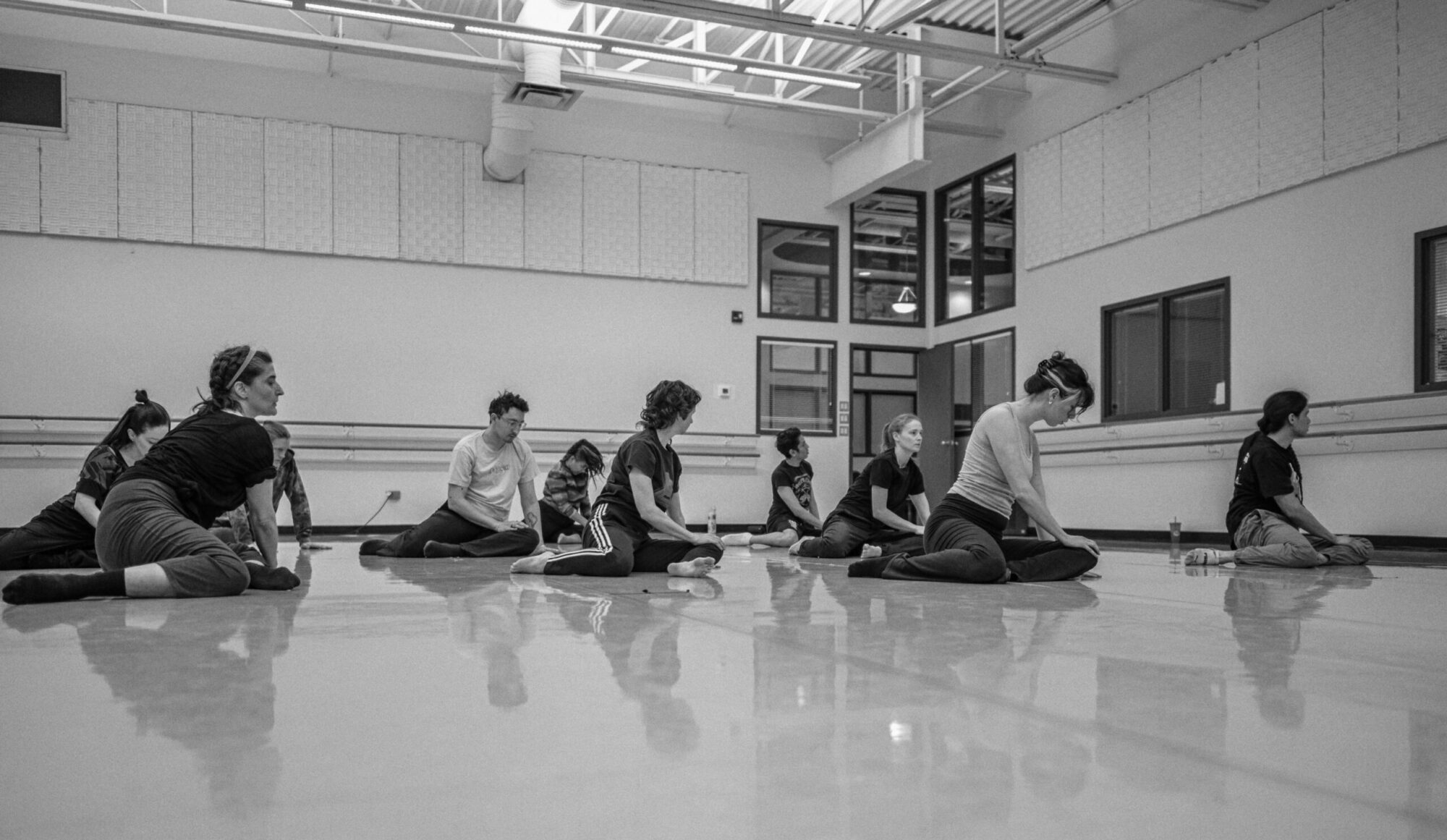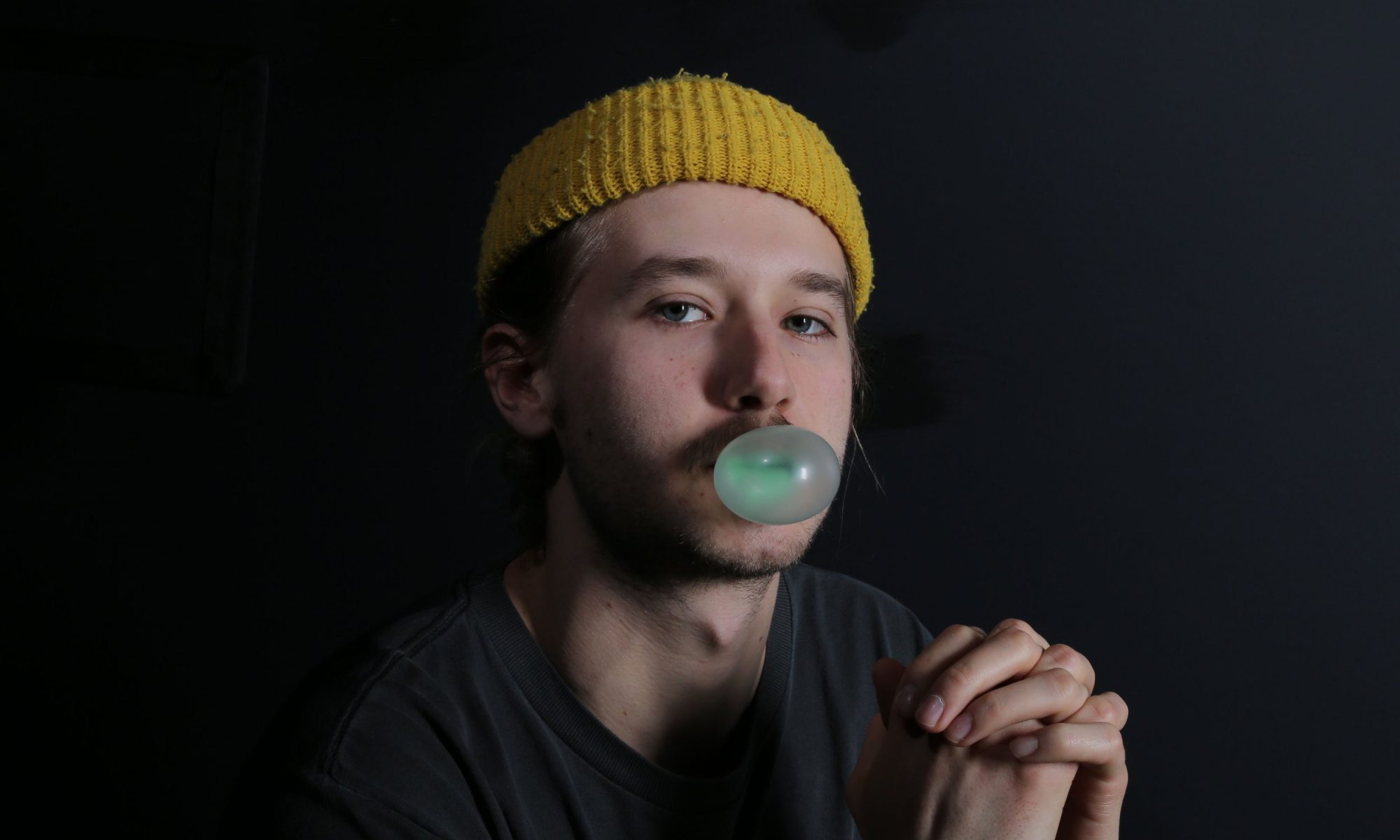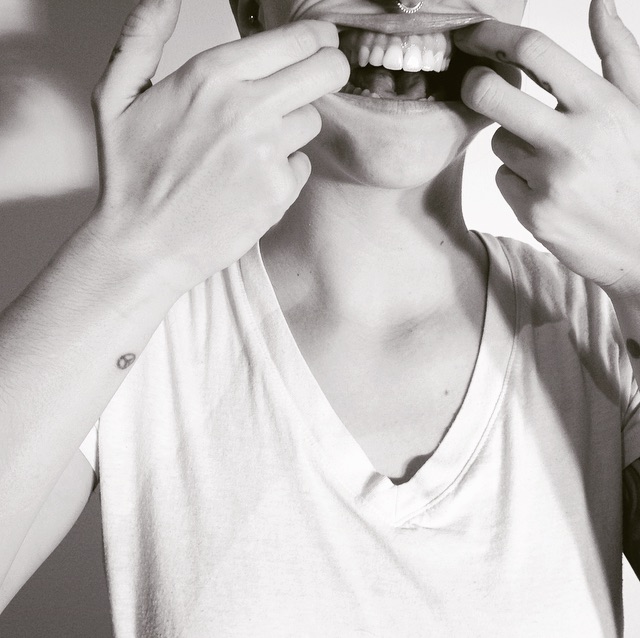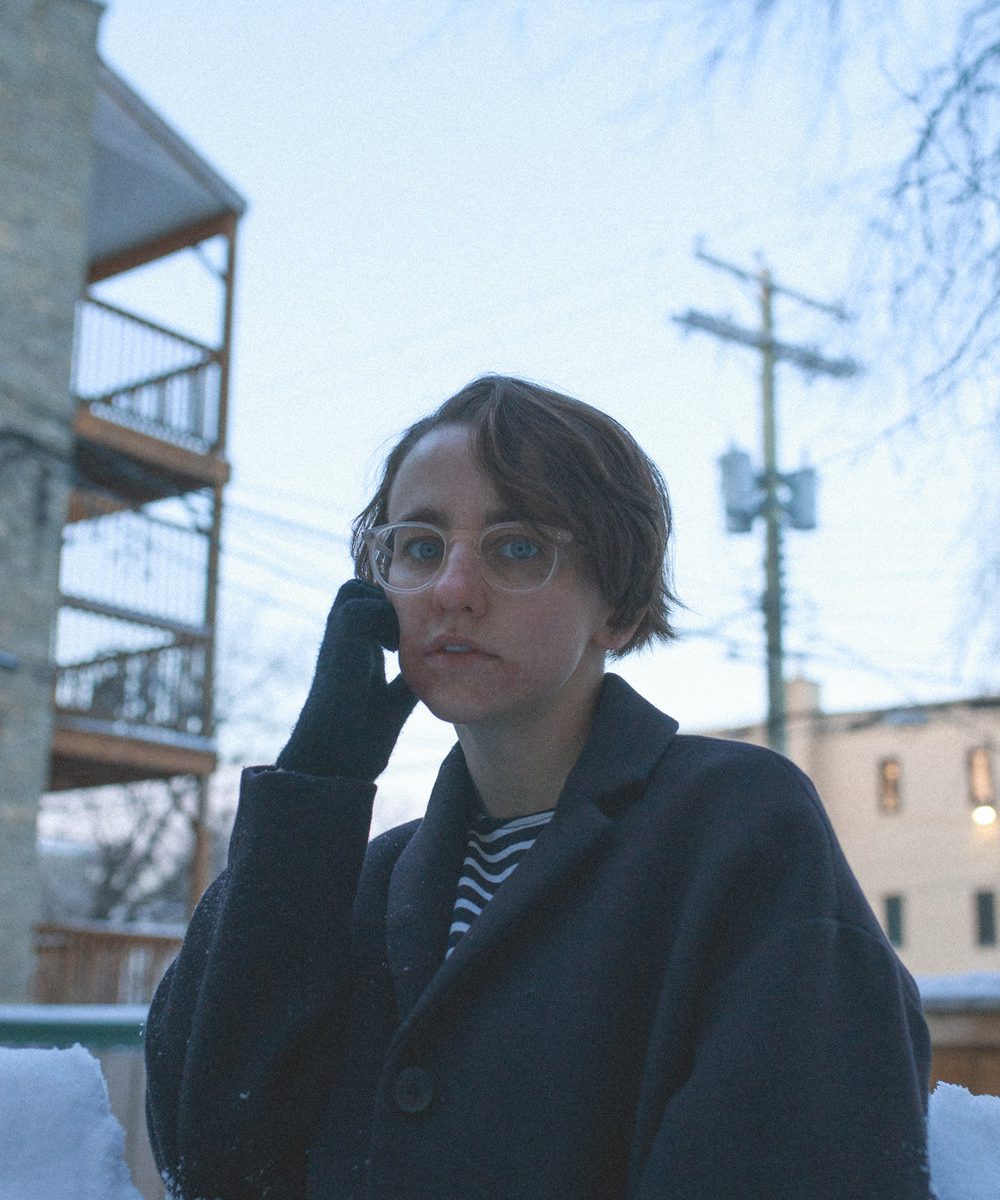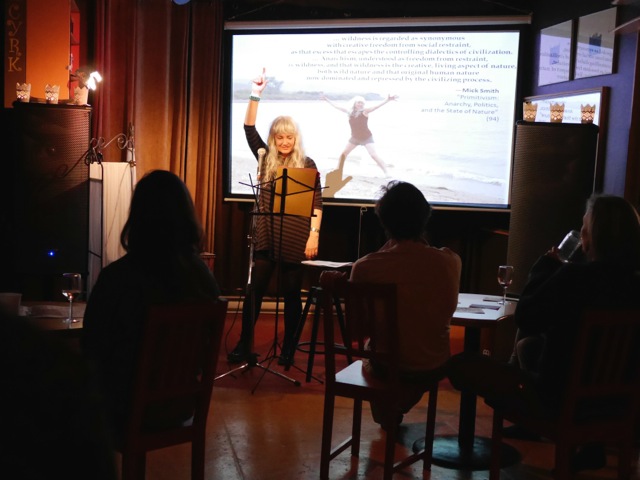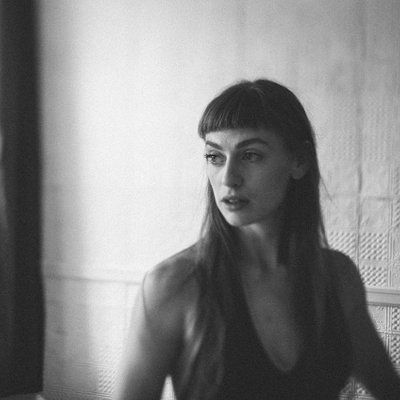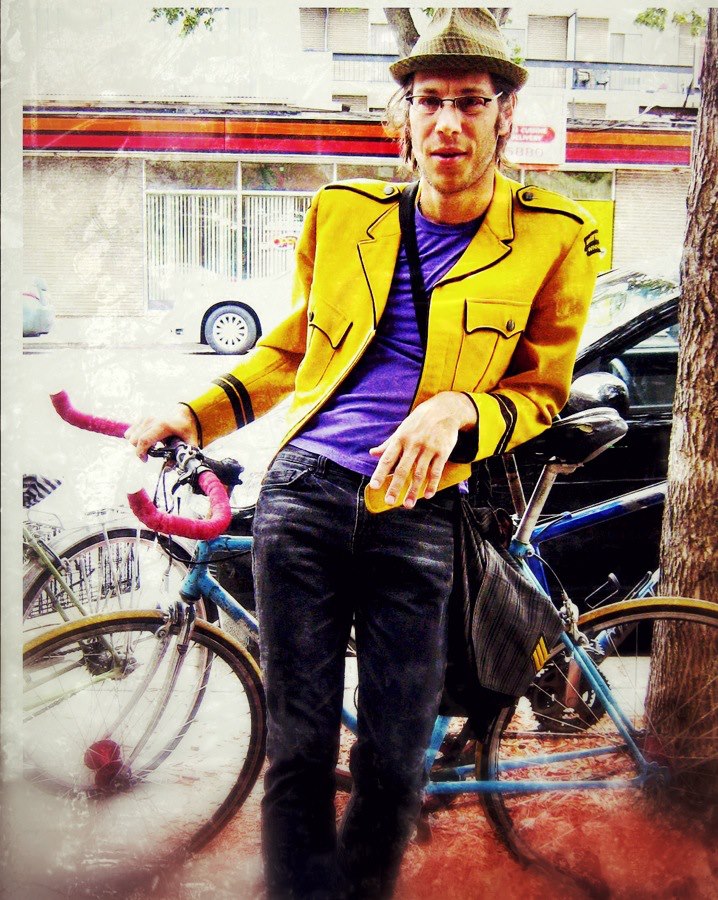A Written Workshop
by Jaz Papadopoulos
Pick something. Something you can do with your body. Something easy.
Something easy you can do with your body.
Something easy you can do with your body every day.
drink a glass of water say hi to yourself in the mirror look out the window and count to
ten do you favourite stretch for five breaths read one page of a book sign a song light a
candle light two candles light three candles light four candles and say your
grandparents’ names say your own name say all your names learn all your names so
that you can say them every day
For the first week (or so),
Your body will learn the thing.
You will remember to breathe while you’re doing it.
You will feel cool air in your nose and warm air on your lip and growing and shrinking
space inside your chest and back and stomach and diaphragm.
You will see your hands move or you will hear your weight pushing out of your feet.
You will learn where your floor creaks and where the dust in your home hides.
For the first week (or so),
Try to do the thing the same way every time.
You will wonder which hand you use
or which way you hold the glass
or which candle you light first.
You will notice patterns:
Where you focus your eyes,
and the rhythm of your breath.
If the floor creaks change, you can’t control it.
After the first week (or so — I’m no expert),
All of those first week noticings will become old hat.
They are easy now, and they just happen that way.
That same way.
Now you will notice new things.
What is the shape of your spine?
When you breathe, your shoulders move too.
You have so many more muscles than you realized.
You can slowly learn where they live and what they answer to.
Something easy you can do with your body every day.
It’s still not always easy.
Tape a piece of paper to the wall
and on the days you don’t want to do the thing,
write on the paper why not.
(Then, you will be free to do the thing.)
After some weeks (or so),
Think about:
- all the other times you did the thing
- all the other people who do the thing
- all the other people who have ever done the thing
Think of the thing like mycelium
All of the enactments of the thing that have ever happened anywhere on this earth over
millennia —
they can communicate.
Your thing secretly knows all those other things.
And,
secretly,
you do too.
Visual Essay
September – November 2017 Research Series Visual Essay
by Michelle Panting
Davis Plett with Rachelle Bourget
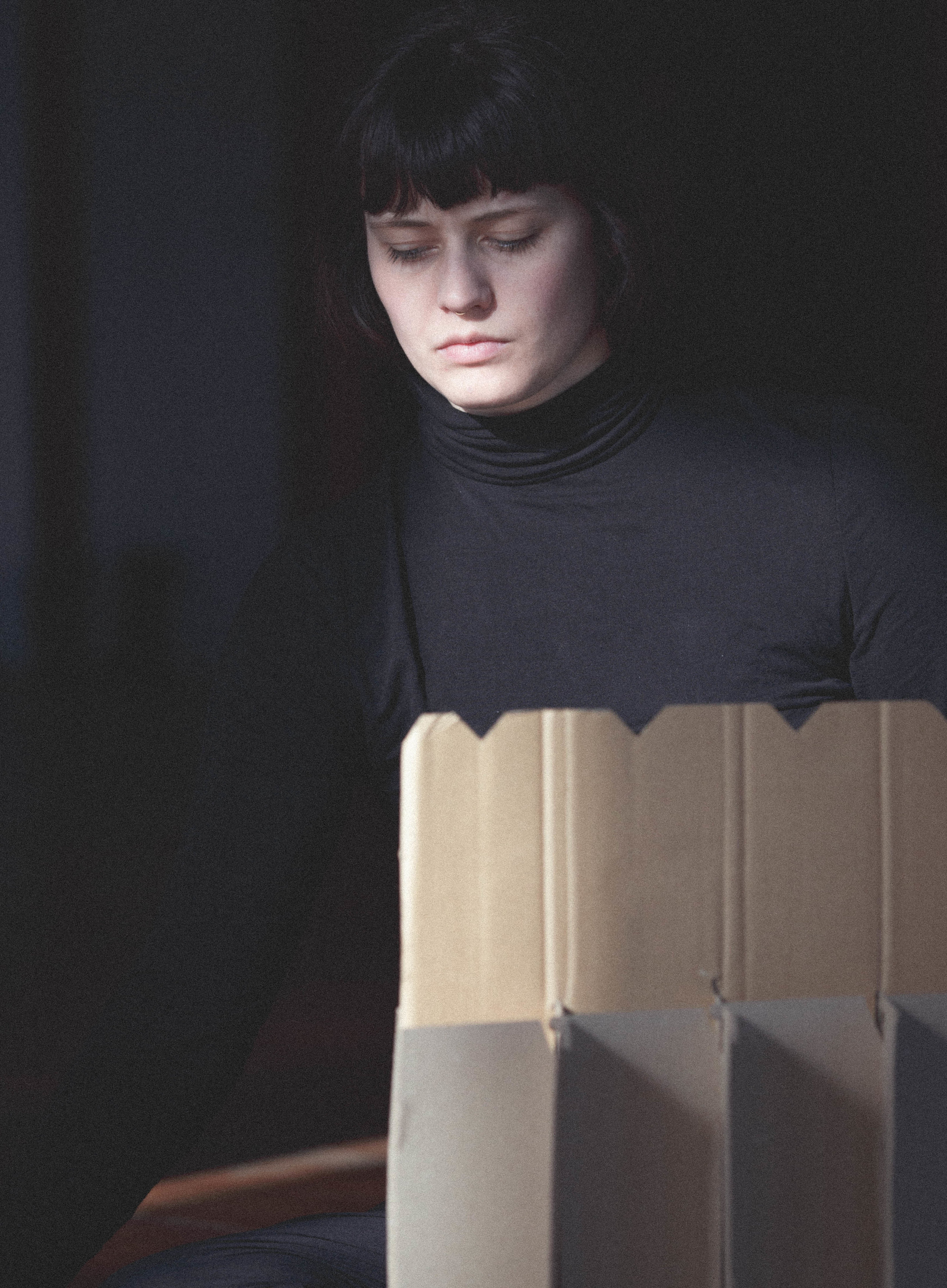
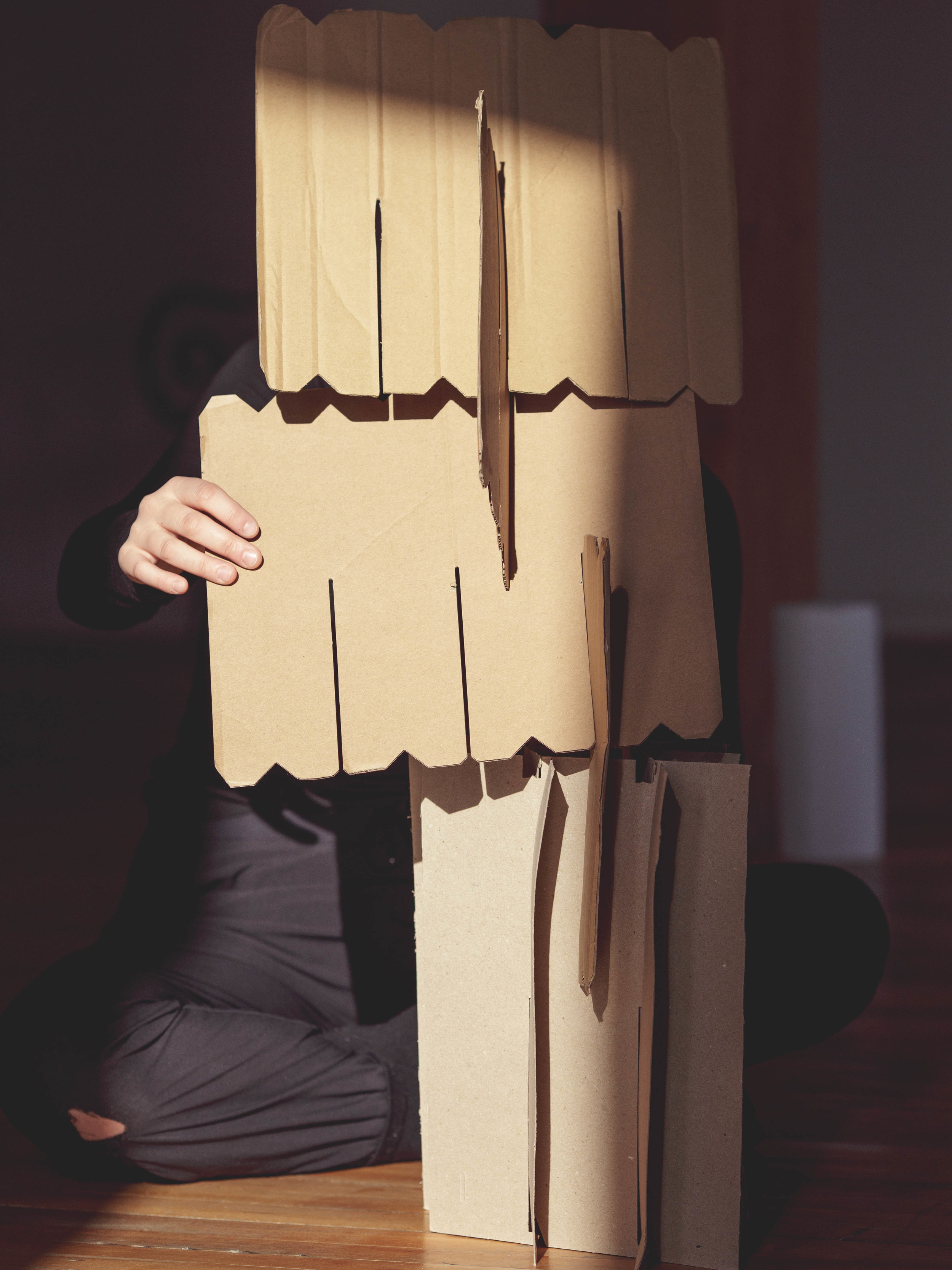
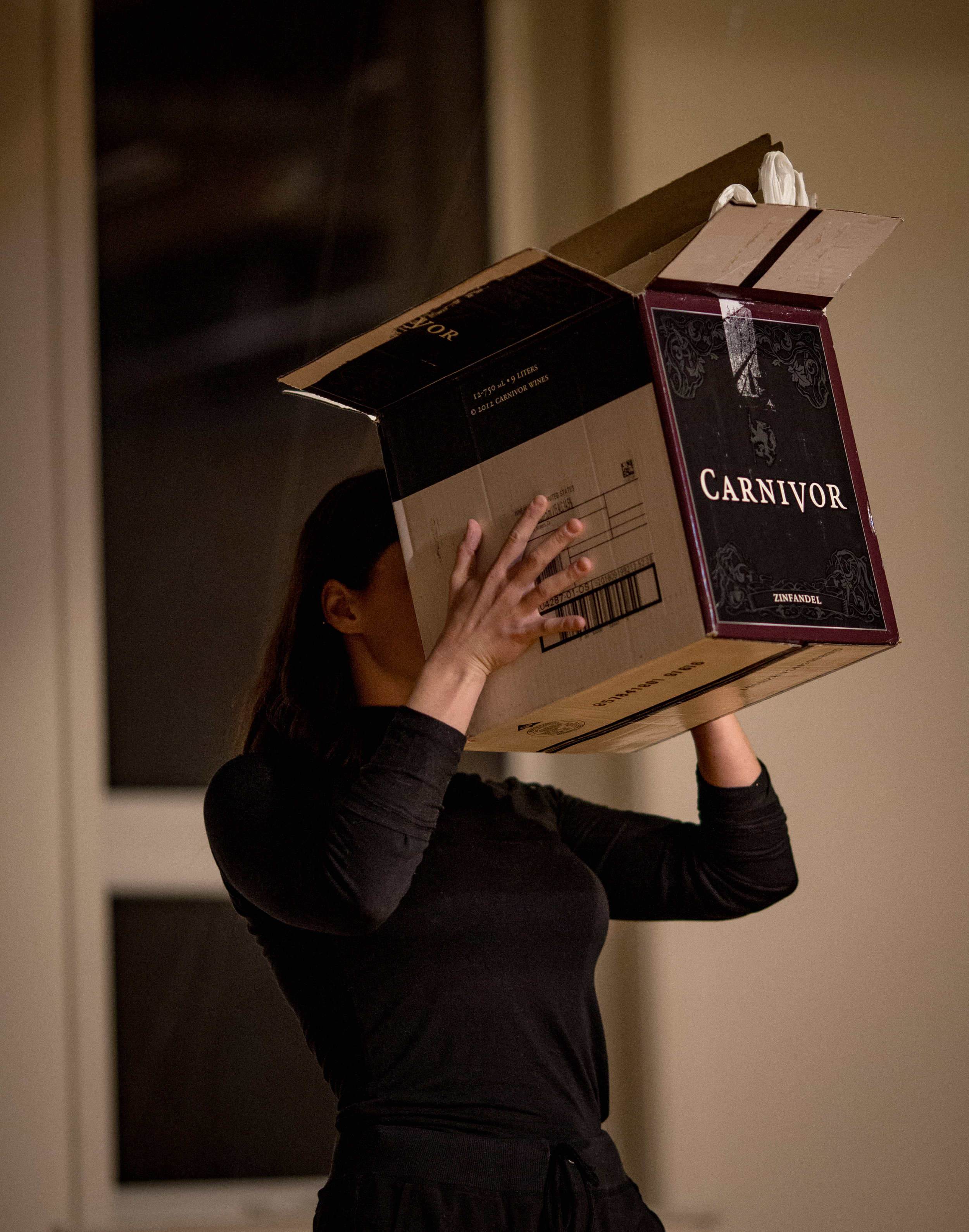
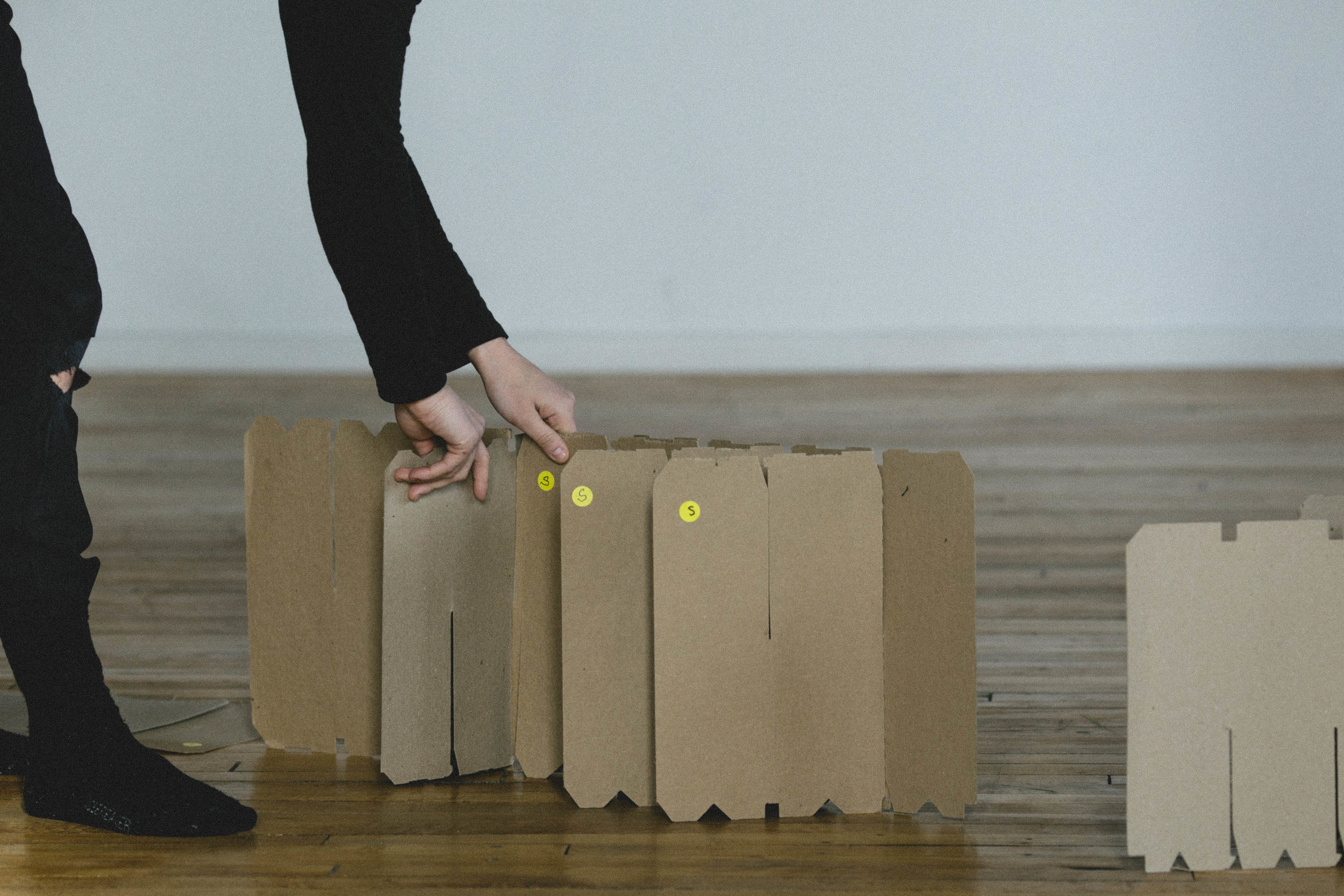
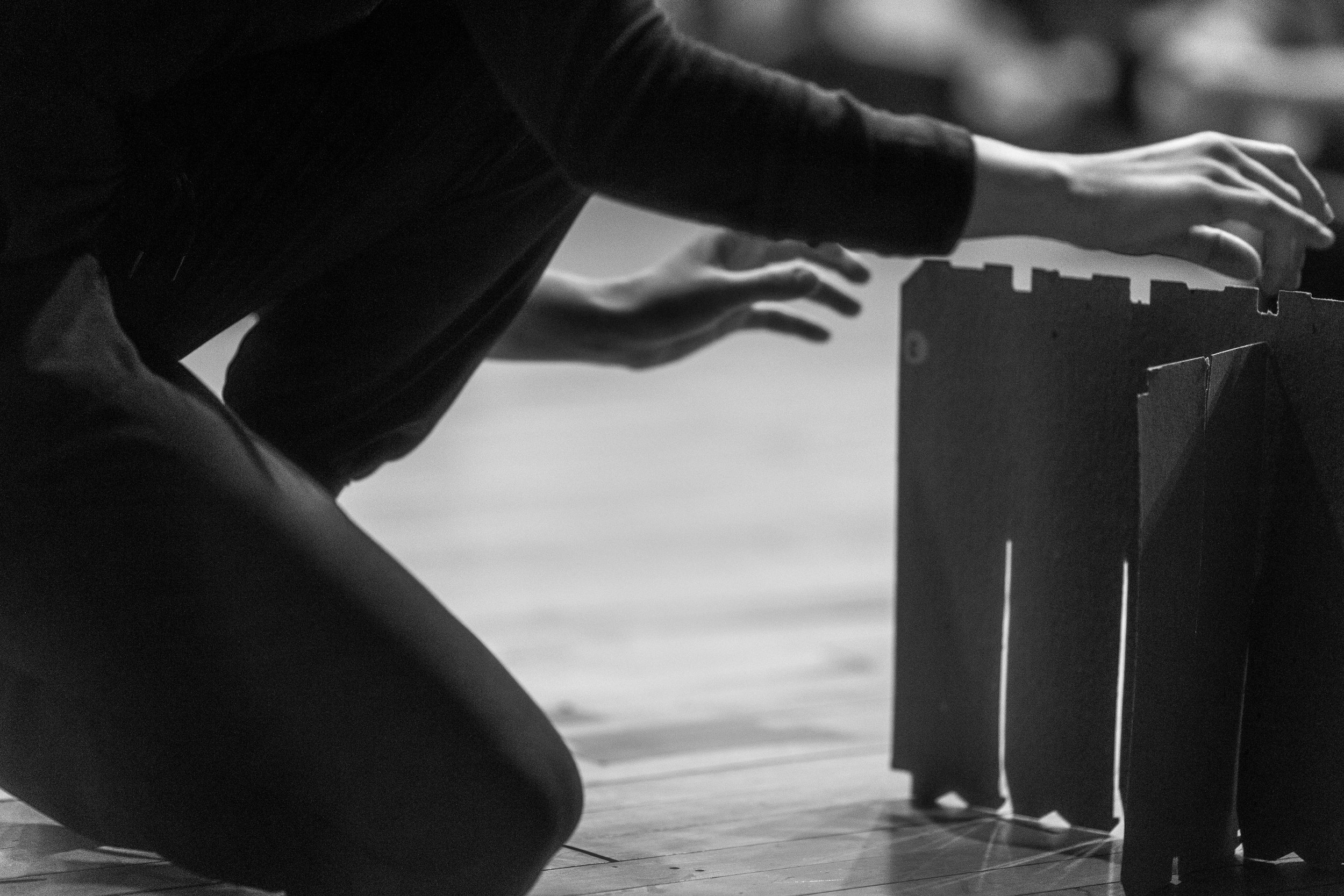
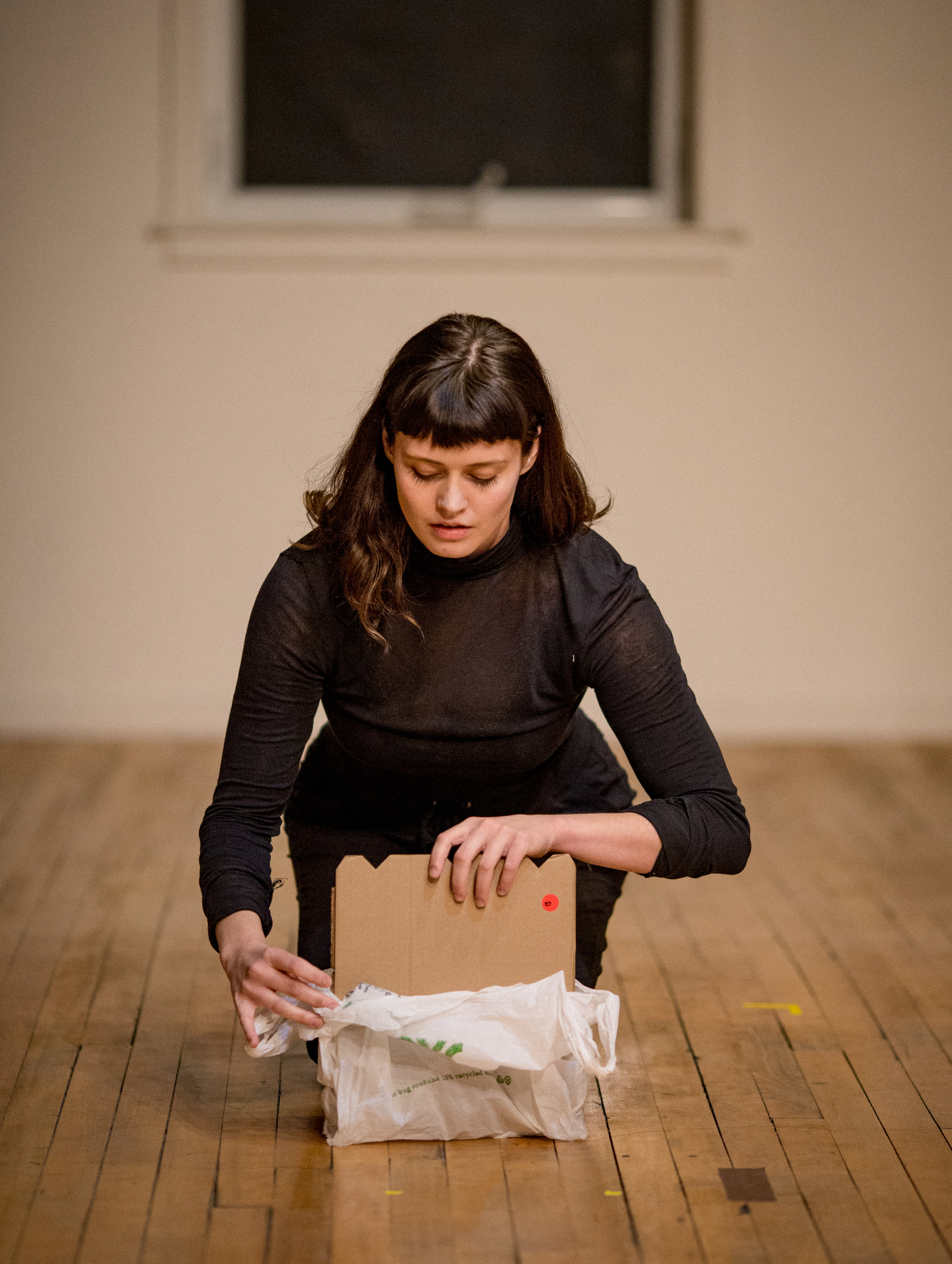
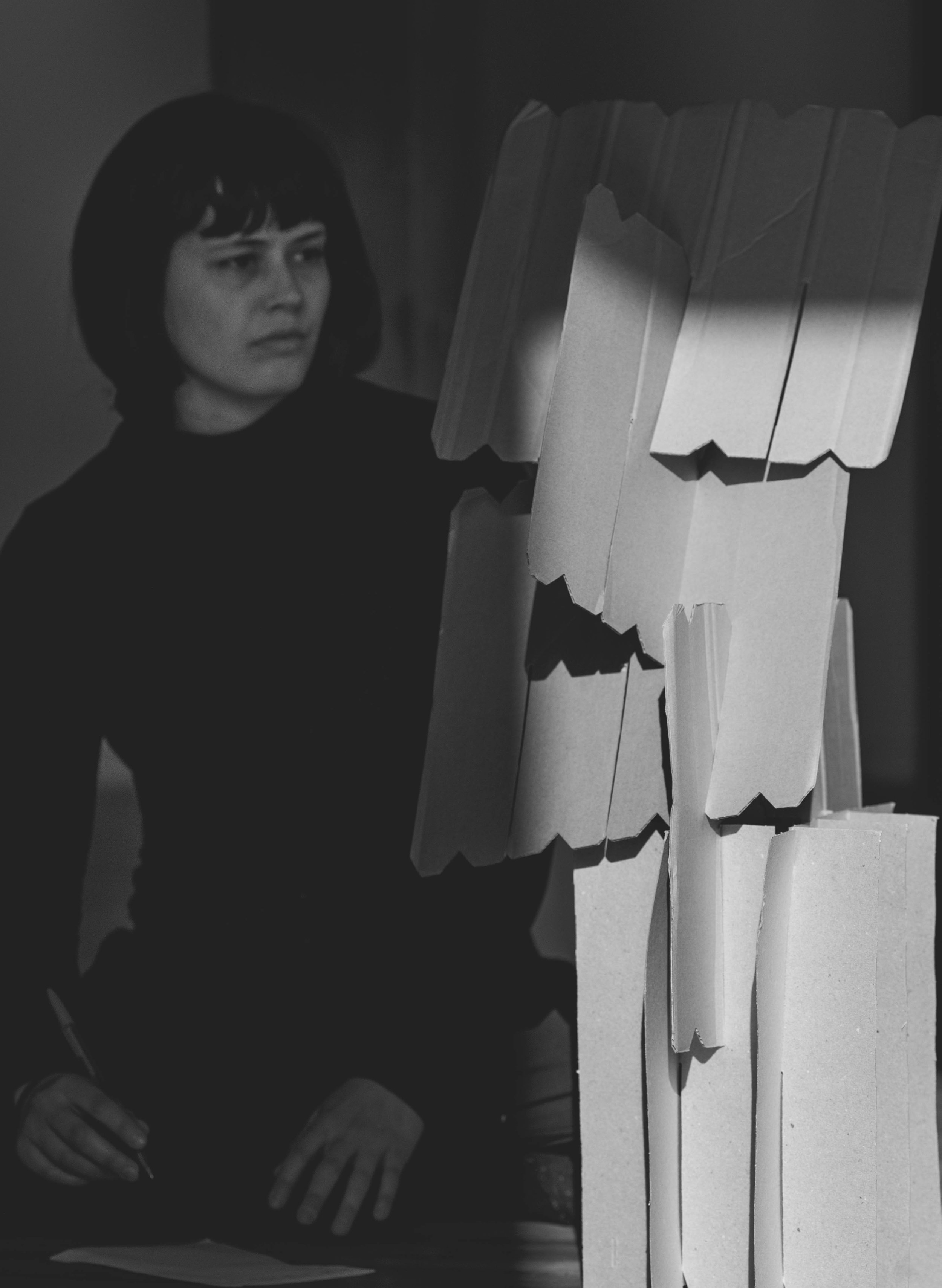
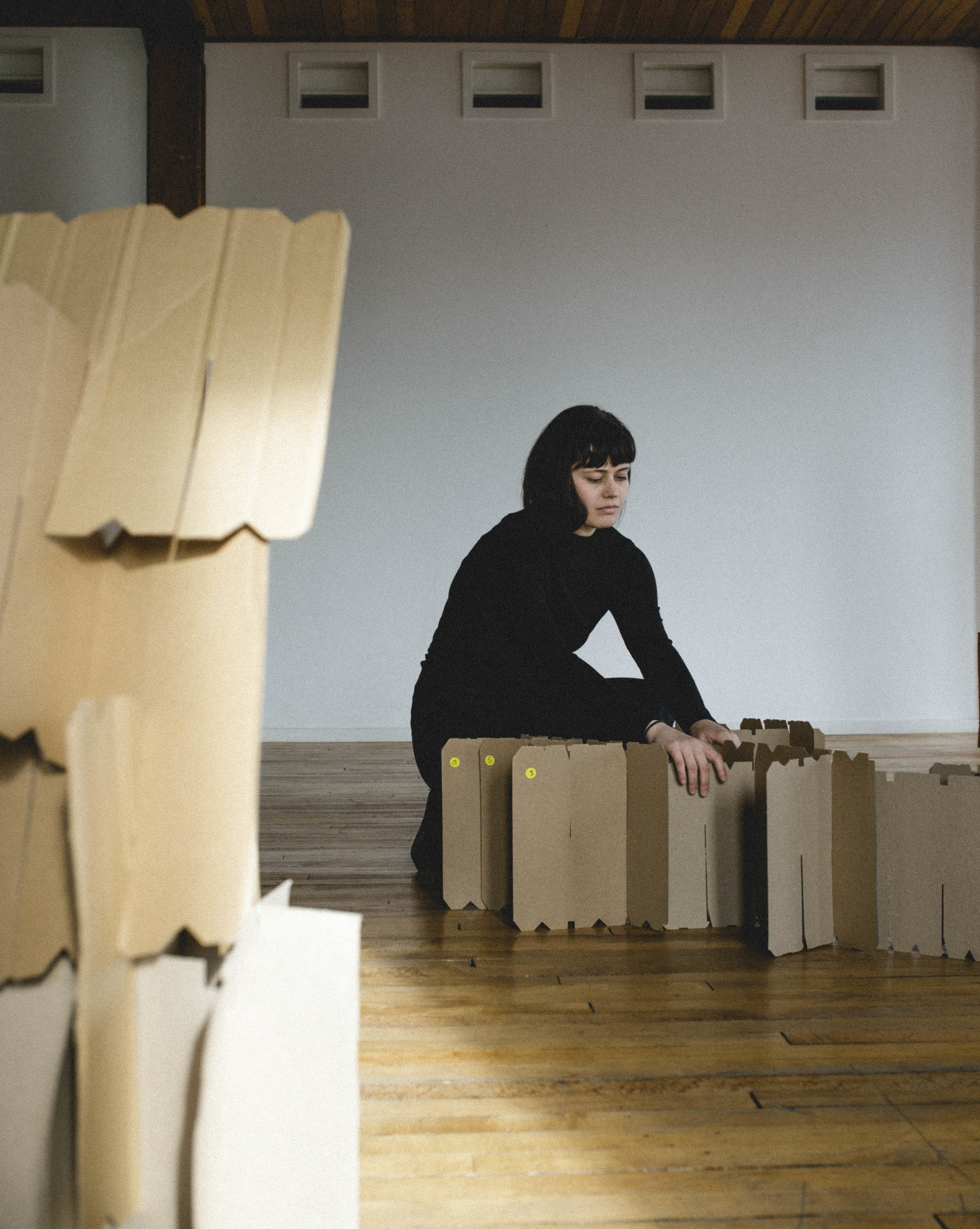
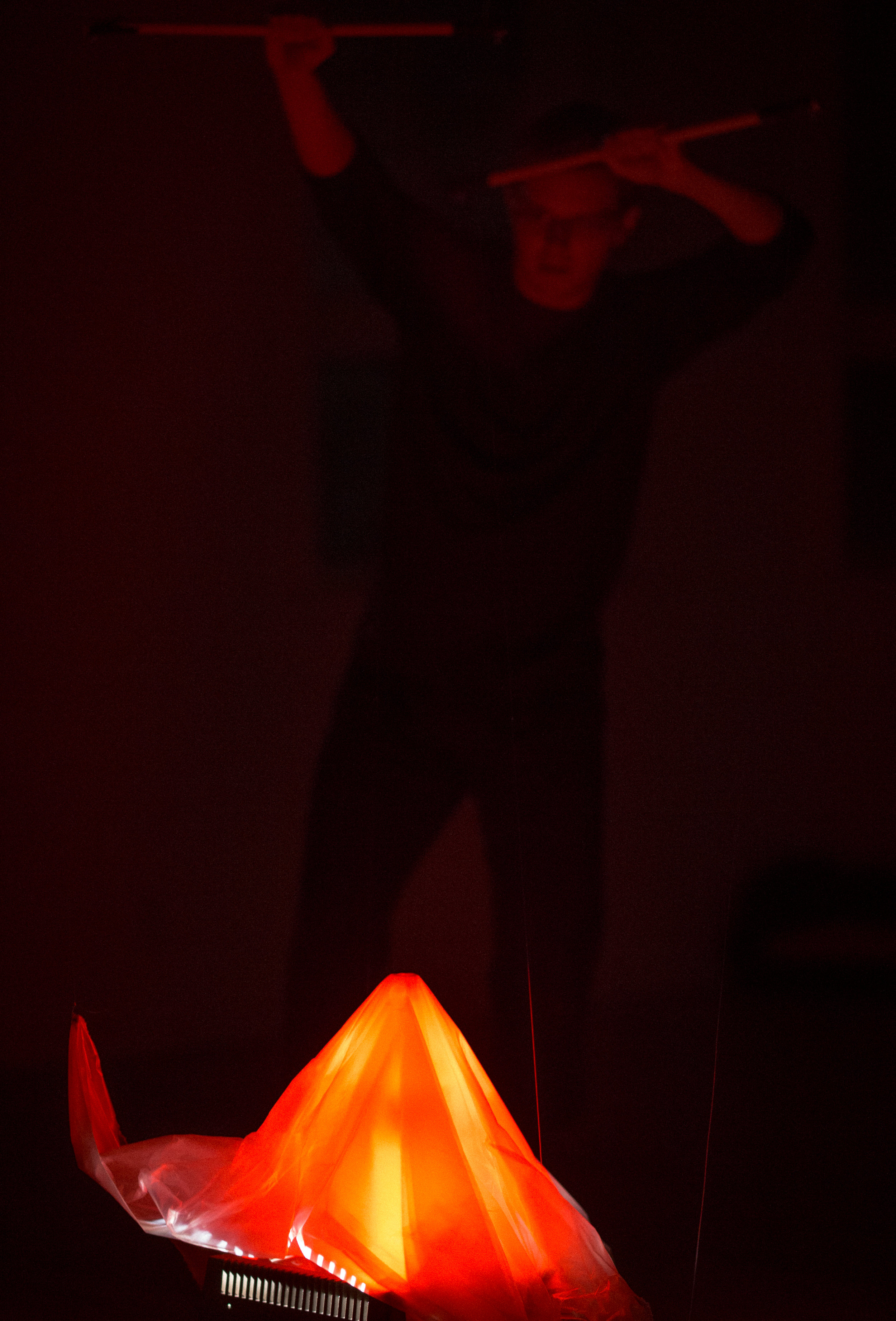
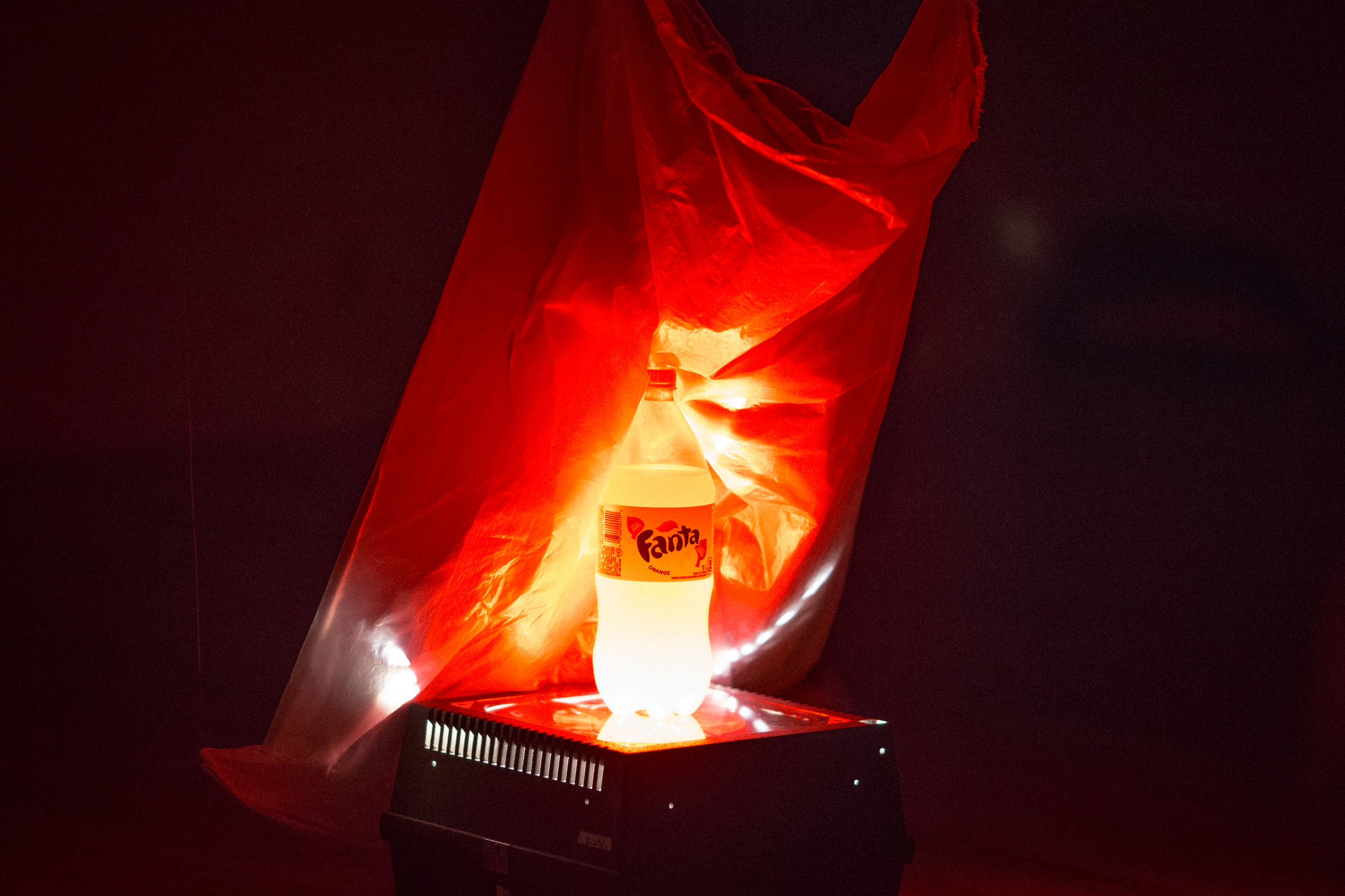
Alex Winters with Warren McLelland
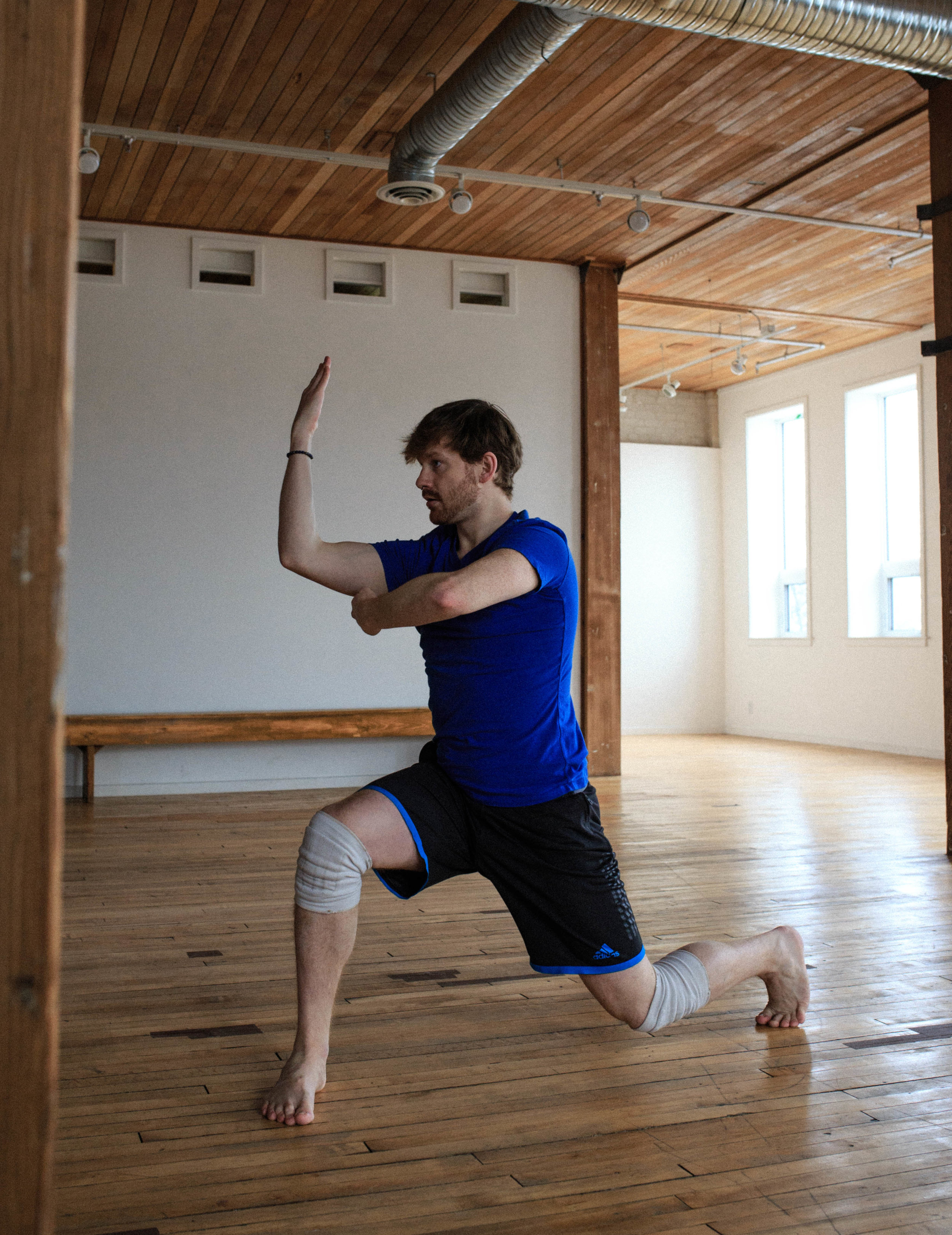
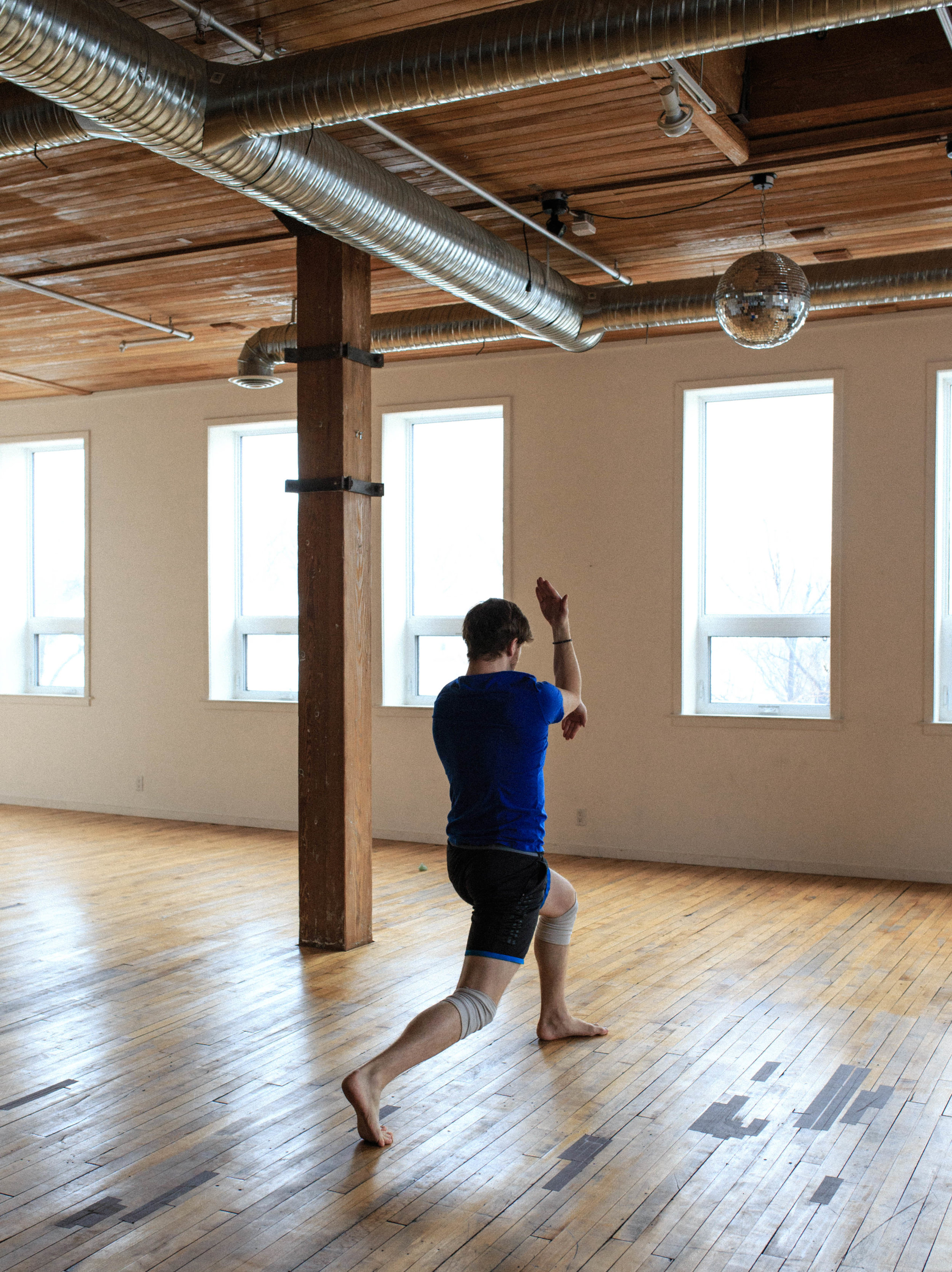
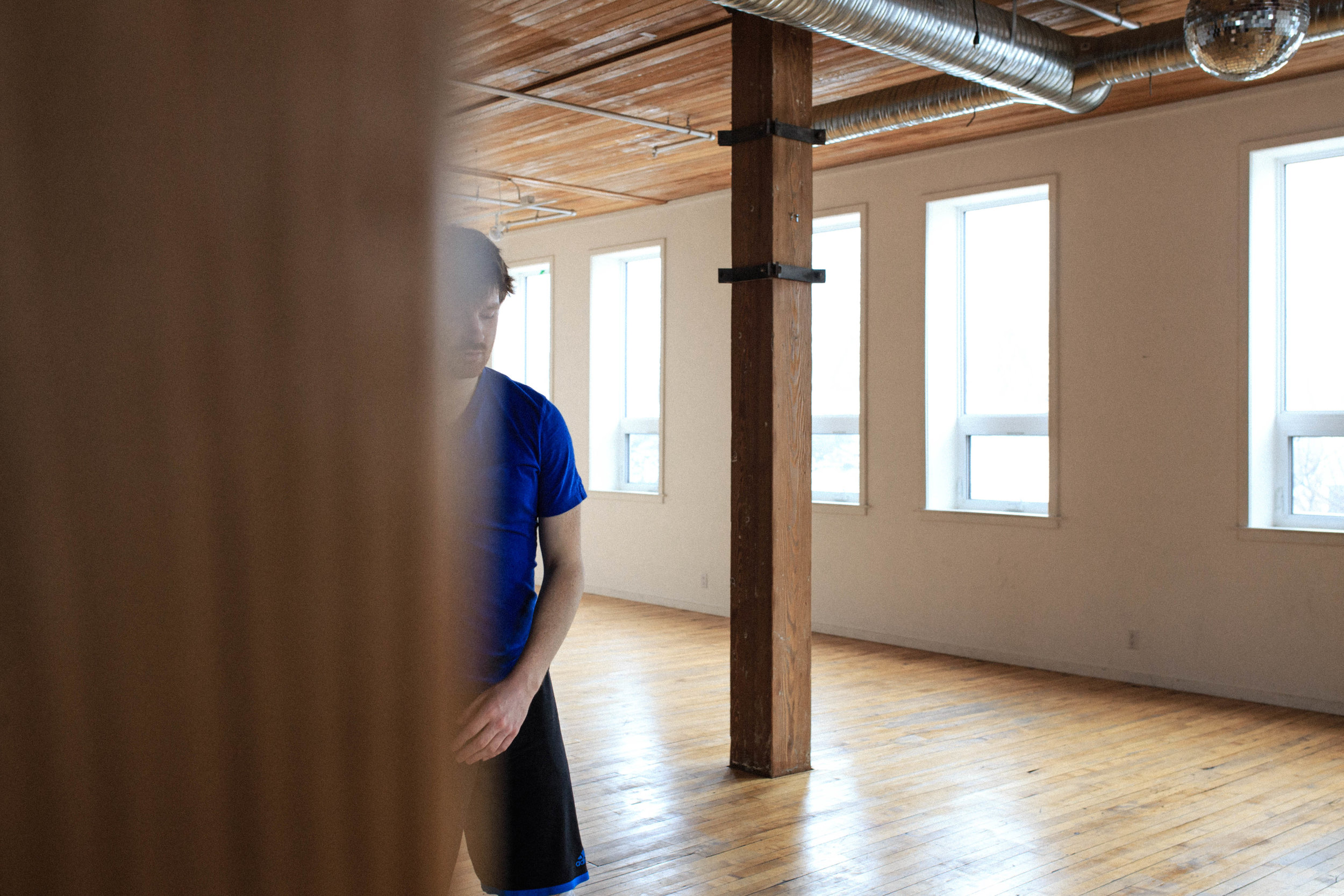
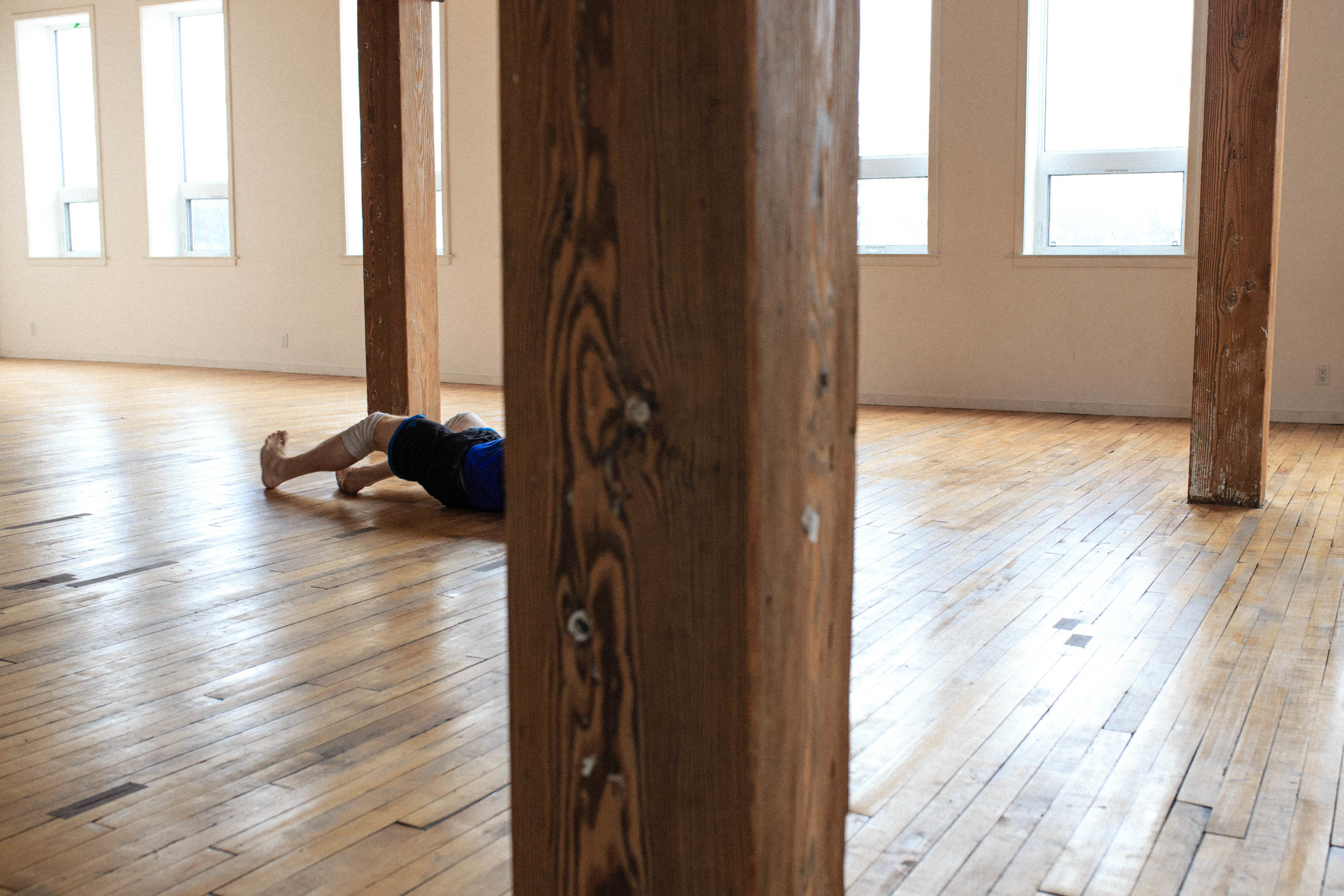
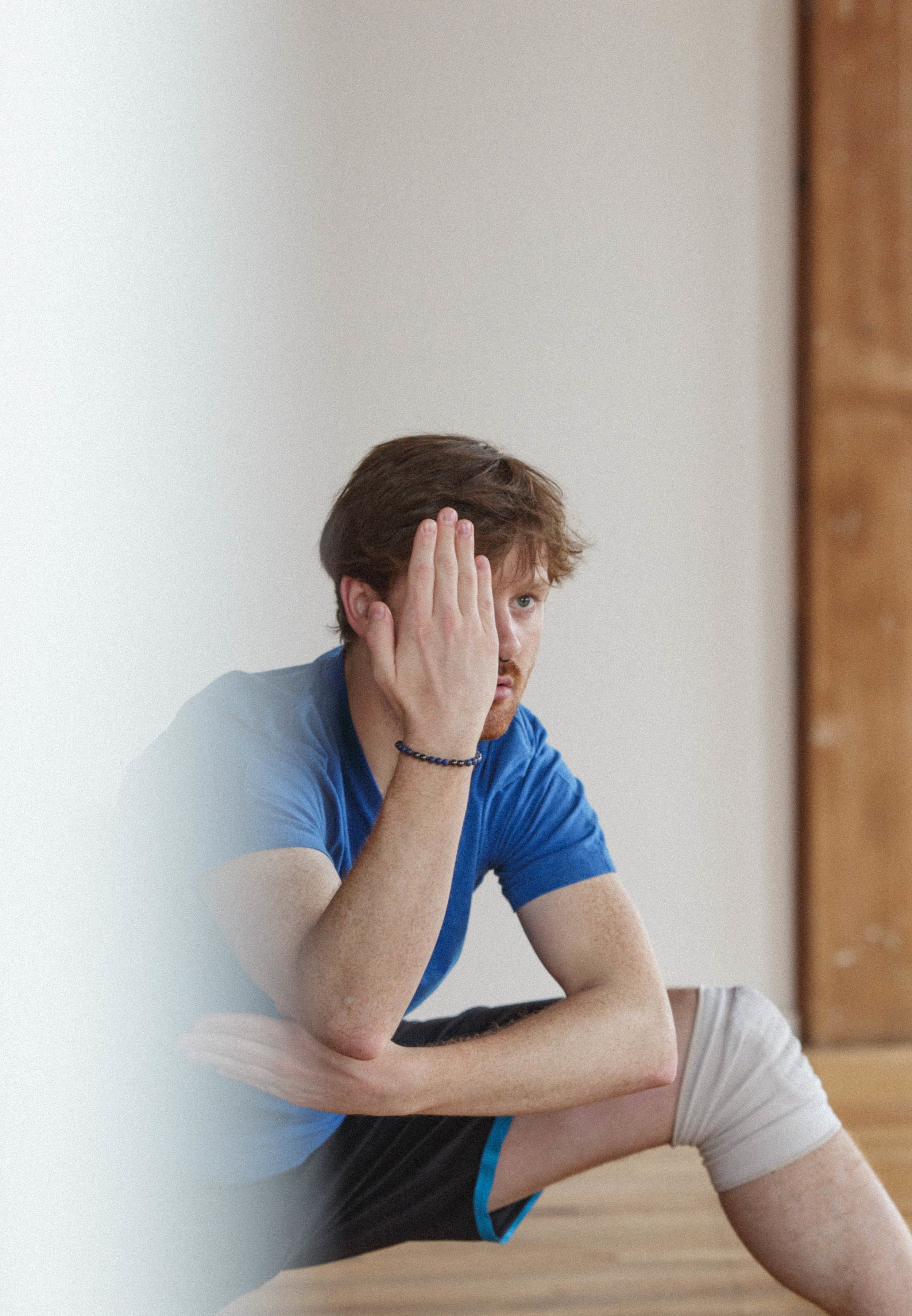
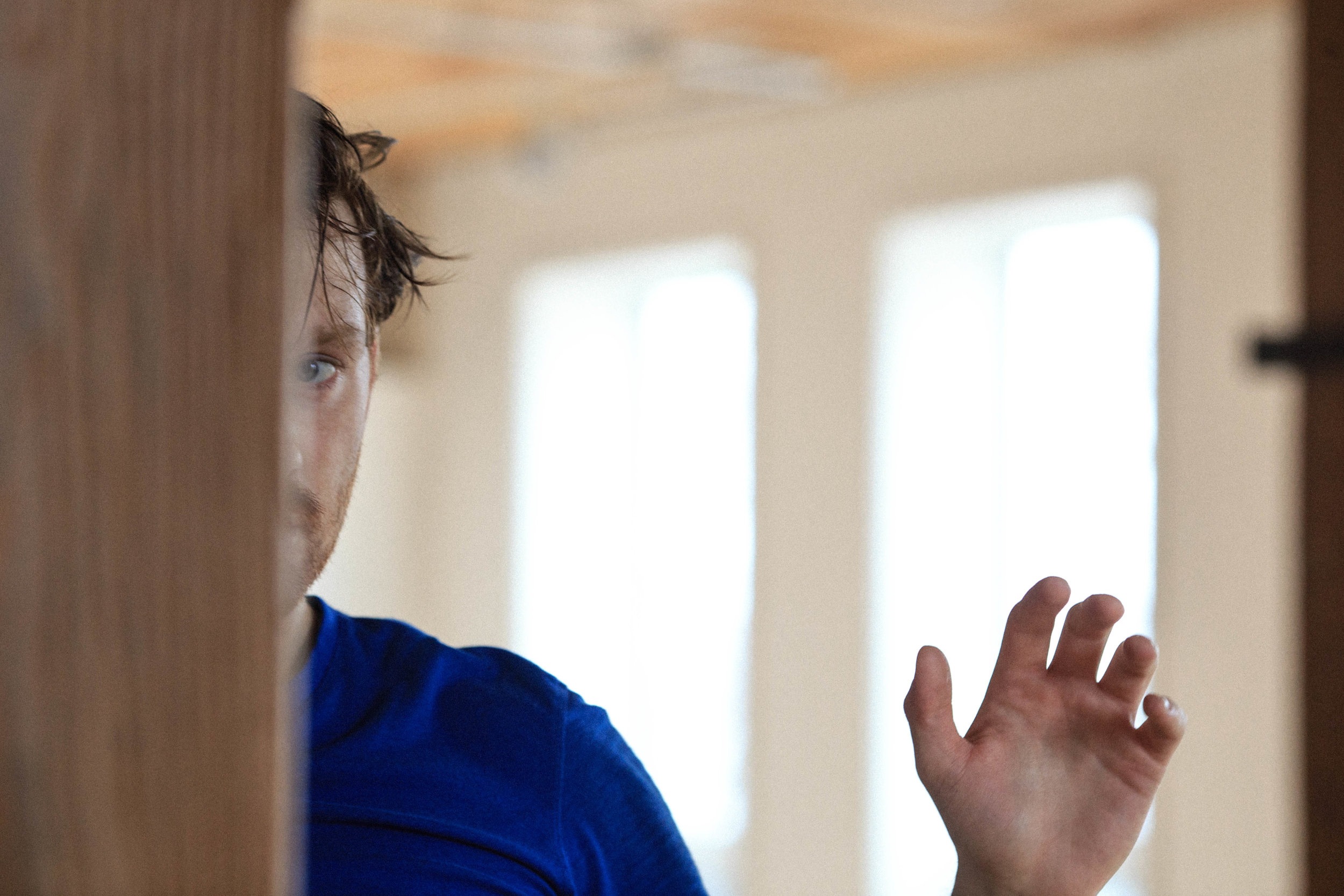
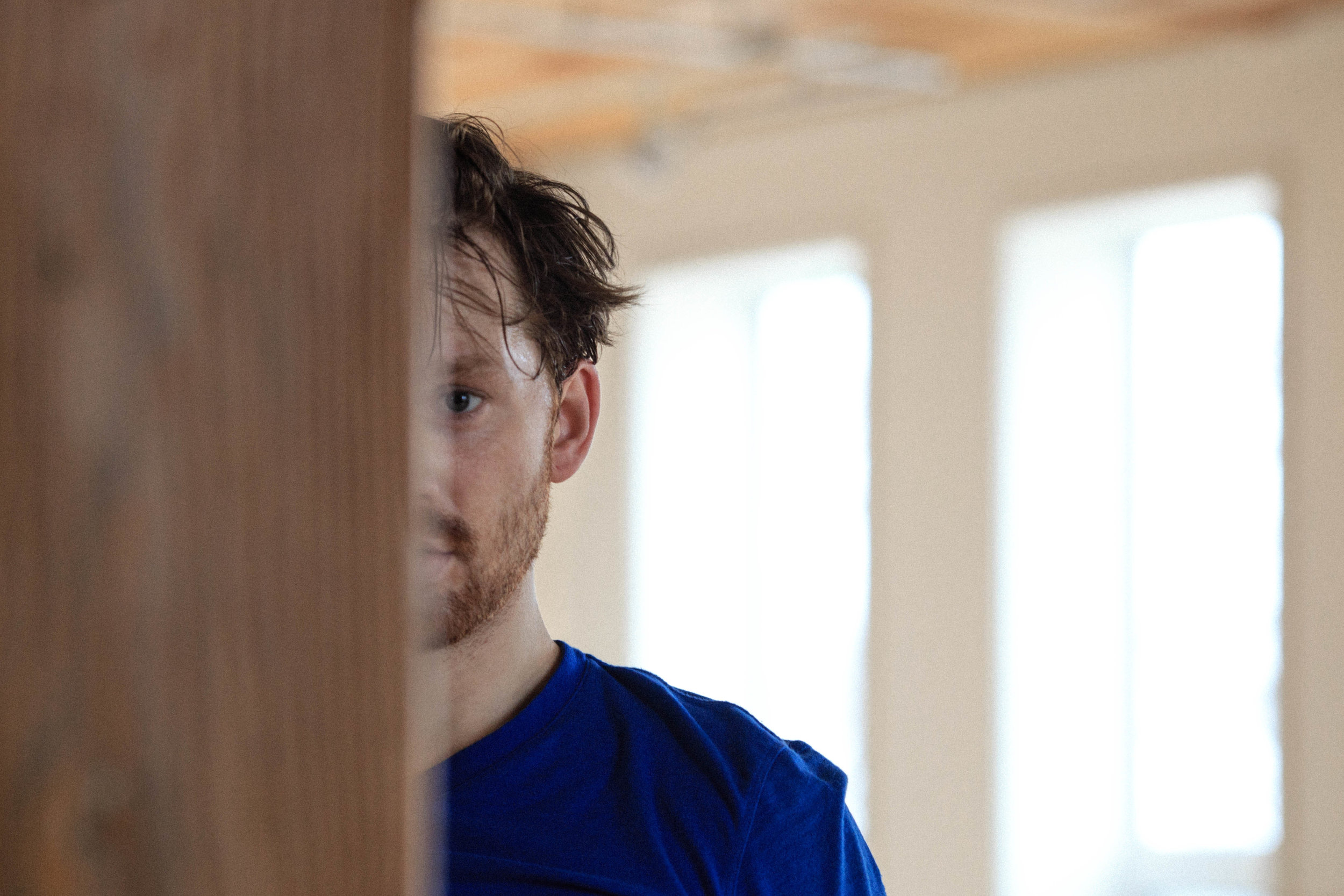
Kayla Jeanson with Alex Winters and Brianna Ray Ferguson
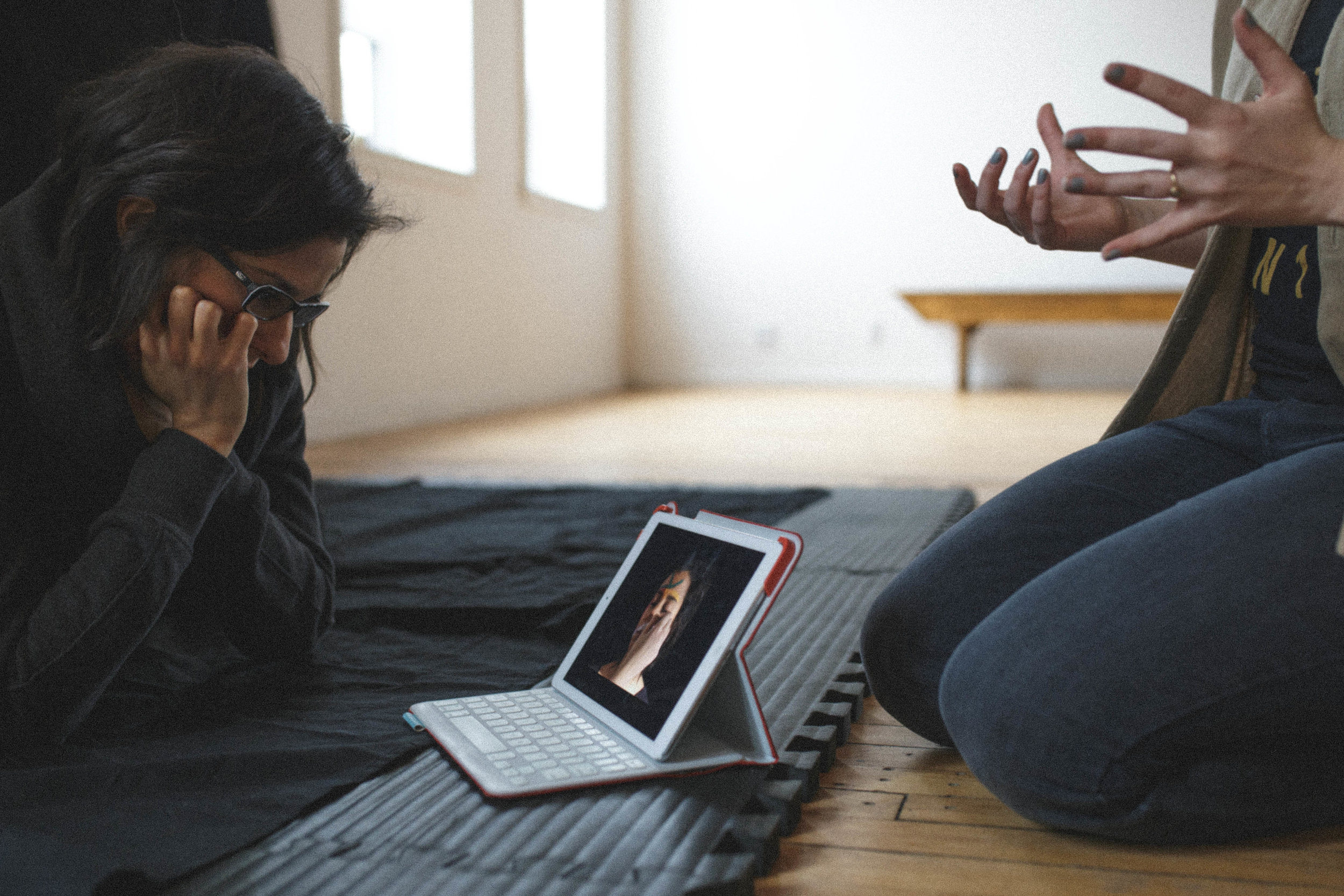
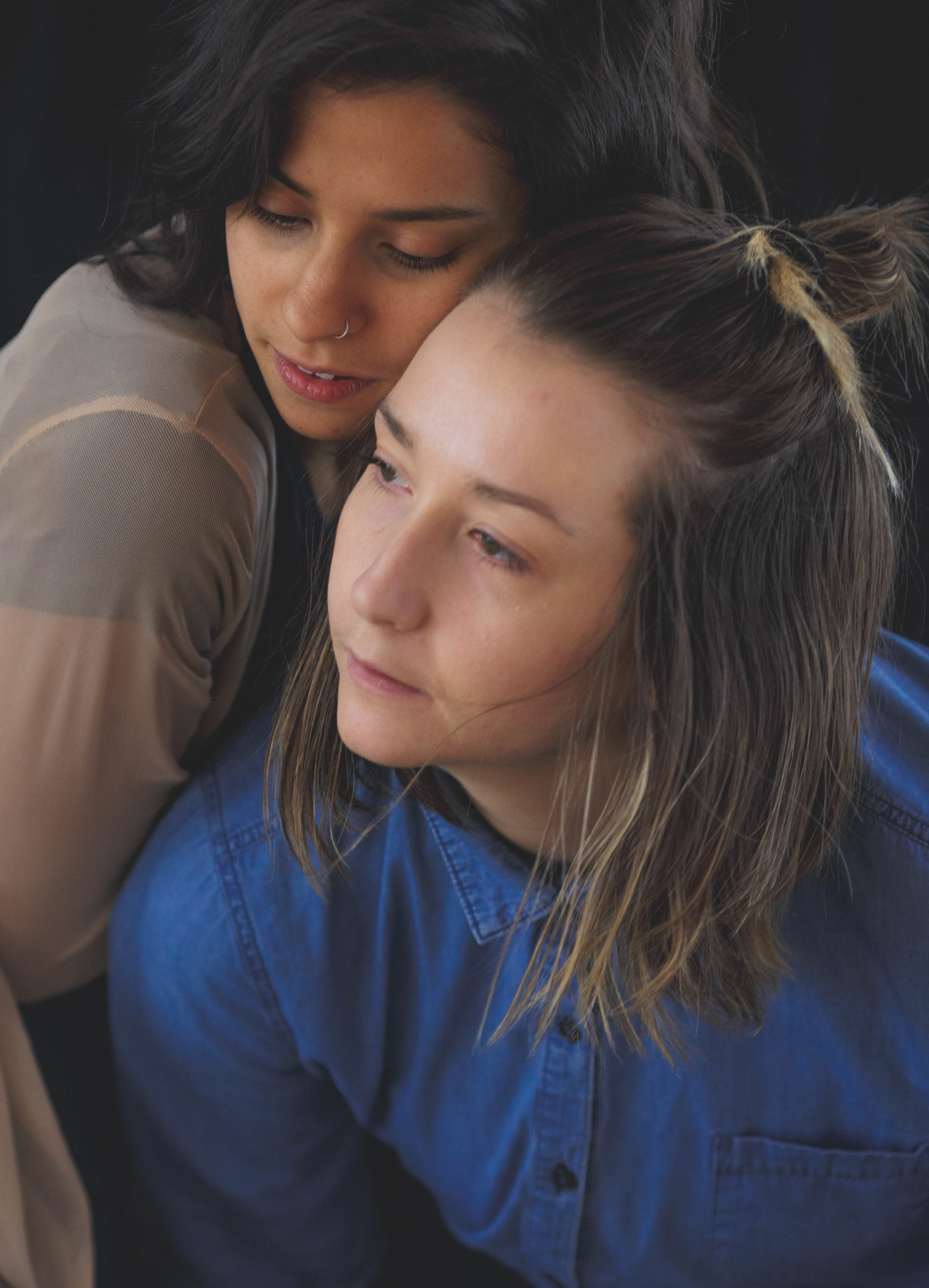
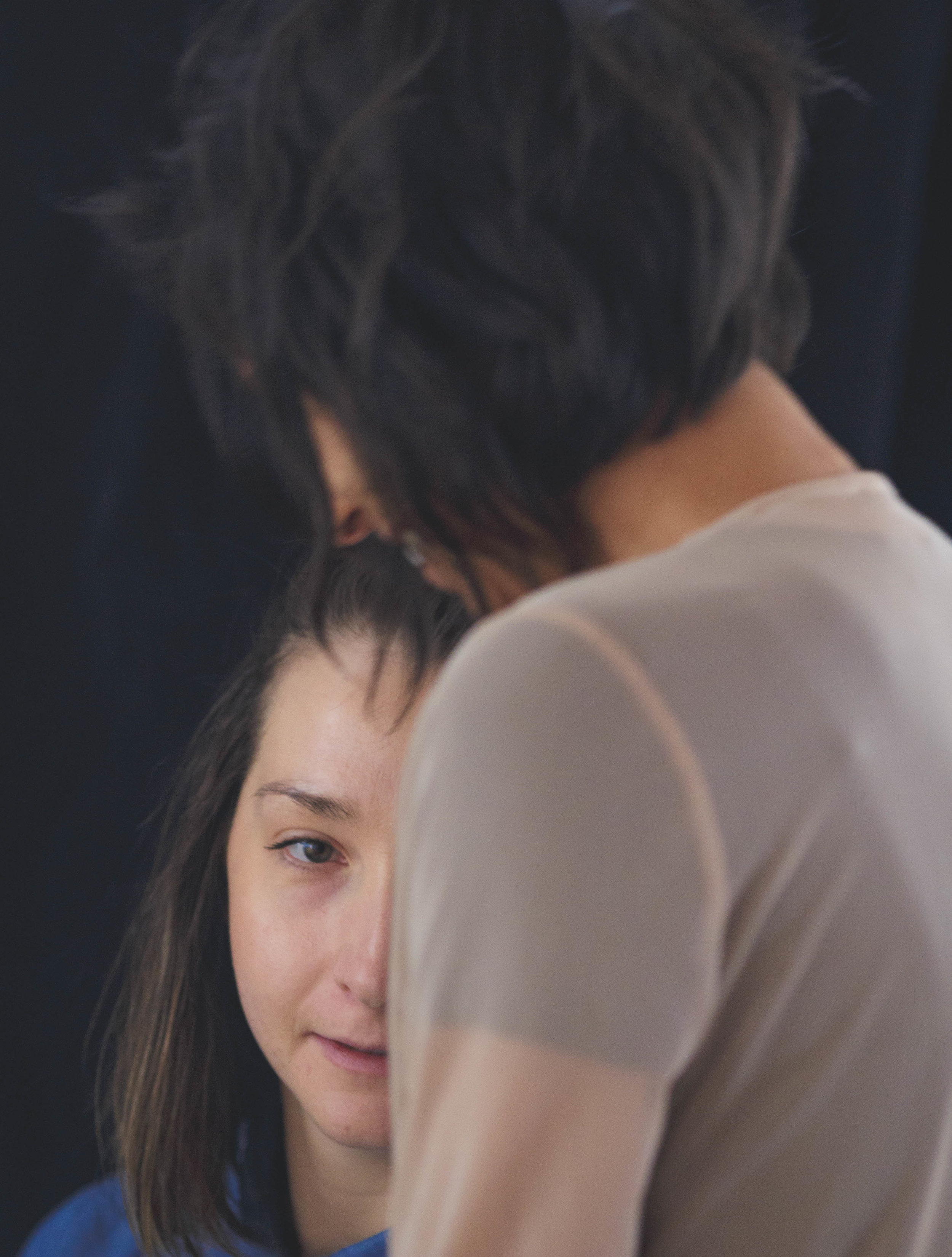
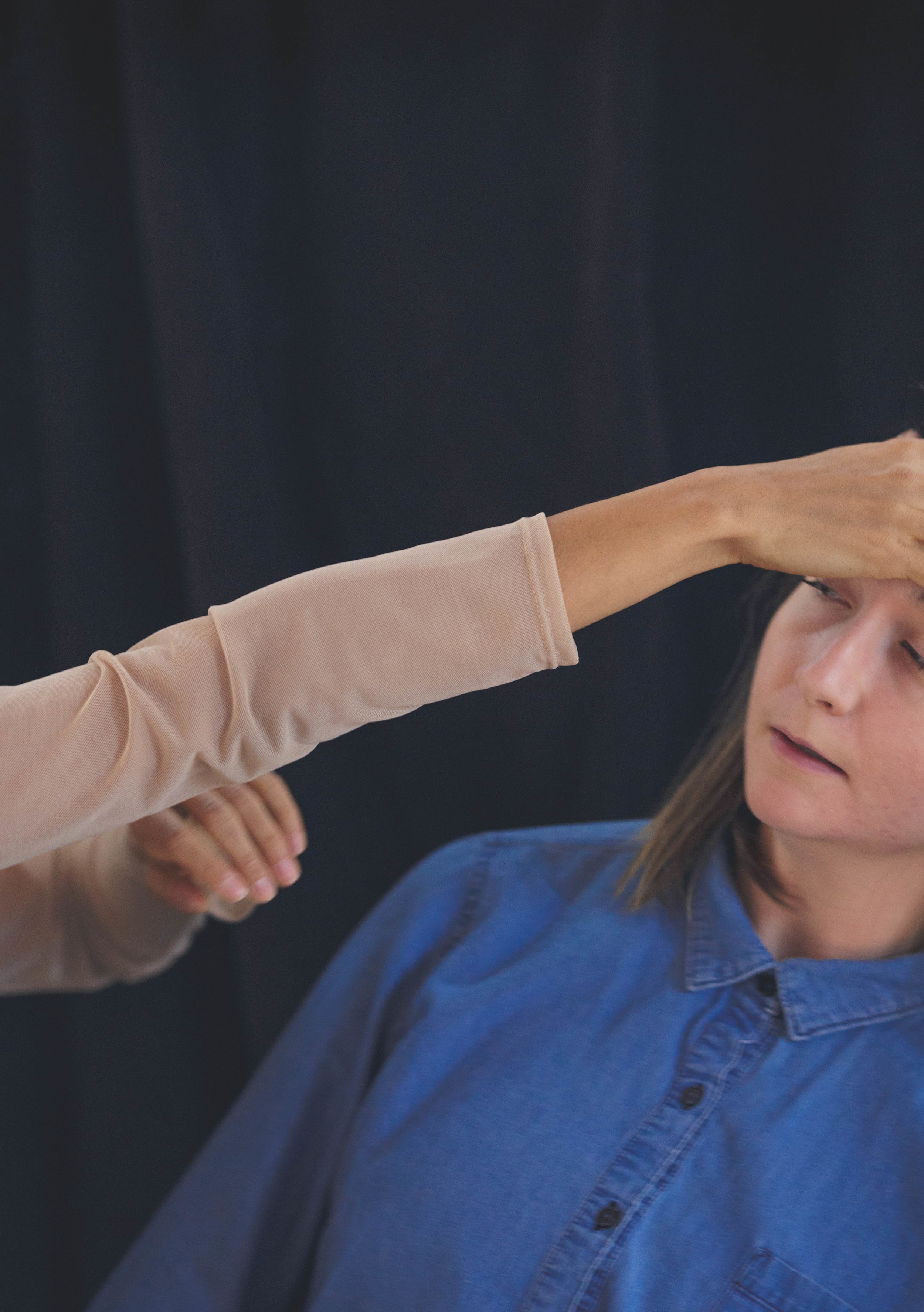
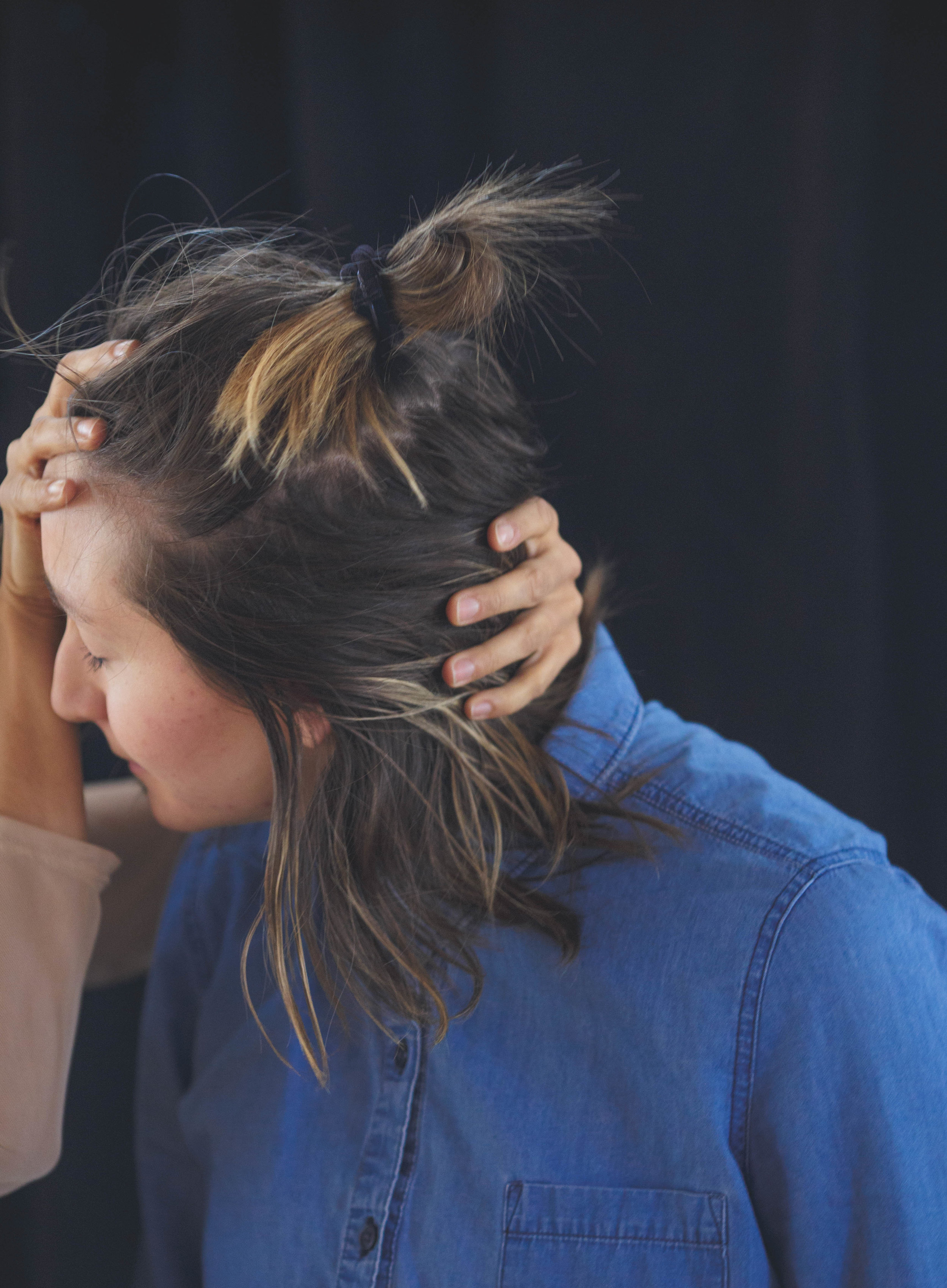
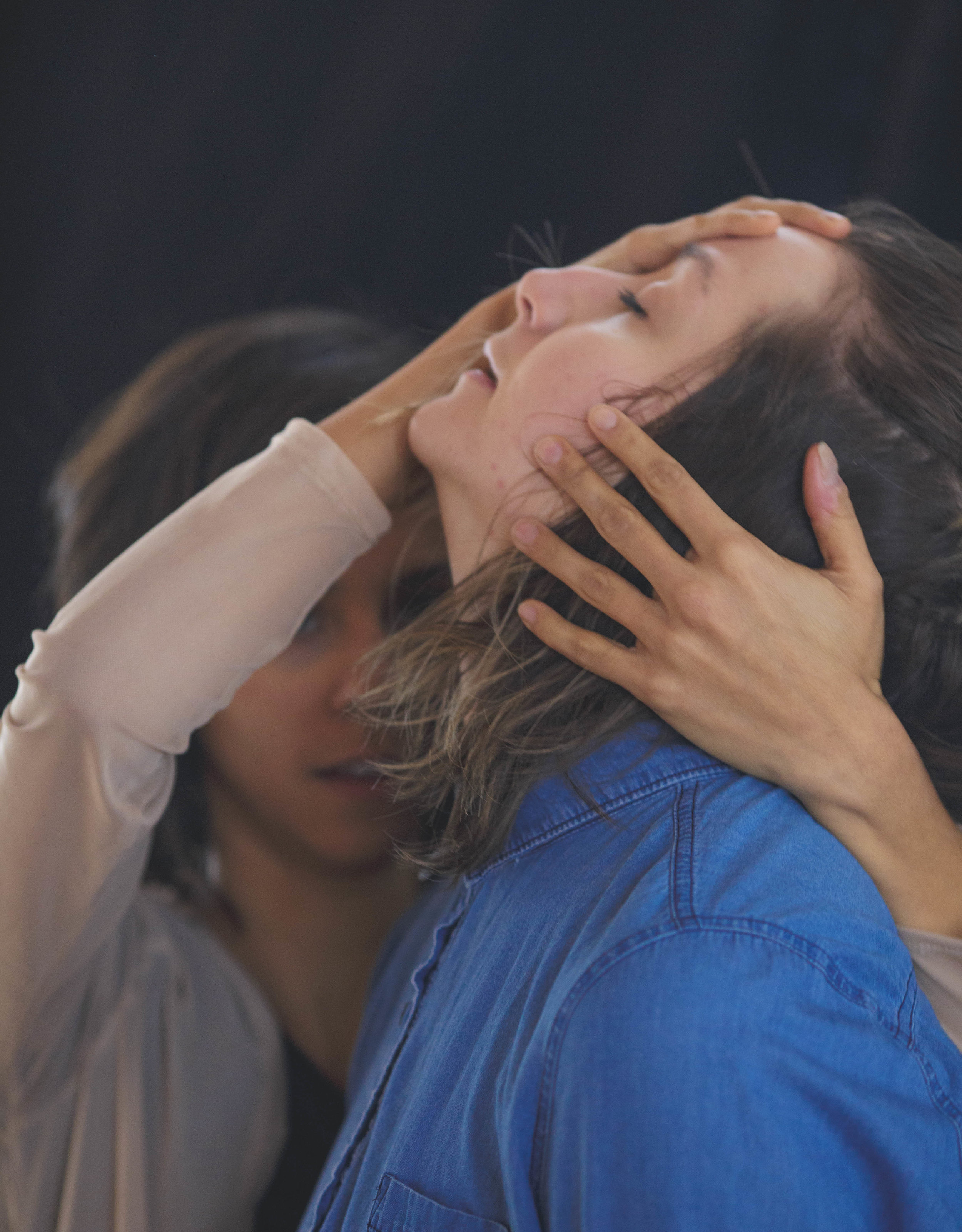
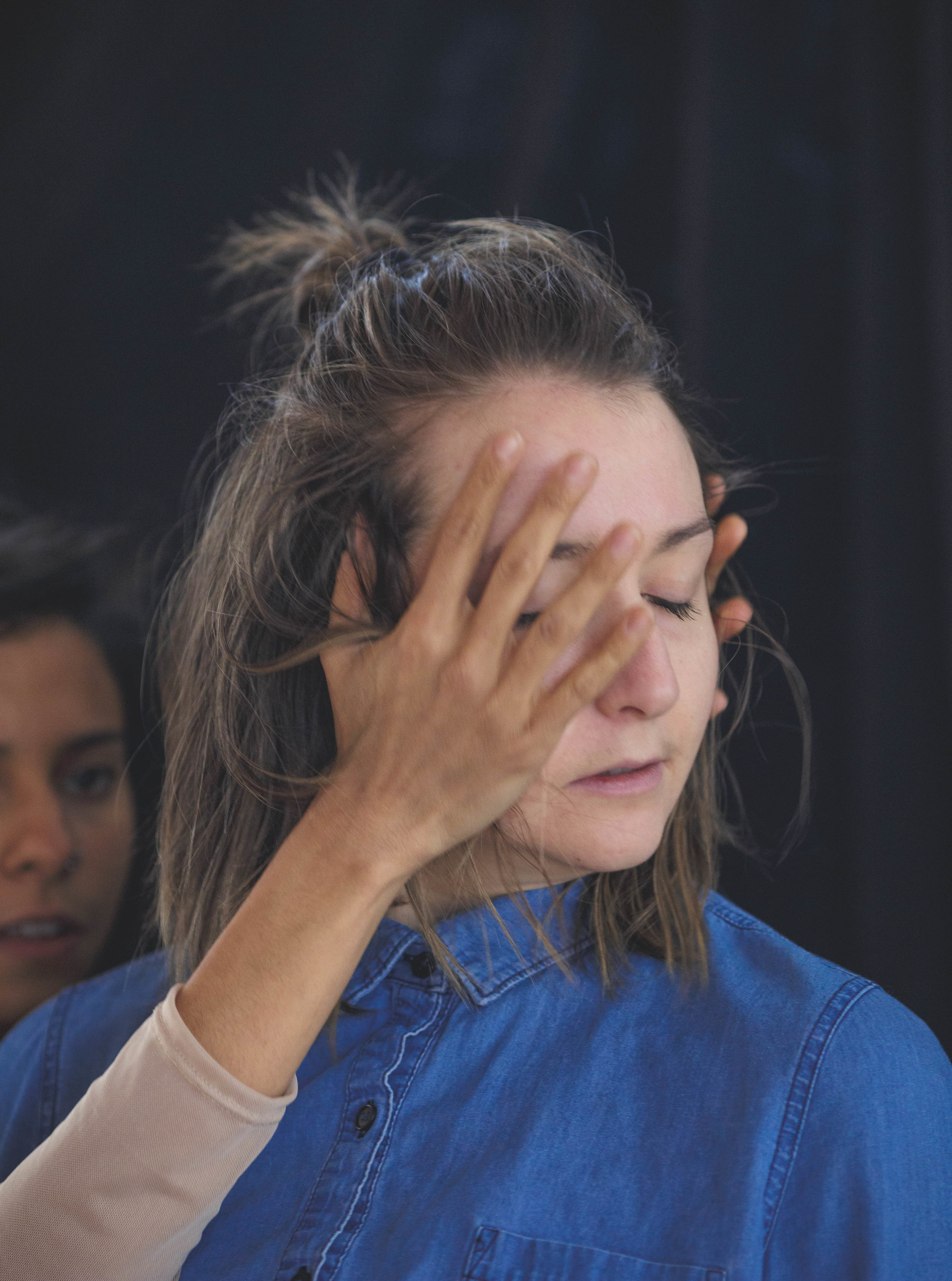
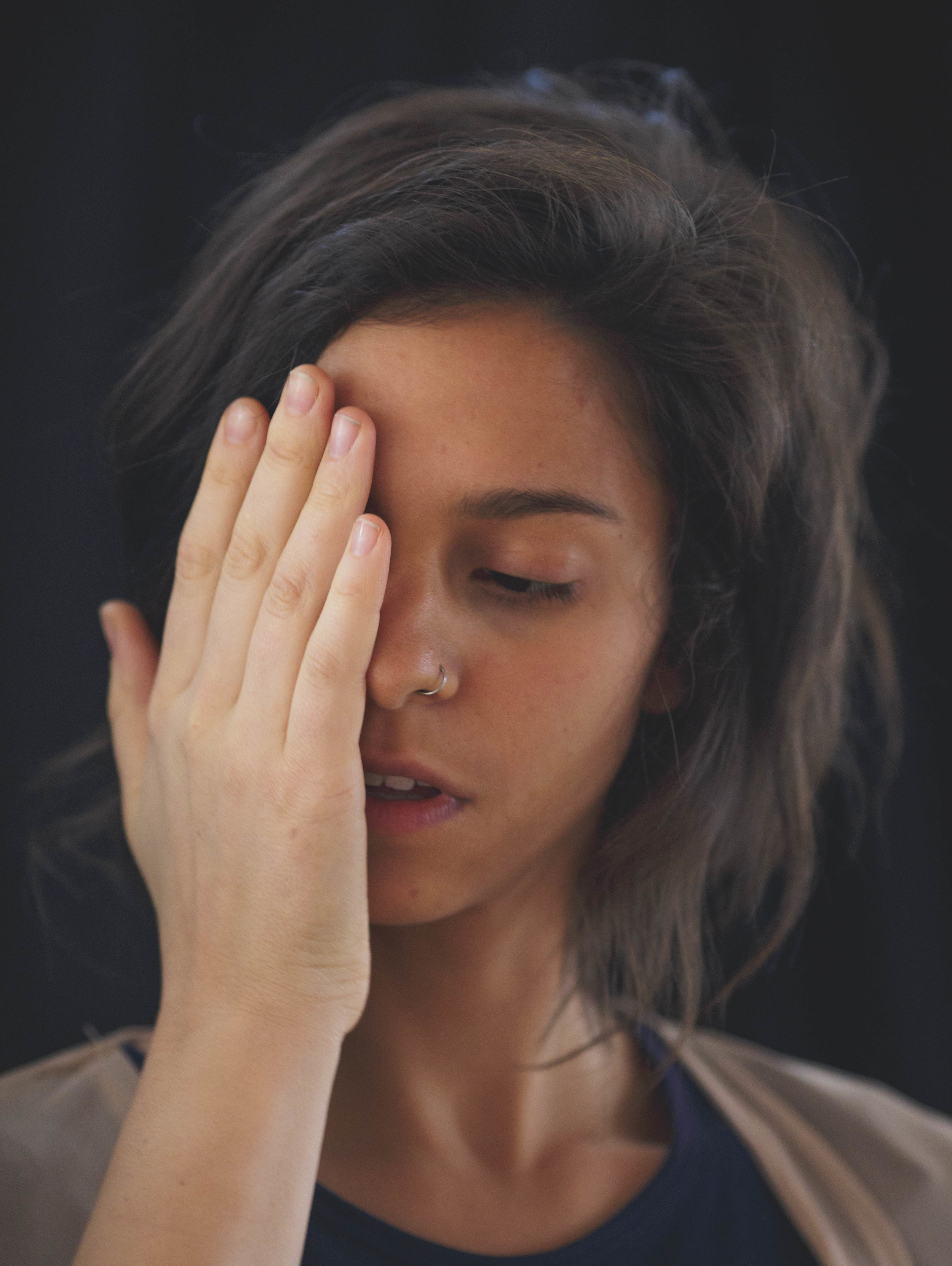
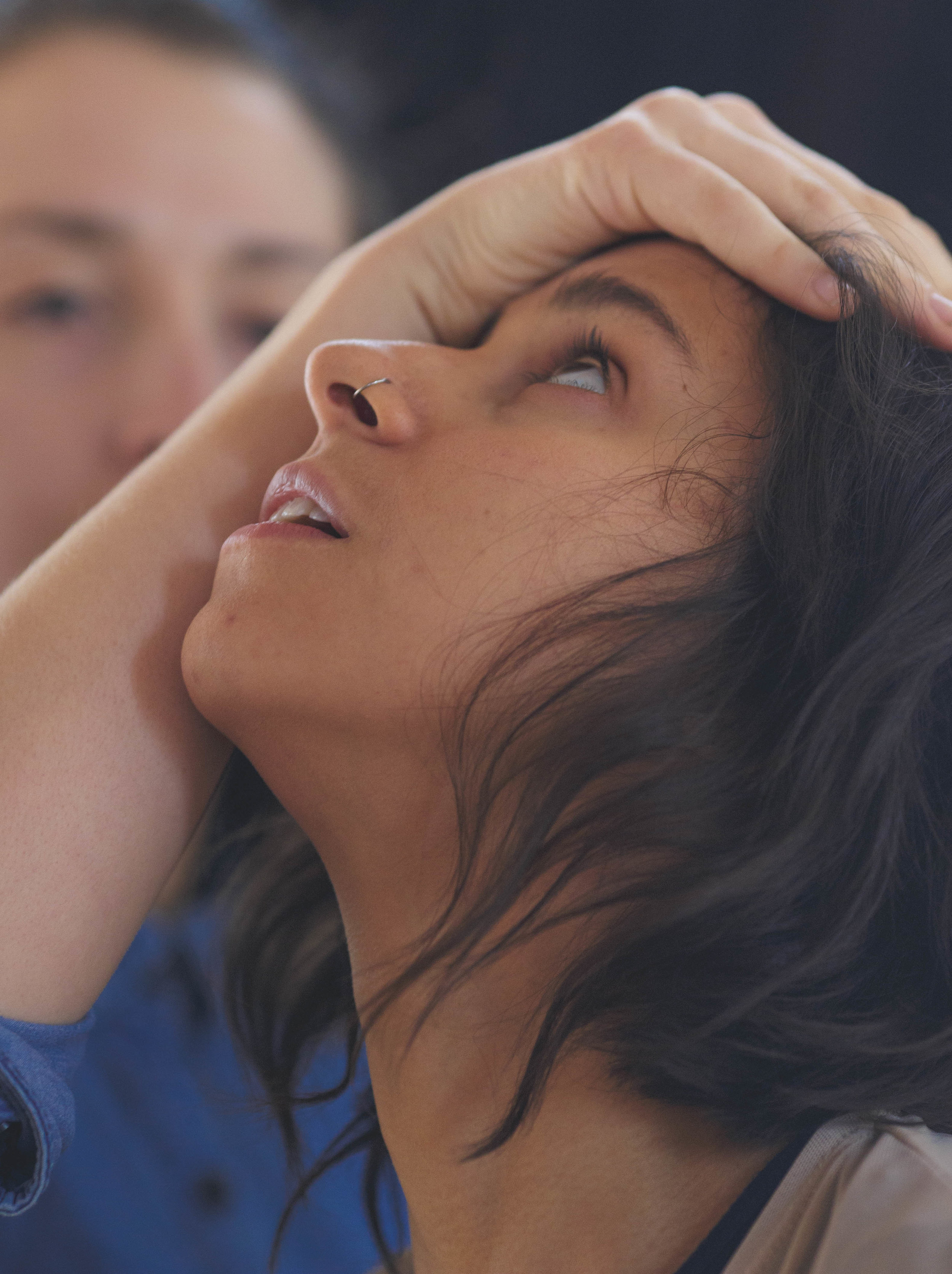
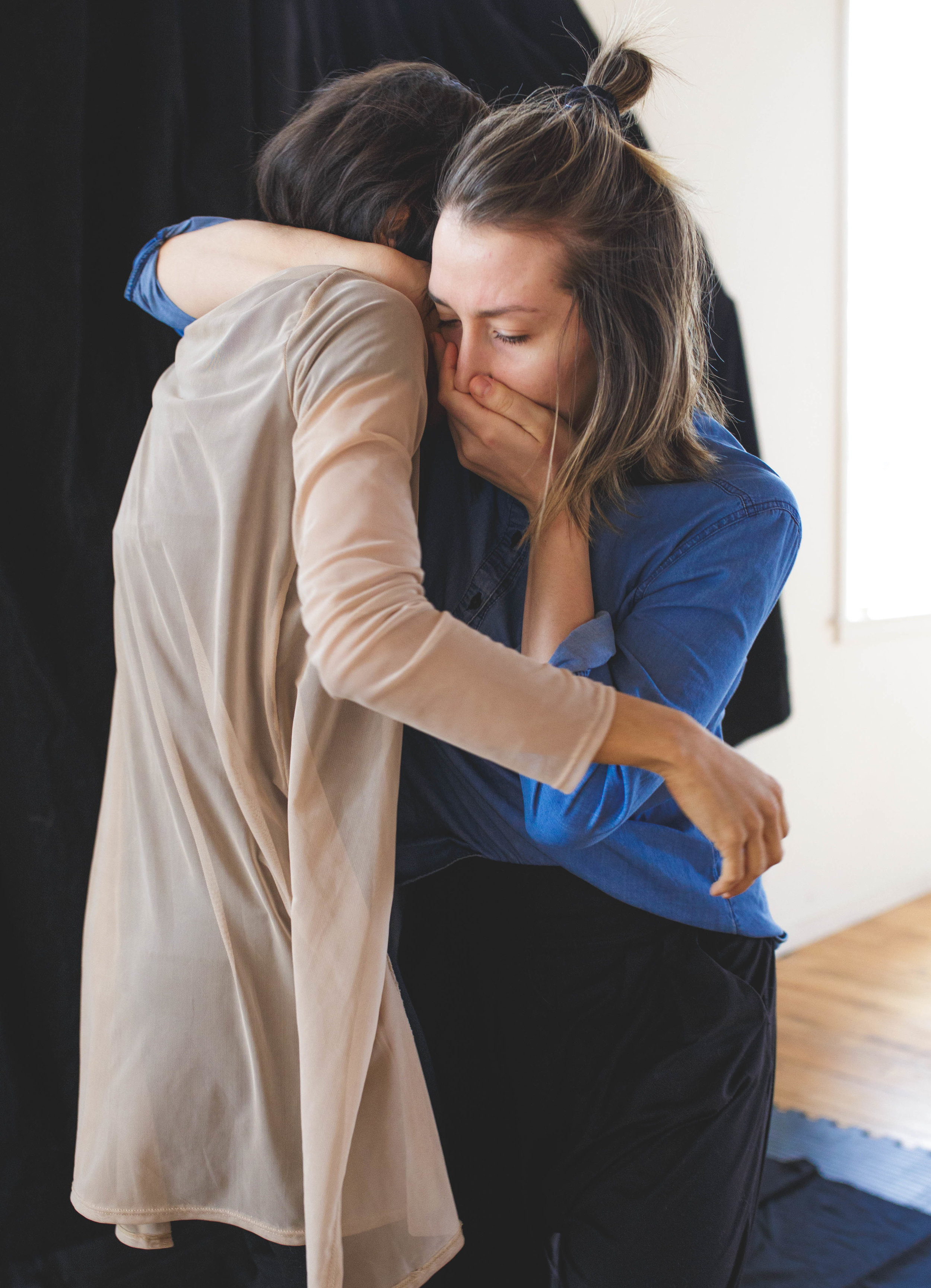
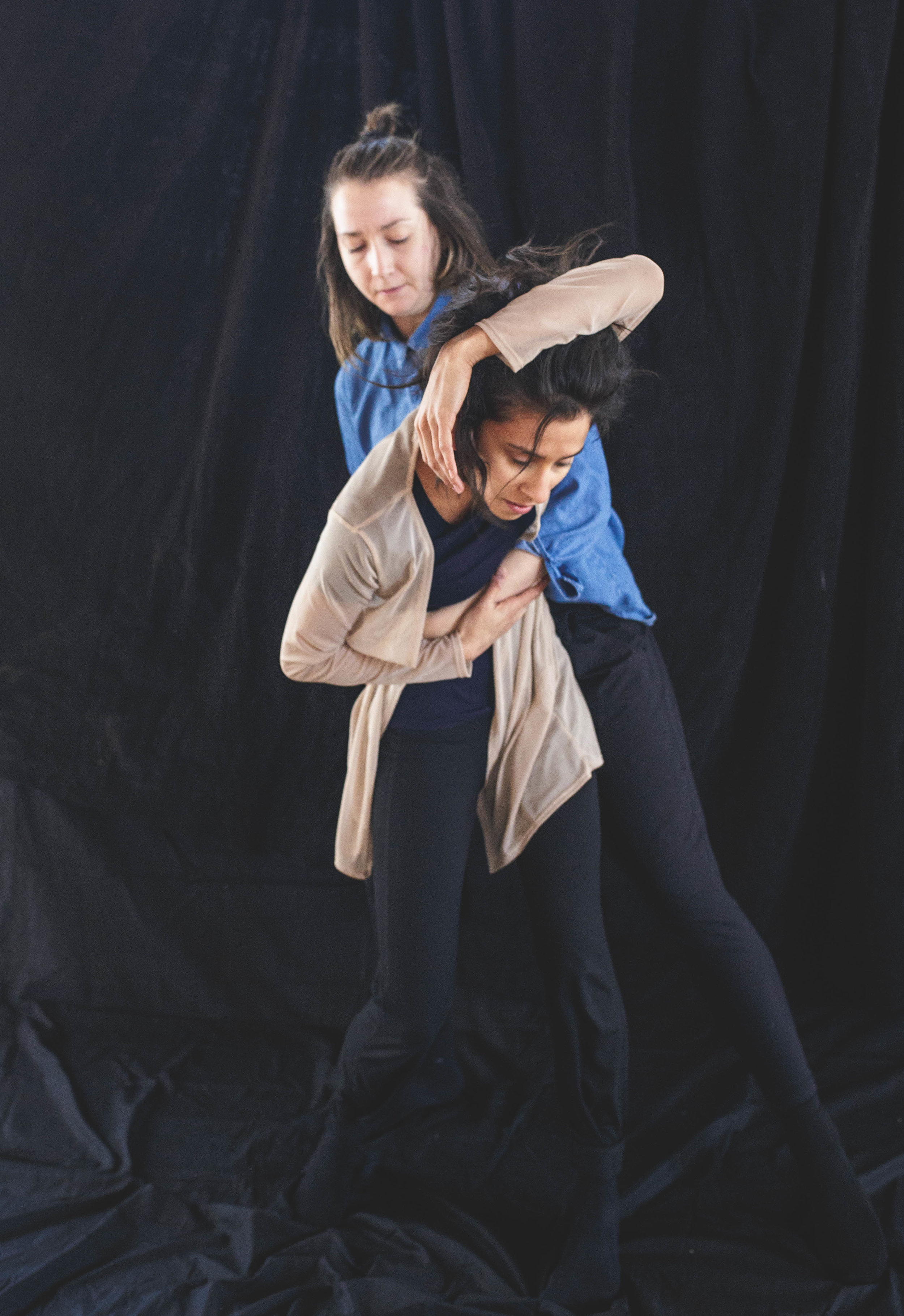
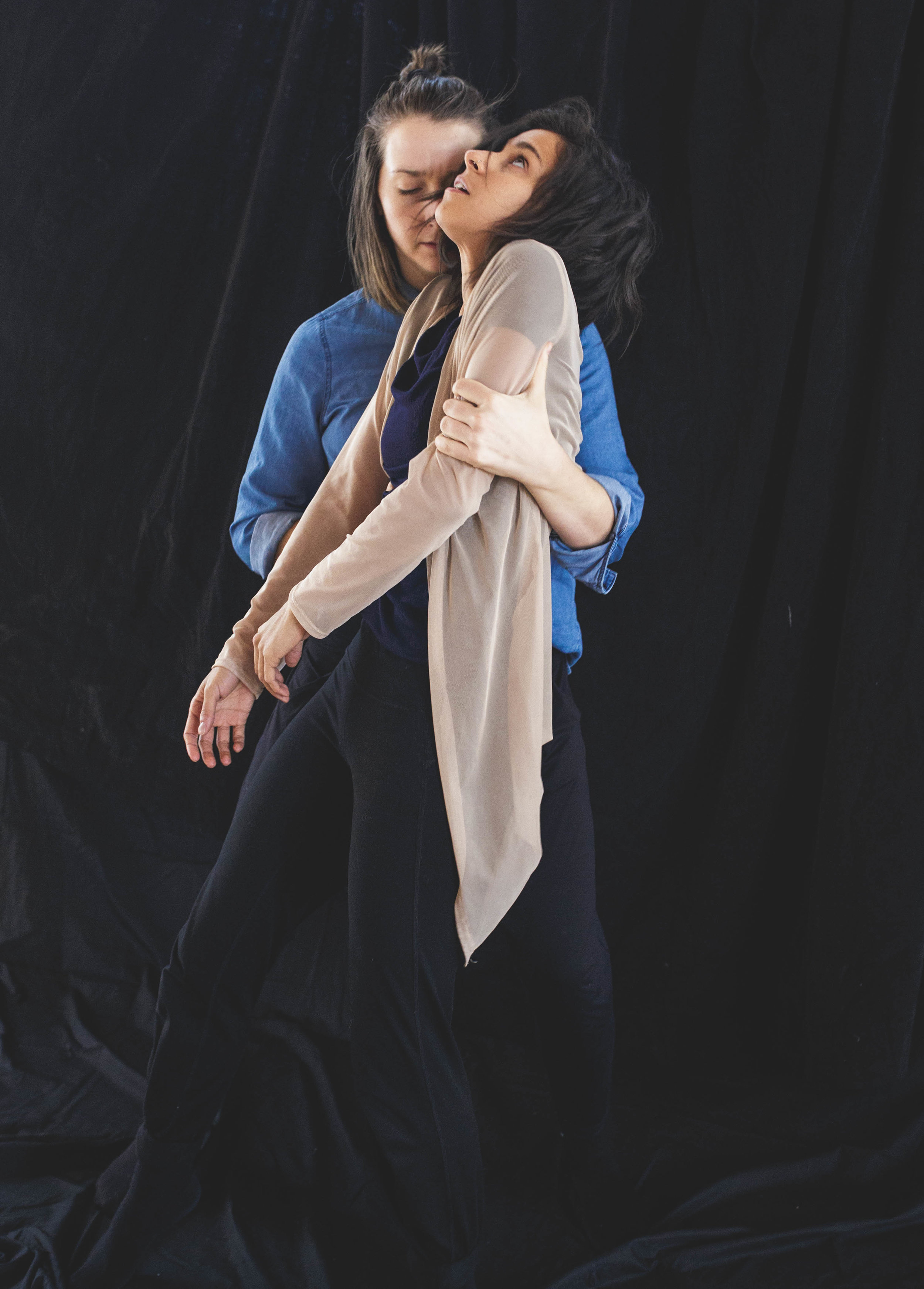
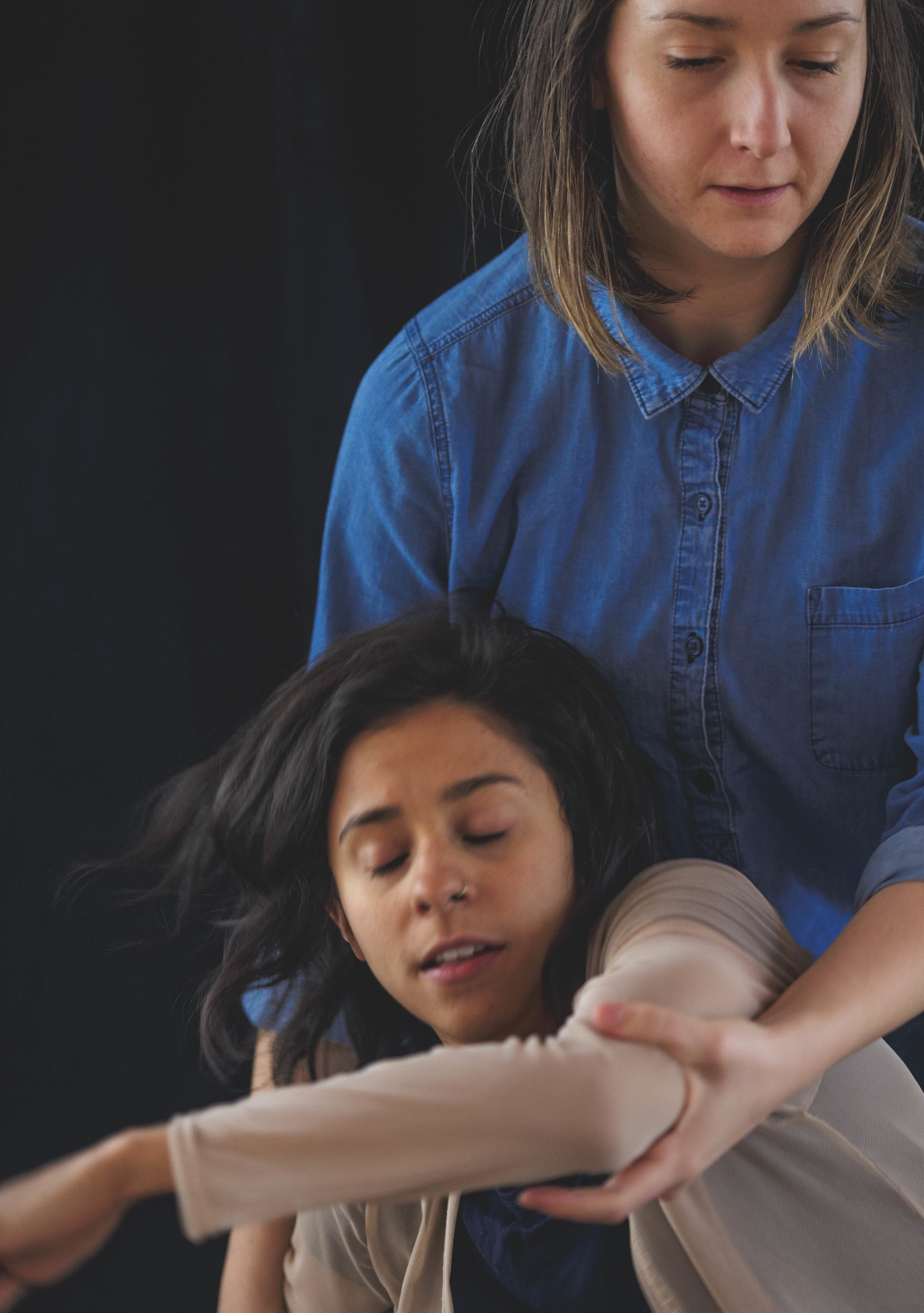
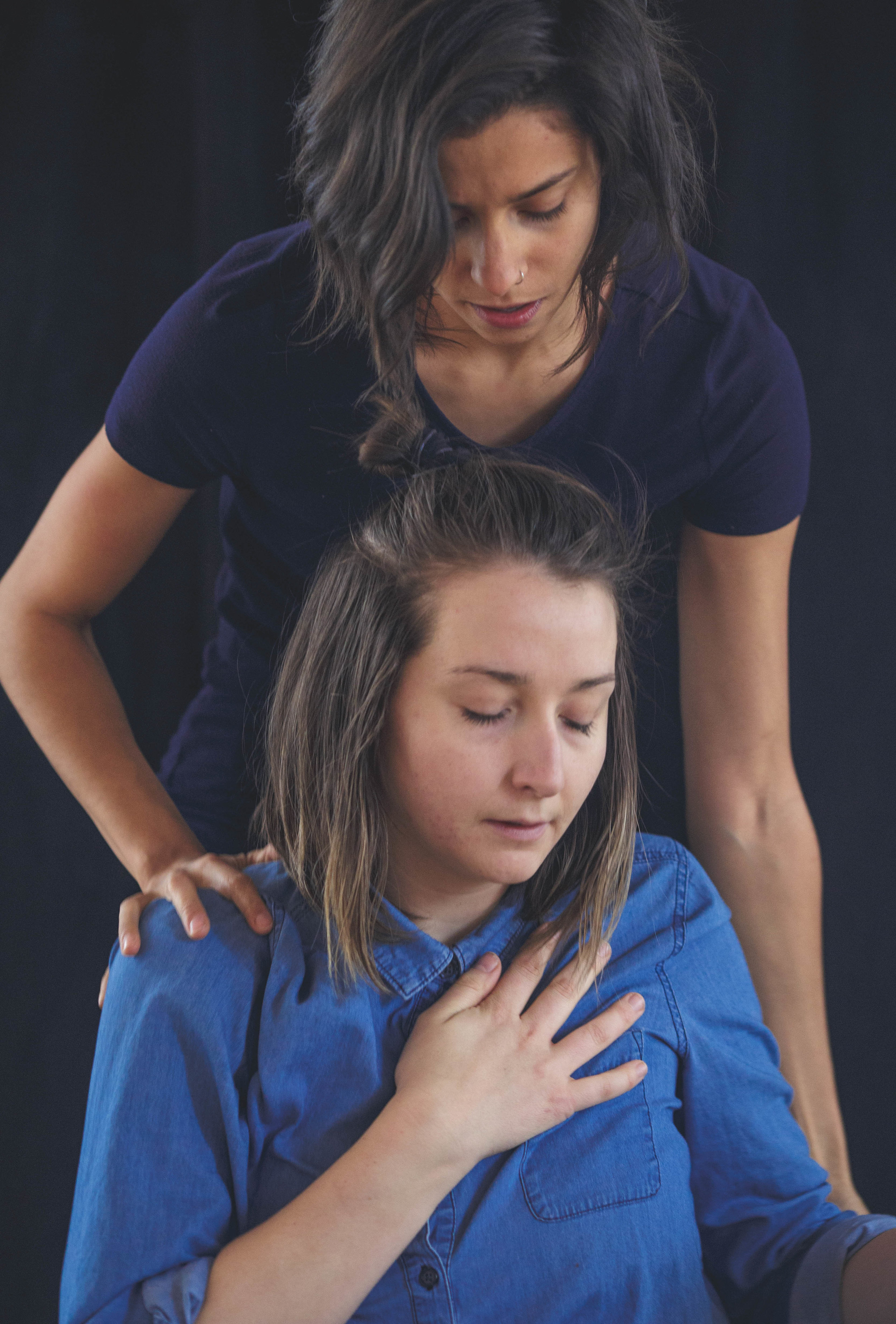
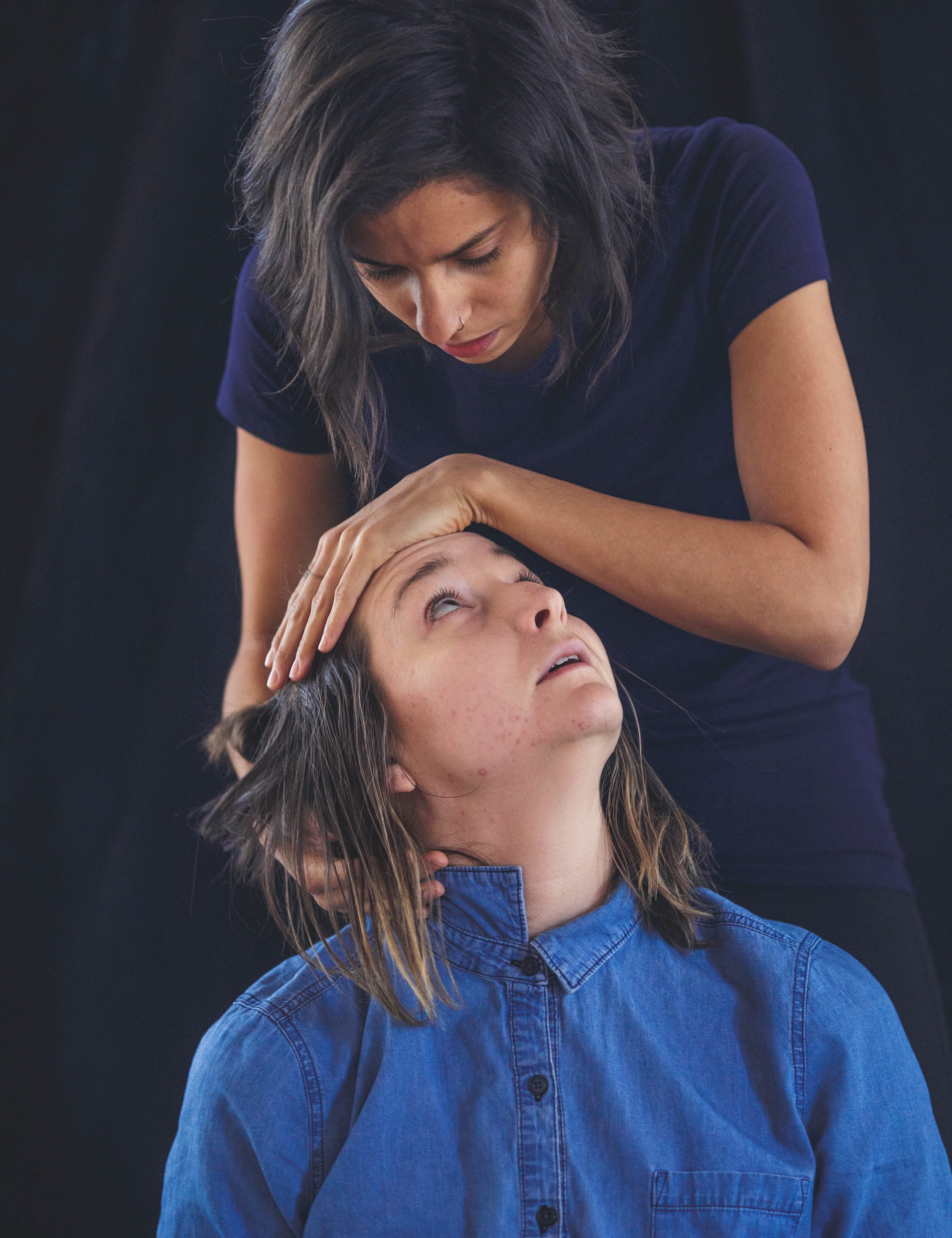
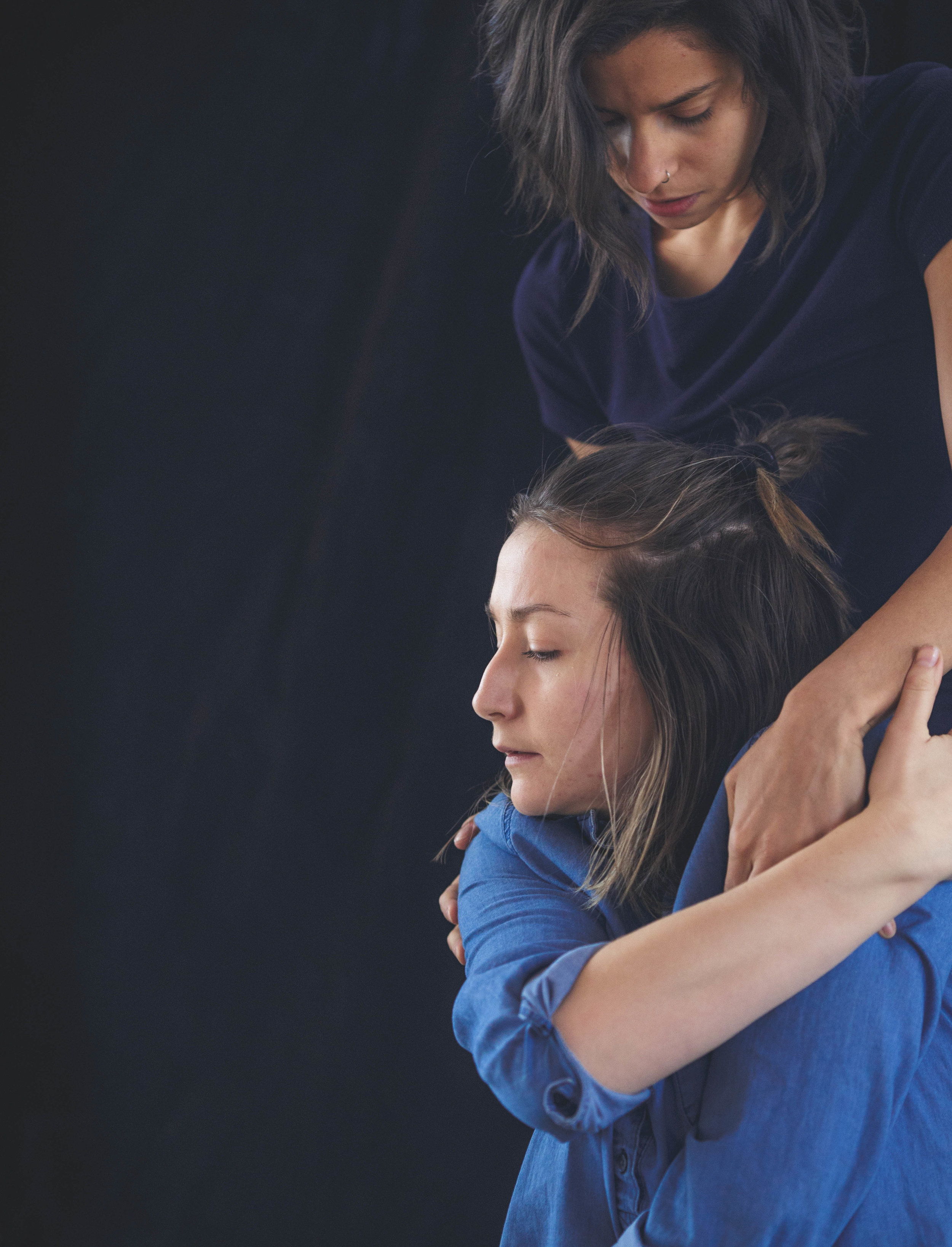
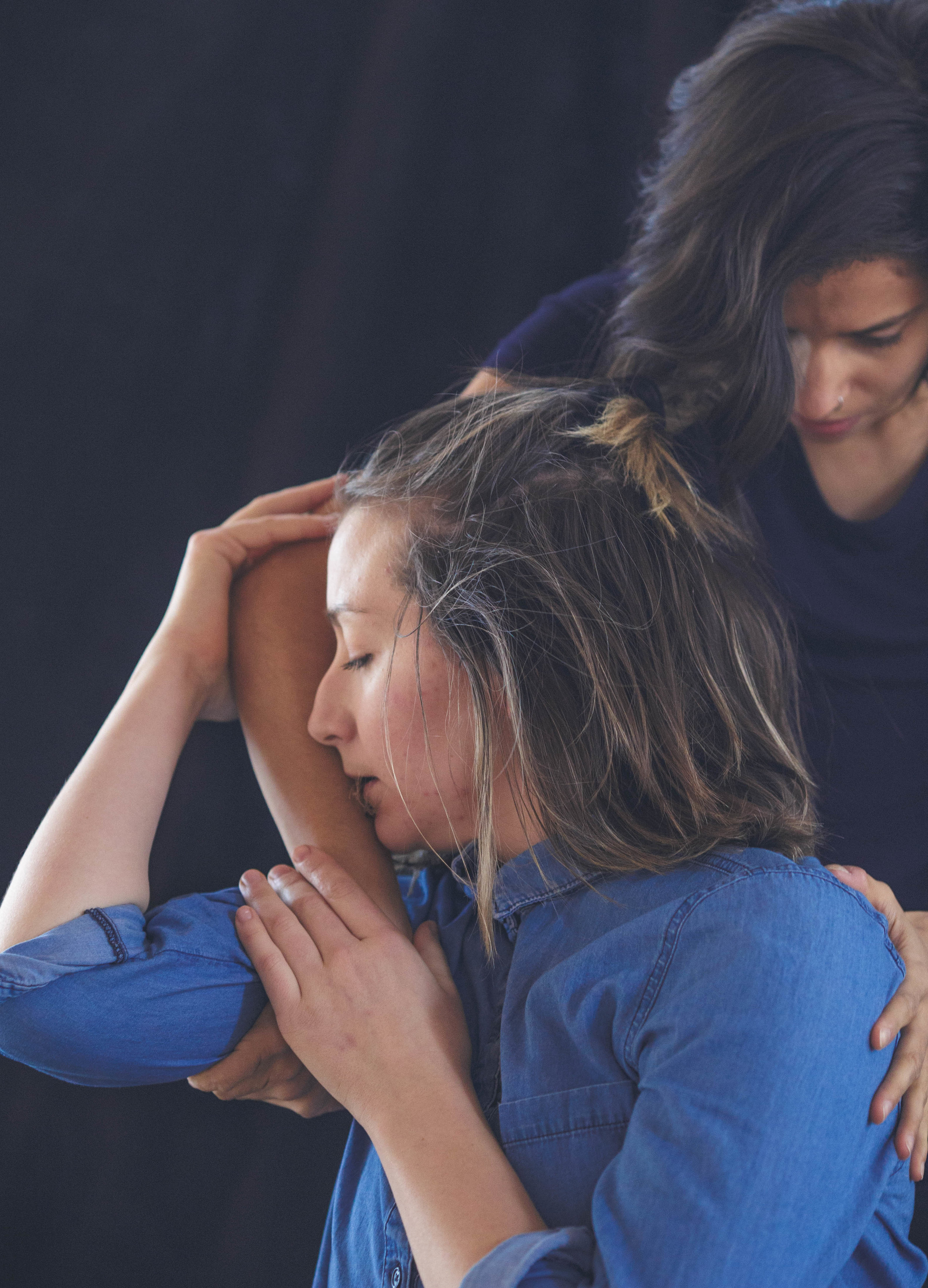
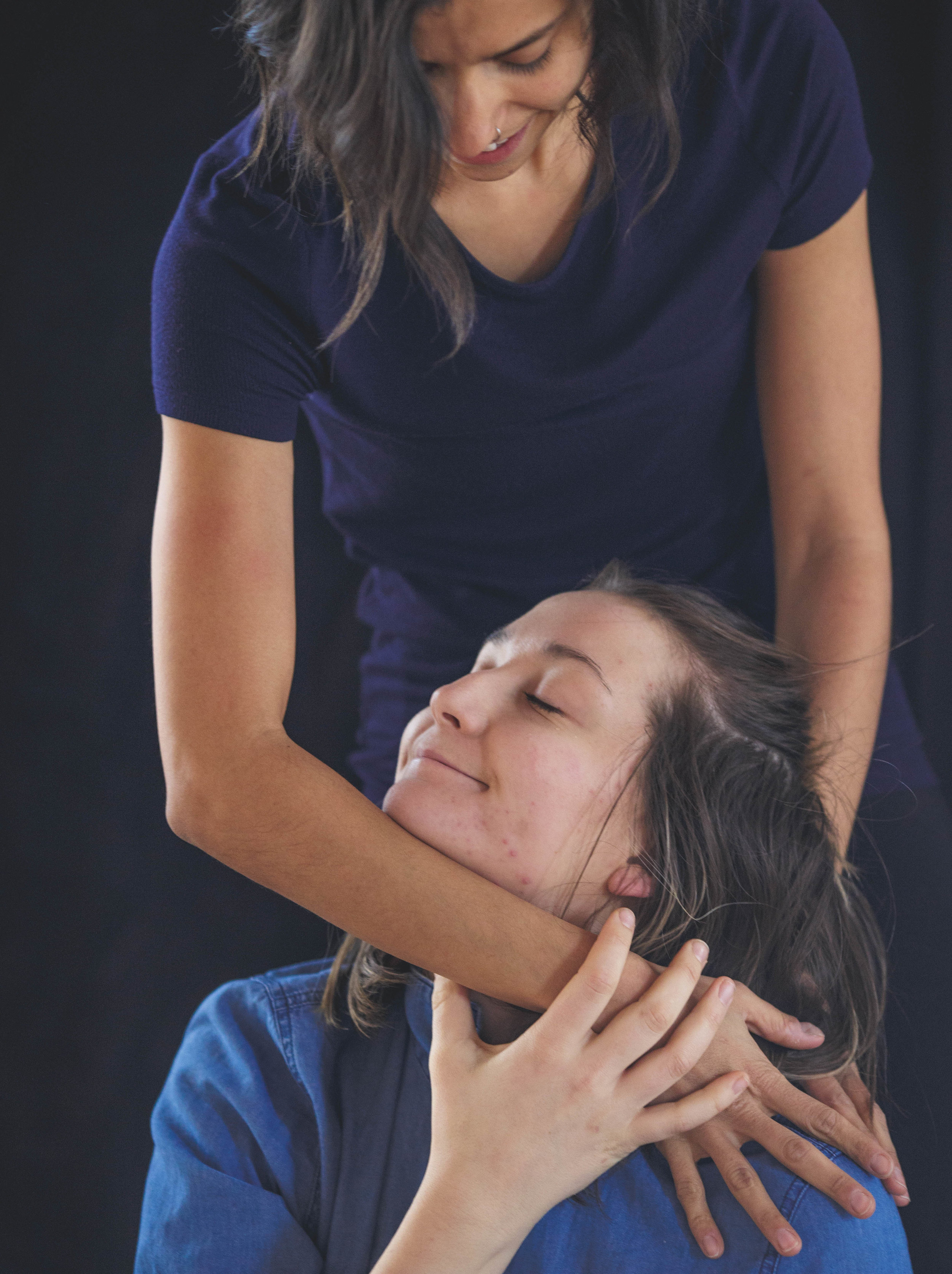
Self Portraits inspired by research
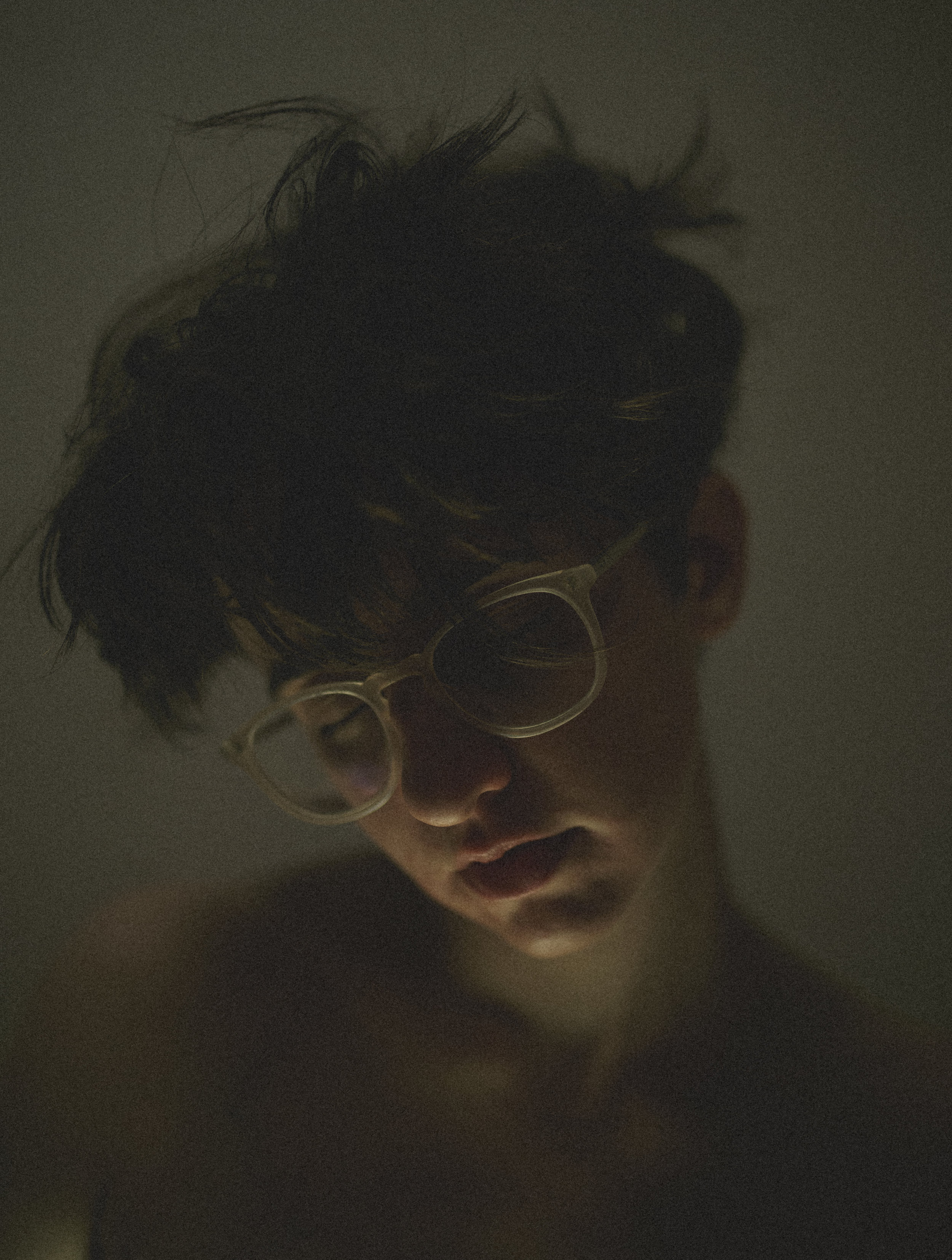
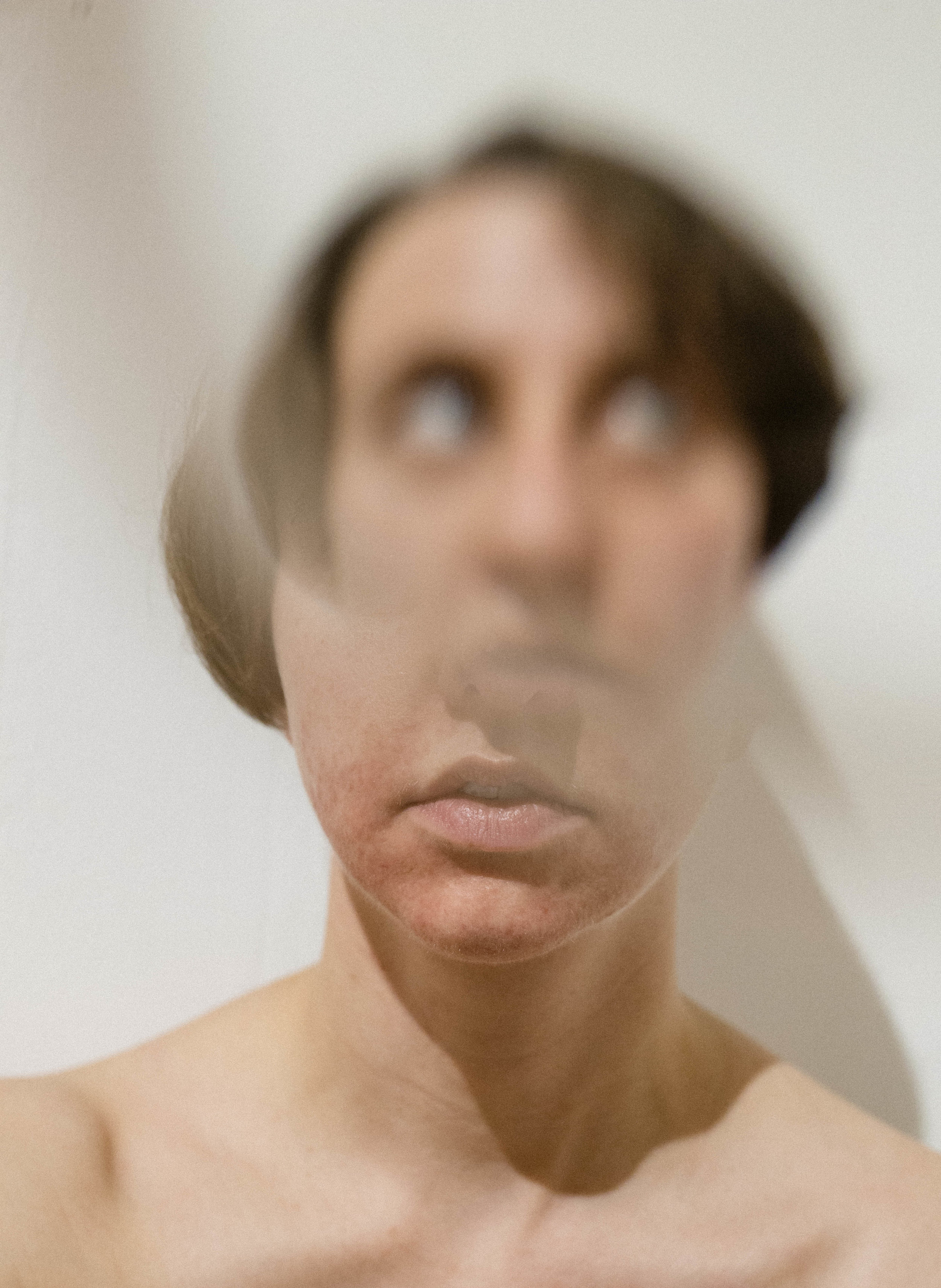
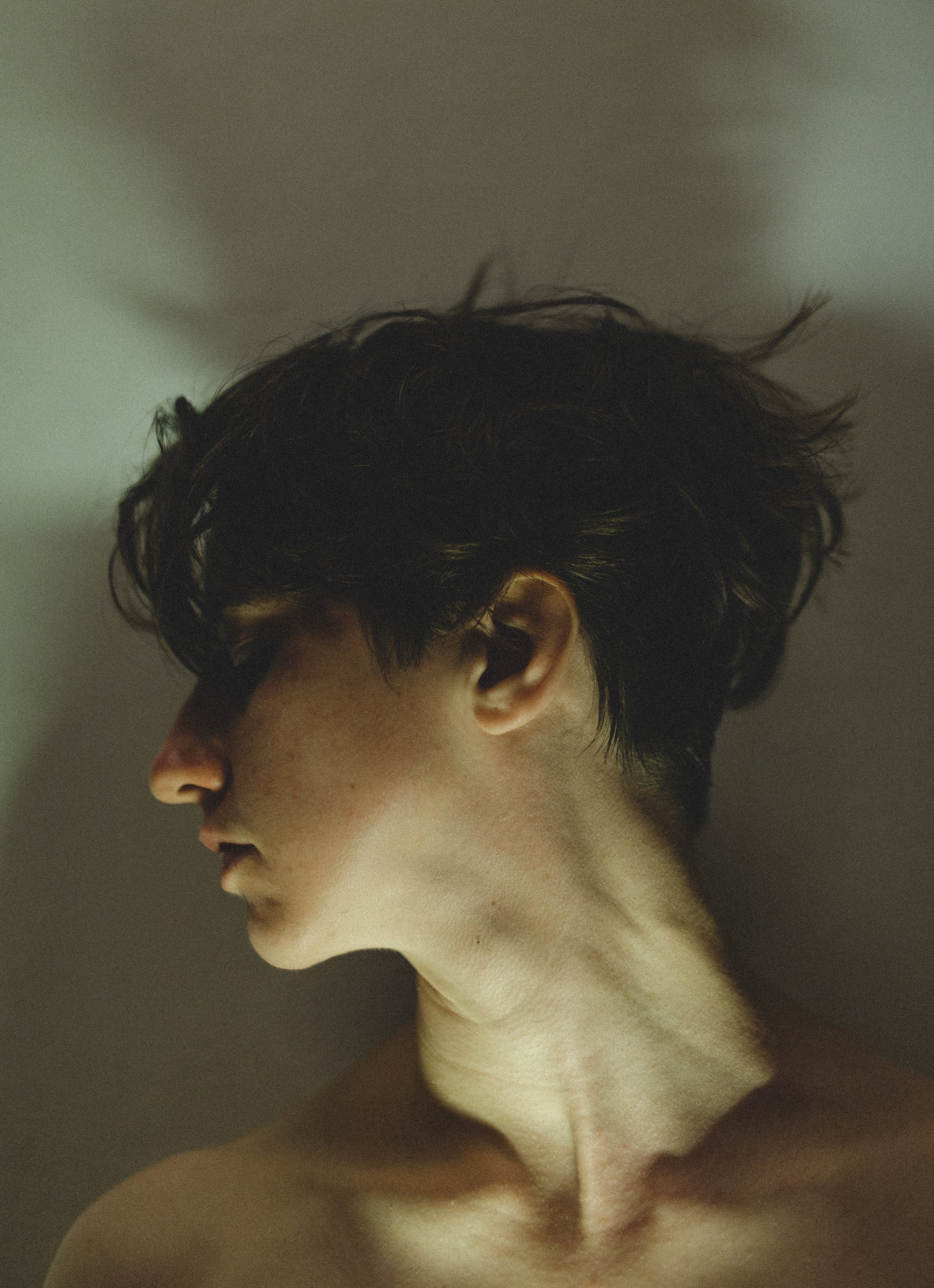
Michelle Panting is a writer and lens-based artist living in Winnipeg, Manitoba. In 2013, she
founded FULL, a website dedicated to documenting art, culture, and travel. Through FULL,
Michelle interviews artists and cultural influencers as well as capturing their work through
photographs. In her personal artistic practice, she uses both still and moving images to explore
issues of identity, mental health, and trauma. Michelle has exhibited her work at aceartinc. and
Parlour Coffee. She is currently enrolled in the Cartae Open School at aceartinc.
dance, discipline, and the anarchic body; or, how do i get my body to let me take a dance class?
2015-2016 Research Series
how do i get my body to let me take a dance class? this sounds like i’m invested in the mind/body split. I’m not, but i slide into it as readily as the next person born after René Descartes started thinking he is because he thinks he is. some believe that Descartes’s famous seventeenth-century statement, “i think, therefore i am,” founded modernity. right up to the present day, many people regard the mind or brain as the boss of the body. dualisms such as mind/body, man/woman, adult/child, good/evil all feature one term that is privileged over the other term. in the mind/body pairing, the mind is usually the one on top. a friend of ours is writing a play about cryonics. in cryonics, they sometimes freeze whole bodies, but you can also get someone to cut off your head and freeze it after you die so it can get reattached to another body when they’ve figured out how to fix what killed you. that’s how much some people value their bodies, apparently. in my case, though, when it comes to taking dance classes, anyway, it feels like it’s my body that’s calling the shots. it feels like i have an anarchic body, one that doesn’t want a leader or a mind thinking that it’s the boss.
anarchy means “no leader”: this is the literal translation from the Greek. i’ve been in a university environment for much of my life, so i’m used to leaders and to having my mind disciplined by them. for many years, i’ve had professors, advisors, employers, and department chairs telling me what to do. i might not like the hierarchical, top-down structure of so many of our school and work environments, but where the life of the mind is concerned, at any rate, being directed is something i can handle, even enjoy. and my body comes along for the ride.
disciplining my body, though, is a bit different. there are limits to what it’ll put up with. for years, i attended yoga classes, but, with yoga class, you don’t have to be all that disciplined: you can go or not go. it’s not like you have to be at a particular class on a regular basis. and because i have this somewhat hypermobile, disorderly body, yoga teachers would tell me to do the opposite of what they were telling everyone else to do or to do what felt right in my body. so i wasn’t exactly getting bossed around in yoga class. plus, half the time yoga instructors are making exactly the same shapes at the same time as everyone else so it feels like you’re all in it together. and moving to music at home or in a club or in free-style dance classes such as the Isadora Duncan workshop that Jolene Bailie arranged are experiences that i really enjoy. (Isadora freed dance from many of its restrictions, and i learned about her contributions when i was really young, so participating in this workshop was really wonderful thing for me!) no, it wasn’t these experiences that tested my limits; it was when i tried to learn a classical Indian style of dance named Kathak with Ian Mozdzen that my body rebelled.
the Kathak teachers were awesome, the people at the India School of Dance were super nice, and Kathak is super beautiful and interesting, but however much i thought i wanted to learn Kathak, my body just didn’t want to go to the same place at the same time every week and be taught to move with the kind of precision required by a classical dance form. having to move my arms or legs up or down or in or out several inches so as to mimic these ancient postures—however beautiful and charming these postures are—ended up being the proverbial straw, in terms of my physical training. Ian continued with Kathak lessons; in fact, he will be moving to India at the end of summer to learn more about classical Indian dance. and me? i dropped out. and i really wanted to learn Kathak, too.
the Hunger Games series of books and films features Twelve Districts filled with poor people who supply the citizens in the wealthy Capital with all that the well-to-do citizens need to thrive. it’s a lot like the relationship between the body and the mind of a scholarly type person: the body is like the Twelve Districts: it supplies the food and circulates the blood and the oxygen and then it has to just sit there and keep working at supplying the whole body with stuff while the mind—which resembles the wealthy citizens of the Capital—satiates itself with books and films and lectures. in the Hunger Games, because a Thirteenth District had tried to overthrow this unjust system sometime in the past, each of the twelve remaining districts has two of its young people selected to fight to the death in the annual hunger games while the citizens of the Capital get “entertained” by this blood sport. importantly, in each annual hunger game, there is only one winner. eventually, the people in the Twelve Districts rebel, inspired by the heroine, Katniss Everdeen, who refuses to kill all her opponents and become the sole winner of the games. trying to learn Kathak has taught me what i’d only suspected was true from all those years in yoga classes: that my body has a mind—many minds! entire districts!—of its own. perhaps a more egalitarian relationship among all these body-minds and my mind-mind (which no doubt has its own bodies, too) might make it possible for me to take a Kathak class sometime.
and this is precisely what anarchy is all about: egalitarian relationships. anarchy often gets a bad wrap. it’s frequently compared with chaos or nihilism, concepts which no doubt have their up sides, as well, although we seldom hear about them. in fact, Elise and Jasmine Allard, in their performance on January 16th, demonstrated that chaotic movement can be a safe and welcome expression of intense feeling if someone you love is there to catch you. i’ll talk about two separate moments from this performance: in the first, Jasmine holds Elise around the waist while Elise moves her arms and legs intensely; in this first instance, intense movement is enabled by Jasmine’s grasp. in the second of these two moments, Jasmine dances around like crazy until Elise can’t stand it any more and stops her. each sister is the ground that supports the other’s wildness. love both enables and disables chaotic movement.
researching this paper, i learned that contemporary theorists of anarchy embrace wildness and that they are concerned about oppression and the abuses of authority. authority tries to convince us that the few are more forceful than the many. no one in their right mind,—or maybe i should say “in their right body”! or, “in their right body-mind”!—would believe this for long, would they? Isabell Lorey is one of the scholars who is currently theorizing anarchy. Lorey writes about the 2011 Occupy Movement, the writings of philosopher Jacques Ranciére, and the idea that real democracy—by which Lorey means direct democracy, as opposed to representative democracy—is anarchic. what Lorey wants us to do is to practice democracy, real, anarchic democracy, all the time. she calls this “presentist democracy” (59). fill all of our presents, all of our nows, with real, egalitarian democracy, that’s what Lorey advises. And, if democracy is what we actually want, this recommendation makes a lot of sense, for, as literary theorist Jon Clay puts it, “the equality of beings is not imposed … [on us] from ‘above’ … but is rather … [our] own”; it “is assumed among … [ourselves]” (15).
image: Sasha Amaya
Lorey’s recommendation about being present involves having a different kind of relationship with the past and the future, a relationship that is perhaps more distanced, or more occasional. instead of thinking about the past or the future a lot, might we choose, instead, to think about them only when we really need to. rather than “intending” to do a given thing, might we “carry” an idea “with us,” instead? would this be a substantially different way of doing things? how do we “get out of” dwelling in our pasts or in our futures? i think that Brenda McLean and Brittany Thiessen demonstrated a way to do this in a sequence of movements accompanying an apology. during their rehearsal of “Dinner,” a vignette from Caryl Churchill’s Love and Information, Brenda flippantly, insincerely apologizes to Brittany before following this up with a sincere, heartfelt apology. during the flippant apology, Brenda turns her back on Brittany and moves away from her. but during the sincere apology, Brenda wraps her entire body around Brittany, who is seated on the floor. apologizing addresses feelings of guilt, grief, or regret about an event that happened in the past. an insincere apology will keep this past event in play and maintain the distancing effects of estrangement. in contrast, a sincere apology can collapse this distance, assuage troubling emotions, and bring people together in the intimacy of a present moment of reconciliation. and Brenda’s and Brittany’s movements demonstrate how collapsing space collapses time, too. the direction and orientation of their bodies in space encode the temporal dynamics of the sincere and the insincere apology and bring to life the presentist politics recommended by Lorey .
these days politics has been largely reduced to policing people who are barely able to eke out a living (91). this perspective about contemporary politics is associated with thinkers such as Giorgio Agamben and Michel Foucault and it is a perspective that is also shared by a theorist named Mick Smith. while writing about how we might stop dominating what he calls “the more-than-human world,” Smith celebrates wildness. he calls wildness innocent, “ethically anarchic” (92), and “synonymous with creative freedom from social restraint” (94). Smith’s “more-than-human world” played a significant role in classes offered during the Young Lungs Research Series. on January 24th, facilitators Ali Robson, Janelle Hacault, and Sasha Amaya asked those who attended the classes to become sand, water, gulls, and trees! French philosophers Gilles Deleuze and Felix Guattari see all earthlings as interconnected, as assemblages that are always becoming with the things that they—we!—come into contact with. this is true in the most basic and fundamental way. when we eat mushrooms, melons, or mango, we become these plants and they, in turn, become human beings. our interactions makes us assemblages of human and non-human parts. we breathe in what trees exhale—and vice versa! other kinds of becomings took place during these classes, as well. Sasha asked class participants to move around the dance floor with different body parts doing the leading—first the pelvis, then the ribs and the feet—people were even asked to let their bodies be led by more than one body part at once! in becoming-led by pelvis-minds, rib-minds, and feet-minds the leadership of the thinking head was disrupted, although it, too, was given its chance to take the lead! on another occasion, in a rehearsal exercise featuring one person mimicking another person’s everyday gestures, dancers Freya Olafson and Lise McMillan were asked by creator Treasure Waddell to become one another!
these types of exercise ask us to engage in a certain wildness, or in what Mick Smith calls “creative freedom from social restraint.” in this phrase, Smith celebrates freedom along with wildness. i would sure love to celebrate both of these ideas, too. but while celebrating wildness has many fans among anarchists, there are some thinkers, though, who argue, and very convincingly, too, that the concept of freedom is just another tool in the massive toolbox of those who police us. in fact, a theorist by the name of Nikolas Rose argues that governments invented freedom! as Rose explains it, governments convince us that certain behaviours are reasonable and normal. then governments convince us that we freely choose these very behaviours that they have conditioned us to adopt! Rose suggests that we think the way our governments want us to think, including and perhaps especially when we think that we are free. and thinking that we are free when, in fact, we are being highly disciplined and rigidly policed by those who govern us may be one of the biggest problems, in Rose’s point of view, that we moderns face.
Seeing Rachelle Bourget in rehearsal really brought home to me the visual dominance of the thinking head and its companion, the expressive face. for the first part of the rehearsal, i’m sure i spent as much time looking at Rachelle’s face and head as i did observing her dancing body. and even as i write this i realize: there i go, participating in the mind/body split again! i’ll start over. at first, i spent as much time watching the top eighth of Rachelle’s physical form in rehearsal as i did watching the other seven-eighths. then Rachelle wrapped a red scarf over her head and almost everything about my viewing of her movement changed. Rachelle’s head became another part of her moving body, an eighth of her body as opposed to the head of a body. lots of other interesting things became apparent, too: many of her movements were directed sideways; in other words, they were oriented towards the horizontal plane. (poststructural theorists, much like anarchists, are very interested in collapsing hierarchies, and they talk a lot about collapsing them by putting things side-by-side. poststructuralists are all about the horizontal, the lateral, the sideways.) to return to Rachelle’s dance: with her head covered, Rachelle’s limbs—pale in contrast with her black clothing and red scarf—came more into focus and the way she moved one arm as if to fit her elbow into the curve of her waist came to seem like an exercise in self-construction, something i might not have noticed had Rachelle not donned the mask. at the same time, Rachelle’s other arm was angled such that the space between this second arm and her core became a hole that drew my attention to the air within which she moved, air that was shared by everyone else in the place. also, Rachelle’s body made curves where one would not expect them and straight lines where i would never have thought them possible; for instance, at one time, Rachelle’s arm and shoulder were angled in such a way as to point straight down at the floor while the rest of her figure remained erect. i’ve put a slide of the “Russian feminist punk rock protest” (wiki) group Pussy Riot up on the screen because the effect of Rachelle’s dance, on me, anyway, was very political in a horizontal, egalitarian way. the other seven-eighths of our bodies offers so much!
in the introduction to his book Exhausting Dance: Performance and the Politics of Movement, André Lepecki explains that, “Rethinking … [what it means to be human] in terms of the body is precisely the task of [dance] choreography” (5). Lepecki has his criticisms of choreography, however, due to the “commanding voices” of its masters and the extensive discipline it requires of dancers who must nonetheless maintain a posture—and the imposture—of spontaneity (9). Lepecki goes on to talk about how dance is supposed to be all about movement. movement is the ontology or beingness of dance, as, since the Renaissance, at any rate, dance has been understood to be the art form that is all about uninterrupted, unceasing, rhythmic, flowing, movement. modernity, itself—that is to say, the period that stretches from the time of Descartes’s famous statement, “i think therefore i am,” all the way up to the present day—, is said to be all about movement, too, by some theorists; and Lepecki agrees.
but Lepecki is something of a rebel, as well. while he agrees with those who argue that modernity is all about movement and that dance, since the Renaissance, has been all about movement, he rebels against the idea that dance needs to be defined this way, preferring, instead, an expanded definition. Lepecki would have dance appreciated as a dynamic political force that embraces the body’s movement and its stillness, as well as the contributions of the philosophical, theorizing mind. now, what Lepecki says about dance being an art form that is predominantly about movement makes a lot of sense. i wonder, though, about his suggestion that movement is, as he puts it, “the kinetic project of modernity” (my emphasis 3). another way to look at it would be to think of modernity as being about people coming to terms with the fact that everything is always already in motion as well as the fact that the earth isn’t some still point at the centre of the universe, the way many Europeans apparently thought it was before Copernicus. dance, making use of both movement (and relative stillness), may be the art form that can help us the most as we come to terms with the fact that movement and change are the only constants, the only things that don’t change.
Mark Franko is another theorist who is interested in dance’s political contributions. for Franko, dance need not be the traditional, choreographic product of a student who mimics a teacher; it can also be the incorporation or becoming-embodied of the gift of dance. he makes this claim in “Given Moment: Dance and the Event,”a meditation about how dance, post 9/11, can help us come to term with events, especially traumatic events. Franko foregrounds the teaching methods of a Balinese dancer and teacher named Mario who transmits dance moves with his own body by “position[ing] himself behind his pupil whose arms and torso he manipulates into positions” (119). as one pupil puts it, the person being taught is like a tree whose branches are being arranged. Since the dance moves are not being “transmitted across a mediating space of observation and interpretation” (120), Franko characterizes this kind of teaching as a gift. this teaching is the giving of “self-force”; it is “the communication of dance as gift” (120).
The Young Lungs Dance Exchange Research Series has foregrounded the gift of dance and genuine spontaneity, too, particularly in the form of improvisation and collaboration. during her show, Treasure Waddell used improvisation to include the audience in the collaboration. the Research Series was itself an extensive network of collaboration. in fact, i wonder if the degree of collaboration during this Young Lungs Research Series might even address a criticism that some theorists make about gift economies. some theorists suggest gift-giving necessarily creates debt. if you give, there is the expectation that the person you give to will give something back, which is the debt part. in the Young Lungs Series, the creator of one show was a dancer in another and a dancer was also an administrator and on and on! so, in a situation with this degree of collaboration, where people are giving and getting all the time, finding someone who could be experiencing a lack of a reciprocity that could be called debt might actually be quite difficult! there is no doubt in my mind-body district that there were masters of dance involved in the processes of these past months, but the degree of reciprocity among the participants has made hierarchy virtually indiscernible.
collaboration may be another way to think about anarchy. if we (and our body parts) are always taking turns leading the way, are there still people whom we might characterize, in total, as leaders?
theorists of anarchy are frequently theorists of utopia, as well. and, like the word anarchy, the word utopia uses negation to make meaning. whereas anarchy means “no leader,” utopia means “no place.” put another way, the word utopia suggests that there is, in actuality, no fabulously wonderful place, no place in which we all might want to be and become together. but maybe, if we were to practice the kind of presentist democracy that Lorey recommends and if we were to have a revolving leadership such as the one demonstrated in this Research Series, we could have anarchy in both senses—in the dual sense of direct democracy and in the sense that there is no one person who is “the leader”—and maybe we could have utopia, too, here, in this place where we live. which would mean we’d need to coin a new word, a word for utopia achieved. how about the Cree word “ōmatowihk,” which means “in this place”? we could say—here’s a sample sentence—the Young Lungs style of dancing and dance-making is “ōmatowihk,” or the state-formerly-known-as-utopia achieved “in this place.”
oh, and i think i’ve learned a way to get my body to let me take a dance class! maybe i need to stop disciplining my mind quite so much; maybe this way my body can handle a little more discipline!
Co-founder Natasha Torres-Garner introduces a. charlie peters.
Works Cited and Referenced
Franko, Mark. “Given Movement: Dance and the Event.” Of the Presence of the Body: Essays on Dance and Performance Theory. Ed. André Lepecki. Middeltown, CT: Wesleyan UP, 2004. Print.
Lepecki, André. Exhausting Dance: Performance and the Politics of Movement. New York: Rutledge, 2006. University of Winnipeg eBook. 21 Nov. 2014.
Lorey, Isabell. “The 2011 Occupy Movements: Ranciére and the Crisis of Democracy.” Trans. Aileen
Derieg. Theory Culture and Society 31.7/8 (2014): 43-65. SAGE. Web. 22 December 2015, Rose, Nikolas. Powers of Freedom: Reframing Political Thought. Cambridge, UK: Cambridge UP, 1999. Print.
Smith, Mick. “Primitivism: Anarchy, Politics, and the State of Nature.” Against Ecological Soveriegnty: Ethics, Biopolitics, and Saving the Natural World.
Research Series July 2016-June 2017
(November-January)
with essayists Jillian Groening and Leif Norman
Jaime Black is a Métis multidisciplinary artist based in Winnipeg. Perhaps best known for her pivotal work The REDress Project, an installation project addressing violence against Indigenous women and girls. Jaime’s art practice engages in themes of memory, identity, place and resistance.
Currently Researching…
Jaime’s work is situated in an understanding of the body and the land as sources of historical and cultural knowledge and is centred around themes of memory, identity, place and resistance. She is interested in the body/land as sites of social and political struggle, sites of historical, and collective memory and as vulnerable and often contested spaces. She is interested in the ways in which we can re-establish agency and resilience through interactions between the land and the body.
-=Team=-
Leah Decter is an inter-media artist and scholar currently based in Winnipeg; Treaty 1 territory. Her work focuses on contested spaces, largely contending with histories and contemporary conditions of settler colonialism through a critical white settler lens. Decter’s work has been exhibited, presented and screened widely in Canada and internationally in the US, UK, Australia, Germany, Malta, the Netherlands and India. She holds an MFA in New Media from Transart Institute (Berlin) and is in her final year of a PhD in Cultural Studies at Queens University (Kingston, Canada).

Brenda McLean and Ali Robson Photo by Leif Norman
Brenda McLean is a Winnipeg independent theatre artist, whose focus is on physical theatre performance and design. Recently Brenda has become very interested in Improvisation Dance Movement and Contact Improvisation Dance and how they can be used to create unconventional movement in theatrical performances. Brenda is interested in the combination of Contemporary Dance and Physical Theatre to create hybrid performance techniques with both text and movement. This last summer, she was one of the Choreographers in Company Link summer workshop where they created new choreography everyday with the focus on text and movement with dancers. Brenda is also the founding member of Theatre Incarnate, www.theatreincarnate.ca and The Talentless Lumps (an all female bouffon troupe).
Currently Researching…
McLean will research with contemporary dancer Ali Robson and mentor Grant Guy, the use of gesture in performance. How does one create gestures, what is gesture, how can it be used as a performance tool, how does one ask or direct gesture work from their performers? Many dancers and actors are asked to generate and create gestures in their performances with little to no training in it, we are going to investigate and train in this technique to better understand how we can use it best as a performance tool.

Lise McMillan, Emily Barker, Rayanna Seymour, Kristy Janvier Photo by Leif Norman
Kristy Janvier is from a small northern community in Canada called Flin Flon and is of Aboriginal (Dene), Irish, and Ukrainian decent. At the age of 18 she had an opportunity to work abroad as a performer in Japan. From there, her love of acting, dance, movement and exploring began. After two contracts in Tokyo and moving to California, Kristy embarked on two cruise ship contracts in the Caribbean before calling Hong Kong home for 8 years. While in Hong Kong, Kristy began to search out new forms of movement including yoga, contact improvisation, Gaga and other somatic practices which lead to a Hong Kong-Netherlands exchange of artists and debuting her first choreography credit while working with Korean visual artist Soyoung Lee. Upon returning Canada, Kristy has travelled to Toronto (Kaha:Wi Dance Theatre) and Vancouver (Raven Spirit Dance) to connect with contemporary Indigenous artists in the country. Her vision is to build bridges between the two worlds and filter this work up North. Inspired by all things in nature, Kristy continues to find new ways of connection and creativity.
Currently Researching…
For Kristy’s research project, the theme is largely based on water looking at it from the views of bloodlines, the rivers through the province that were once the highway systems of our ancestors and what they are now, the fluids in the body and healing rituals for change. Bringing together three other dancers with Indigenous backgrounds to dialogue and explore movement together to create this dance.
Artist Statement: Exploring space without leaving Earth. My feet have carried me to many place and in many ways. Ising the soles of my feet as landing pads, I allow the grace of my breath to move my body throughout the environment. Upon my recent return to Canada, I have to come to explore my ancestral and Indigenous roots to discover how their feet have travelled these lands. Im drawn to elements of nature, incorporating outdoors spaces, Through dance I’m able to step into the shoes that carry one into a world that cannot be expressed with words.
-=Team=-
Performers:
Rayanna Seymour (Hourie) is Anishinaabe from Naongashiing (Big Island), Treaty #3 Territory. Her parent’s are Lorraine Seymour and Raymond Hourie and she has 7 siblings. Today, she is in her second year of law school at Robson Hall, University of Manitoba. Seymour sits on a few Indigenous student groups and works part-time on Anishinaabe nibi Inaakonigewin (water law). Her goal is to continue on in graduate school and become a professor of law one day. One of her favourite activities—besides visiting with nieces and nephews—is dance. She grew up dancing in the pow-wow circle as a fancy shawl dancer, and then started dancing jingle in her teens and has recently picked up her shawl again, so now able to dance both. She also dances Zumba once a week to have some fun and release some stress from studies.
Emily Barker
Lise McMillan
(AUGUST-OCTOBER 2016)
with essayists Praba Pilar and Michel Saint Hilaire
Zorya Arrow Photo by Michel Saint Hilaire
ZORYA ARROW is looking forward to developing her new solo work in the Research Series this quarter. A Winnipeg-based dance artist, she holds a BA Honours degree in Dance with a minor in Theatre from the University of Winnipeg. As a graduate of The School of Contemporary Dancers Senior Professional Program Arrow has created over nine original performance works in the dance/theatre scope. Her major dance works have been presented by Nova Dance Collective and as a part of Young Lungs Dance Exchange’s (YLDE) Production Series.
Currently researching:
What are our bodies urges? How clearly do they sit in the body? What does miscommunication between the body and the mind look like, and where can one find clarity between the two? By exploring questions around mind-body connection or lack there of in a psychoanalytical way, one researcher Zorya Arrow aims to develop a movement framework for what will eventually be a seven minute dance piece designed for an alternative audience-performer relationship.
==- Team -==
D-ANNE KUBY [mentor] After 12 years with Winnipeg Contemporary Dancers (1979 -1991) D-Anne has gone on to work as an independent performer, choreographer, video artist, teacher, and rehearsal director. She relocated to Vancouver in 1994 but could only deny her prairie roots for so long. She currently resides in Winnipeg where much, but certainly not all of her dancing is done in the privacy of her living room.

Carol-Ann Bohrn Photo by Michel Saint Hilaire
CAROL-ANN BOHRN was born and raised in Brandon, MB. She is a graduate of the School of Contemporary Dancers and holds a B.A. Honours degree in Dance from the University of. She has performed work for local choreographers Jolene Bailie, Brett Owen, Ming Hon, Freya Olafson, Odette Heyn, Brenna Klaverkamp, Brent Lott, Alexandra Elliot and Nina Patel. She most recently participated in the Cartae program at aceartinc, where she created her first live piece ‘Eudaimonia’, her first video piece ‘Routine (Mea Culpa)’ as well as a series of digital prints. She will be performing at Fem Fest this September with Gearshifting Performance Works. She is interested in somatic techniques such as Feldenkrais, Alexander, Mitzvah, and meditation.
Currently Researching:
How do our thoughts and our behaviours influence one another? How is it that our actions can be utterly detached from our inner state? Carol-Ann Bohrn is interested in how this performative aspect, over time, can be forgotten or unconscious, and how it can turn into the basis of our identities and sense of self. When does a performance of “happiness” help you to overcome your pain? When does it displace your “authentic” experience further? How are traumatic experiences, depression, and the effects of social emotions like shame, guilt, embarrassment, jealously, envy, empathy, and pride processed in our bodies and in our environment? These ideas are the launching point for Carol-Ann’s research this fall. It will be articulated with physicality and video work in collaboration with local artist Madeline Rae.
==- Team -==
MADELINE RAE [collaborator]
hannah_g [mentor]

Delf Gravert Photo by Michel Saint Hilaire
DELF GRAVERT works mainly as an actor, and film photographer, and occasional funk/soul dj.
Most recently, he has finished an experimental film about his mother’s photography premiering at WNDX this year.
Last year, aside from doing a solo photography show at Fleet Galleries, Delf also studied Commedia Dell’Arte and Clown at Dell’Arte International School of Physical Theatre in California as part of the Professional Training Program. In 2014, Delf was honoured to have been a part of No Exit, in the role of Garcin, a theatre research production directed by Tom Stroud. He also devises his own stuff including the The Bike Ride, a physical comedy piece co-created with Leigh Anne Parry. Wonderful weird times were had in 2013 working with Young Lungs in a production, Encounters of the Mankind, alongside Ian Moyzden and directed by Tanja Woloshen. Delf also really digs learning the ancient art of kung-fu at Ching Wu and it is good because he can always make it there on time as it’s only a block away from his studio.
Currently Researching:
How does a persons environment affect one’s physicality and imagination. Responding primarily with nature, Delf is researching the necessary changes in physicality of say walking on an windswept icy lake in -50 weather, or moving on 4 limbs across an uneven rocky landscape. The seed of the research began in Nunavut with his own responses to landscape through voice, character, costume, and movement studies. How does our environment shape and change who we are, and how must we adapt our way of moving both physically and and with our inner self? The weather, landscape , the sounds we hear, the animals, the people we meet all shaping our reality and imagination, our supposed understanding of ourself.
=- Team -=
RICK SKENE [mentor]

Andrew Henderson and Eroca Nicols Photo by Michel Saint Hilaire
EROCA NICOLS aka Lady Janitor. After earning her Honors BFA in Film/Video/Performance and Sculpture from California College of the Arts (San Francisco, CA), Eroca Nicols’ artistic practice shifted to the body. She studied in professional programs in Canada at both Ballet Creole and The School of Toronto Dance Theatre before pursuing further training in functionally based and improvisational forms. She is currently a Toronto-based but nomadic artist, curator and educator. Her company and alter ego, Lady Janitor, has presented work in Canada, USA, Europe, and the UK. Eroca has performed internationally and is co-founder of the arts advocacy and professional training provider, the Toronto Dance Community Love-In. Her commitment to community based arts engagement has led her to create platforms for presenting both her own work and the work of fellow makers—DIMBY (Dance In My BackYard) and Badass Dance Fun (a mini festival at Toronto’s Harbourfront Centre) are among these projects, as is the Love-In. Eroca teaches partnering and contemporary dance including workshops in UK, Europe and North America. Her teaching and training are deeply influenced in her continued study of anatomy and biomechanics.
ANDREW HENDERSON aka Glamdrew.
Currently researching:
(to quote the team)
“Oh hieeee,
This is Glamdrew and Lady Janitor and we’re researching a dance piece in Winnipeg, Manitoba. We are -choreographer and mystical nomad, Eroca Nicols (aka Lady Janitor) and -dying, uncelebrated celebrity fashion icon, Andrew Henderson (aka Glamdrew .)
Some important points:
-We have been collaborating together for five years but recently our roles have shifted.
-Two years ago, Andrew was was diagnosed with terminal cancer, and roughly 3 months before that, Eroca got funding to research death rituals and the performance of grief around the world. We are not joking.
-Previous to the diagnosis, Eroca called Andrew “the stage manager of my life” and since being terminal, she has become the co-choreographer of Andrew’s death.
-The timing is obviously epic and has led us both into waves of death positivity, or death obsession, as the psychiatrist refers to it.
-Our current research involves deeply committing to practices of femme adornment, femmeditation and self care, finding ways to talk about death and dying in accessible as well as fantastic ways and developing a living funeral ceremony for the person dying as a performative as well as sacred act.
…It could stop there…
Or continue?
It’s basically fashion art queers working the latest funeral trends, subsisting in rural Manitoba, while developing a living funeral ceremony called Taking it to the Grave, nbd. The show involves the public confessing their sins and/or telling Andrew stories they want taken to the grave and then images from these confessions being live tattooed on his body amidst some mystical fashion, dancing, divination and ghosting. Taking it to the Grave is a ceremony performance on the verge of life and death.
YLDE Research Series showing: aceartinc October 18, I can’t remember the time…
Production run:
Sister Shows…
Taking it to the Grave: October 21, 8pm and October 23, 2 pm
Truthteller: October 22, 8 pm
All at aceartinc…”
=- Team -=
CARLY BOYCE [performer/collaborator]
SUE LAVALEE [mentor]
In Flux – A Visual Essay
The Ritual ~ Climb ~ The Performance ~ Velvet War
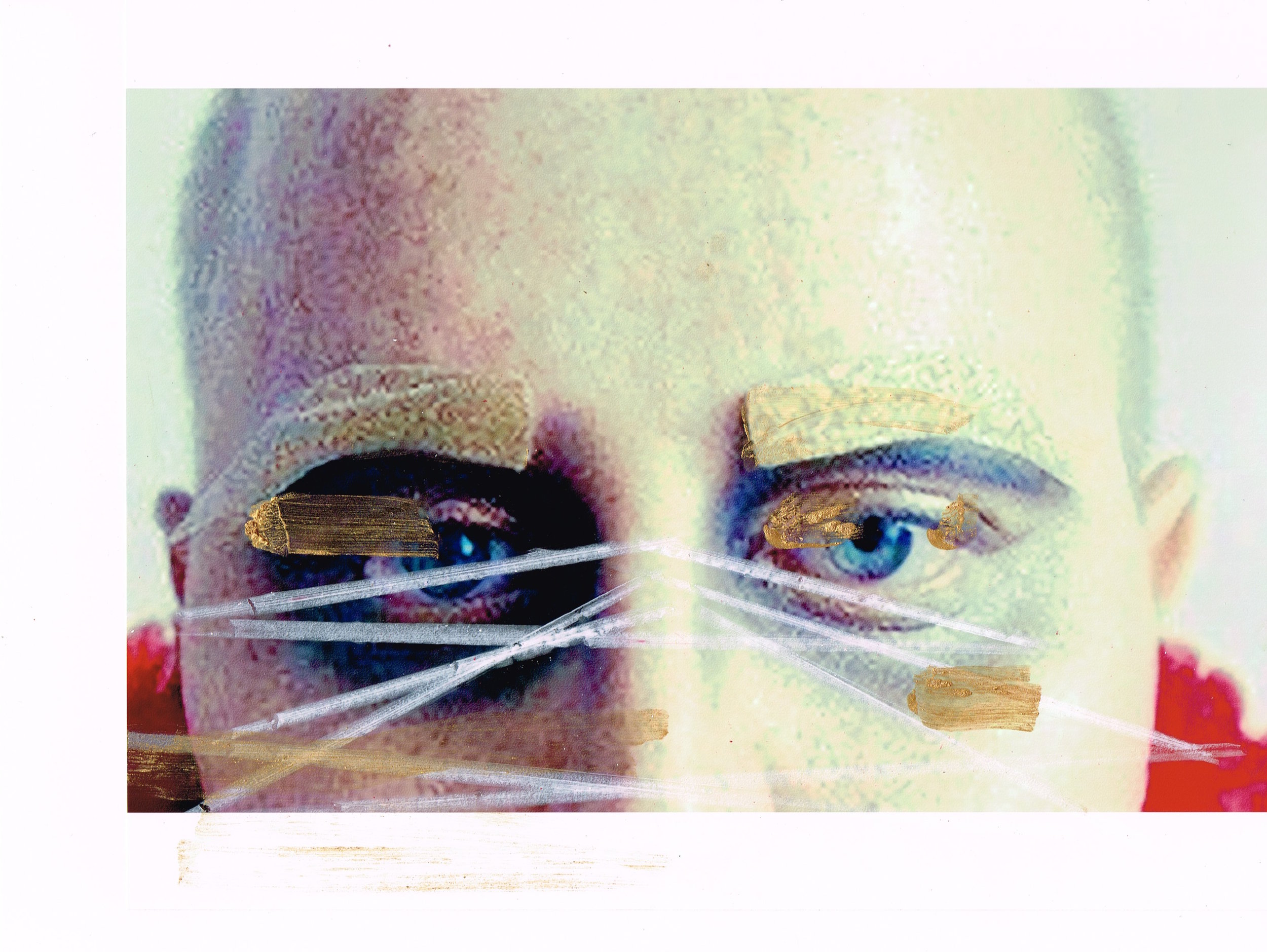
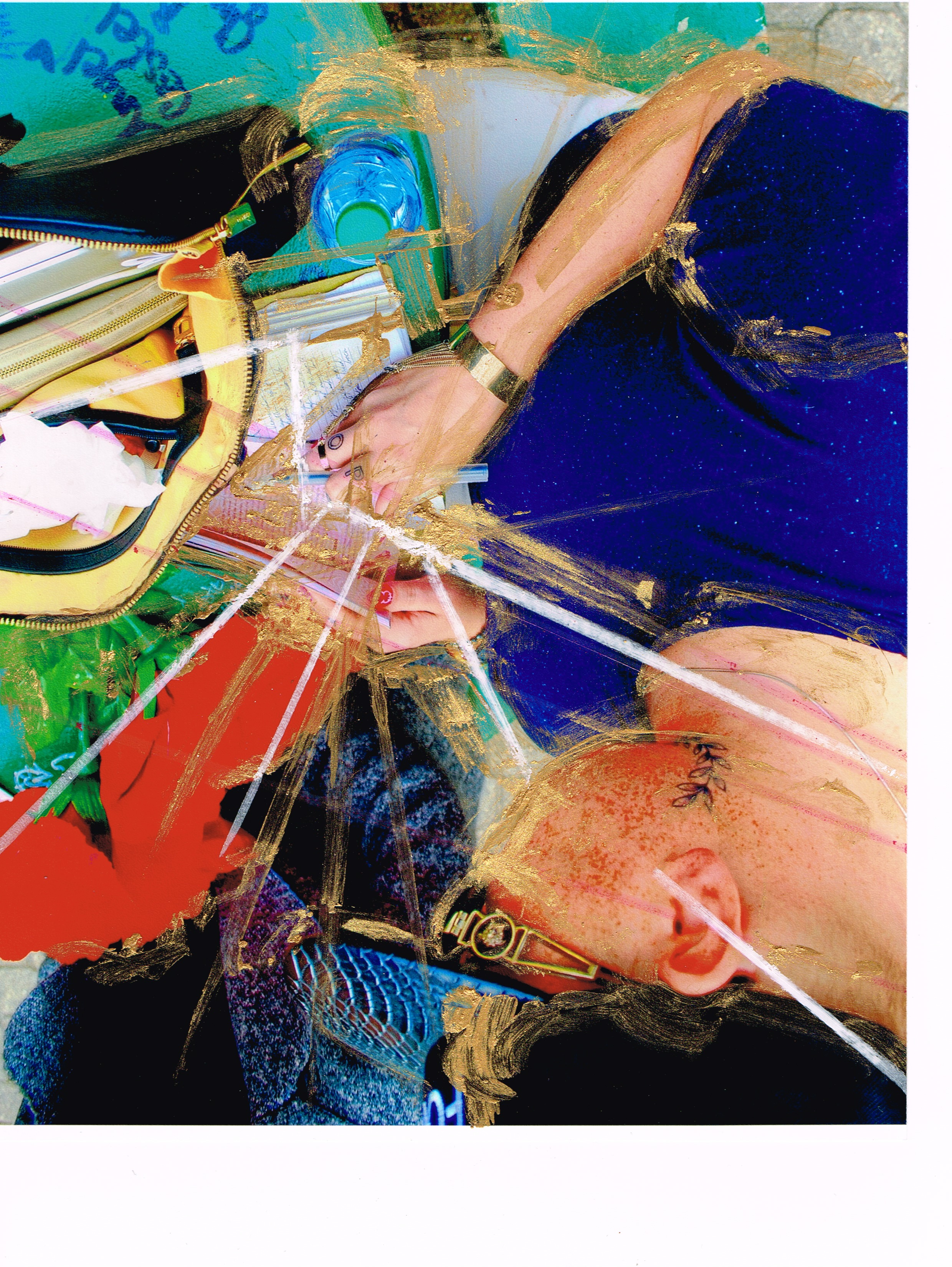
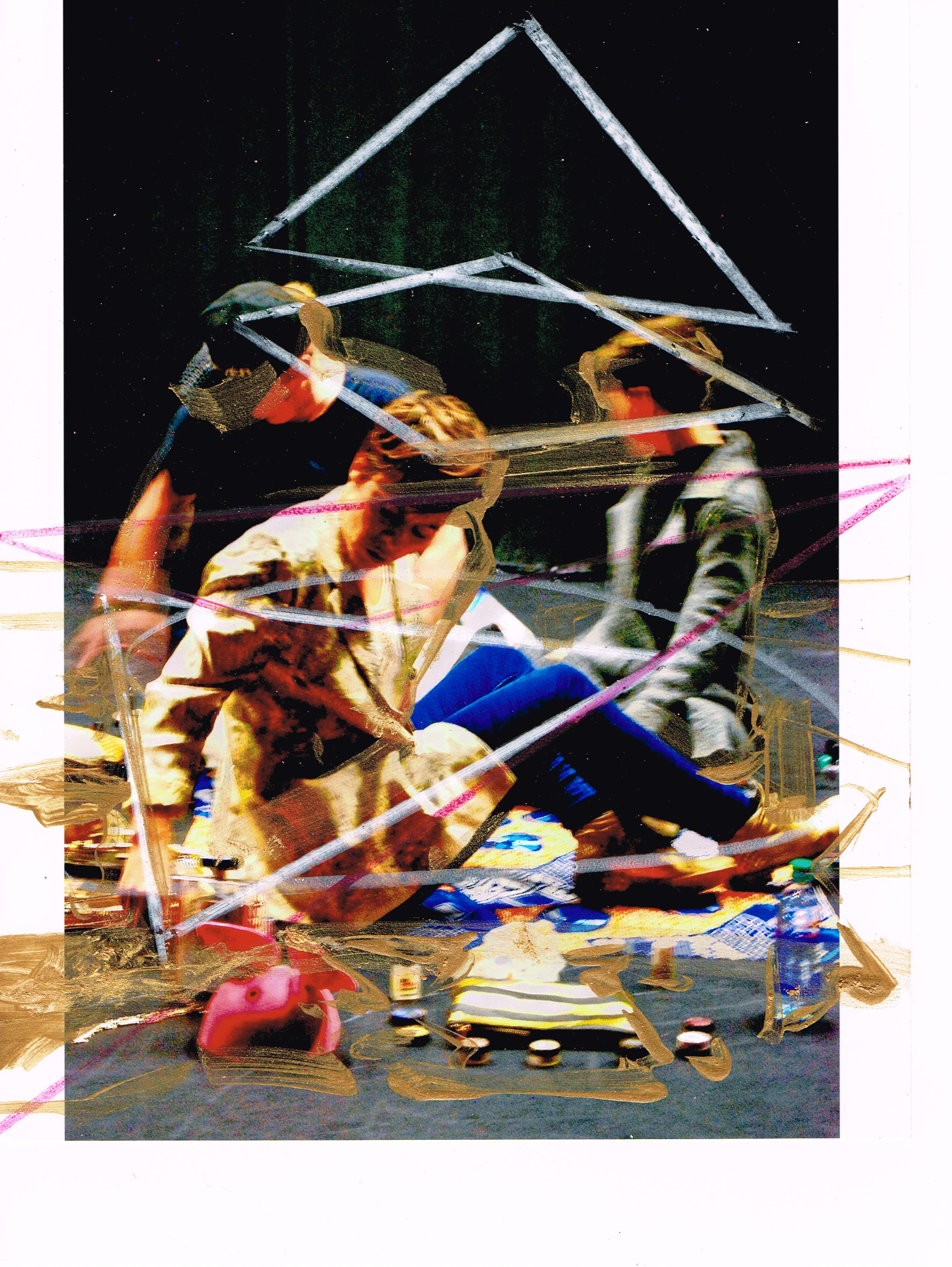
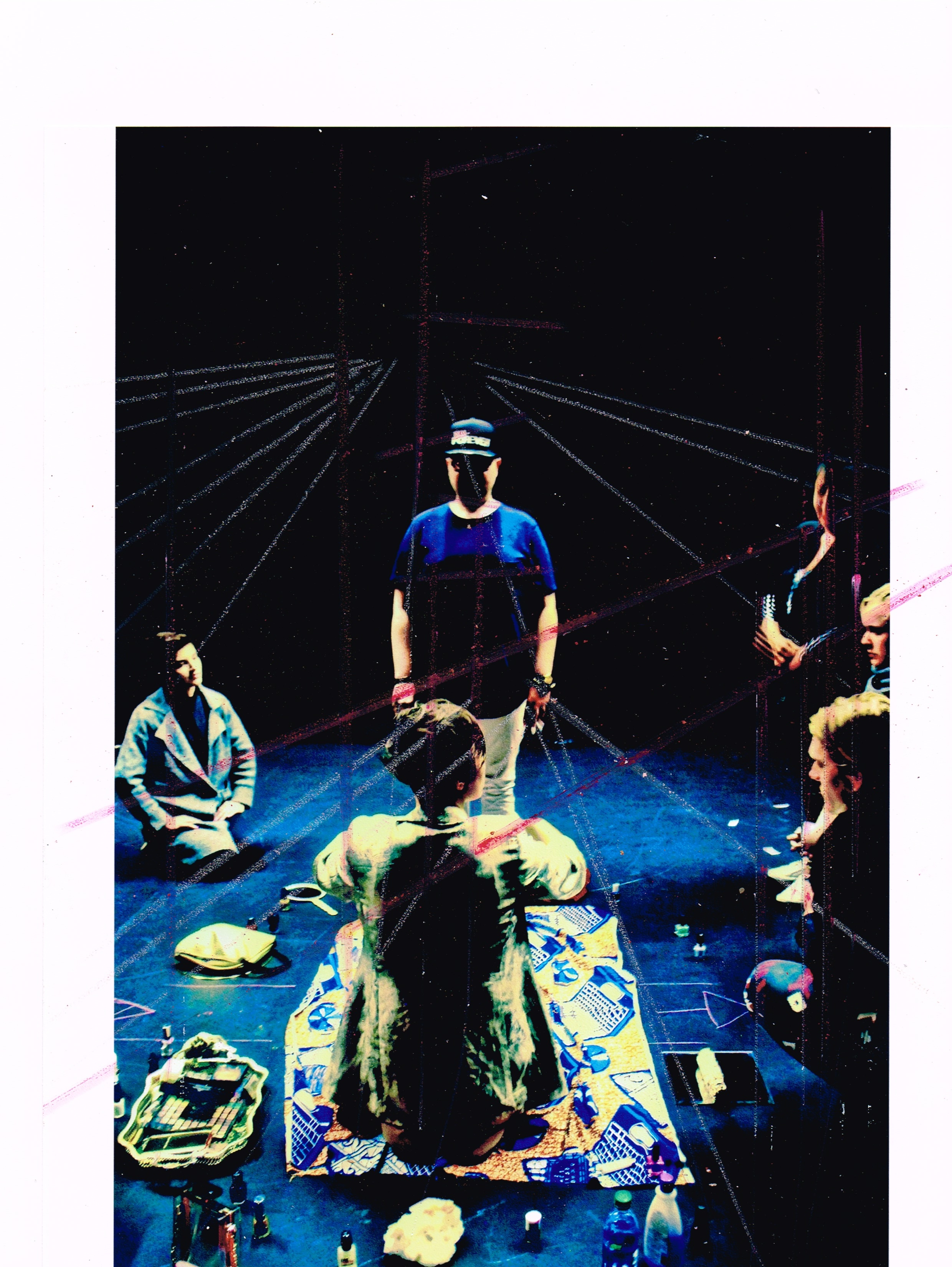
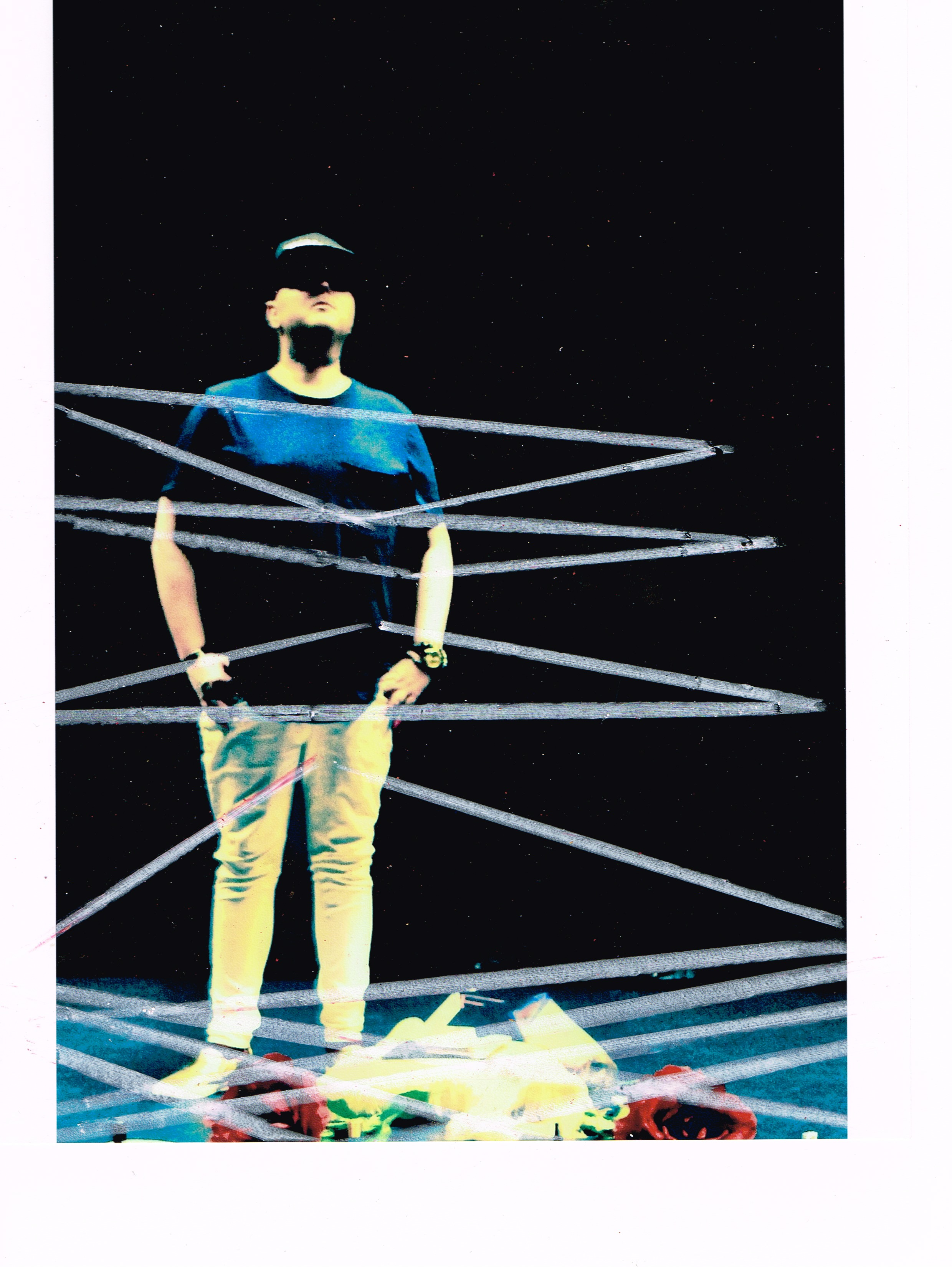
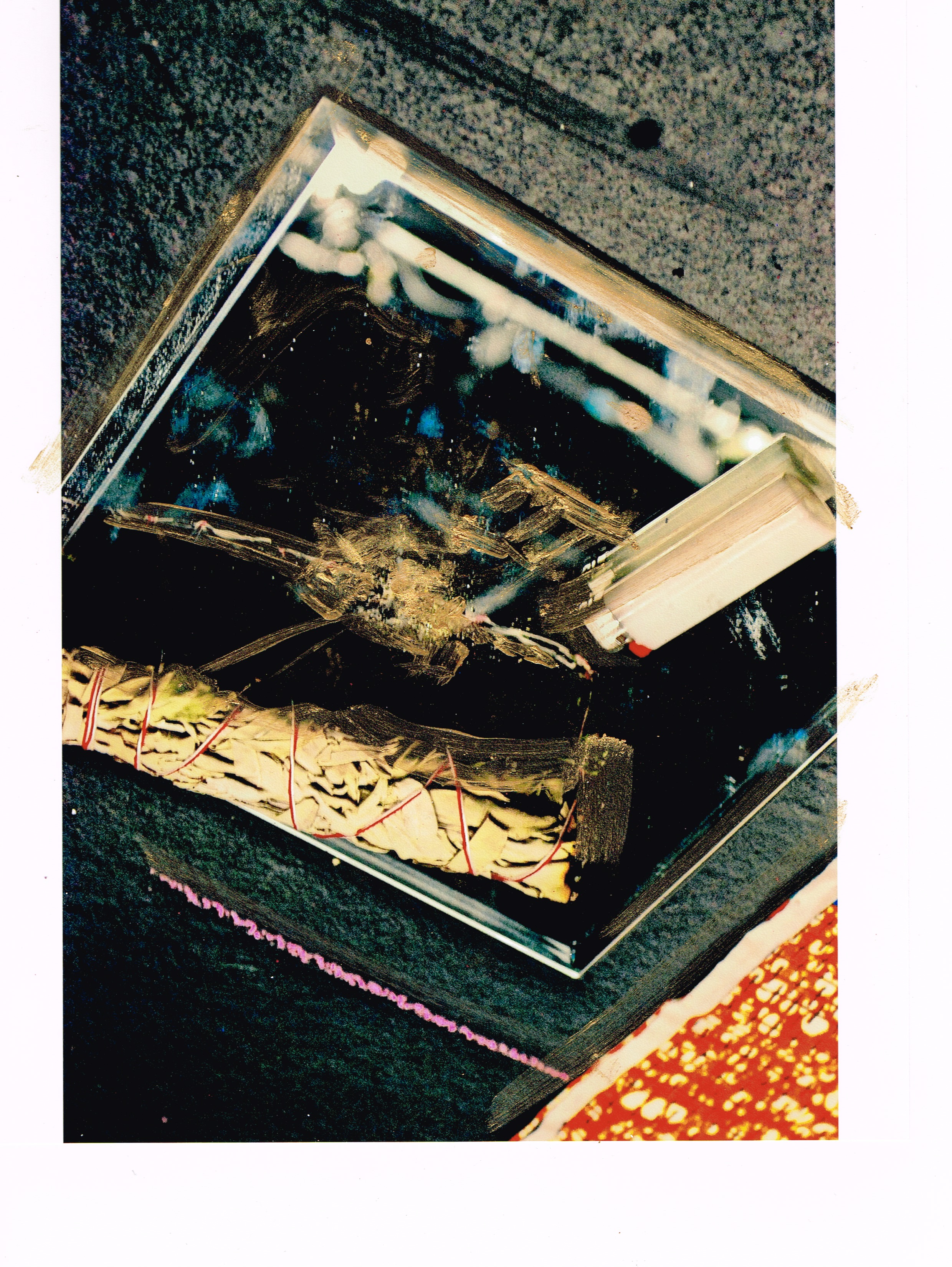
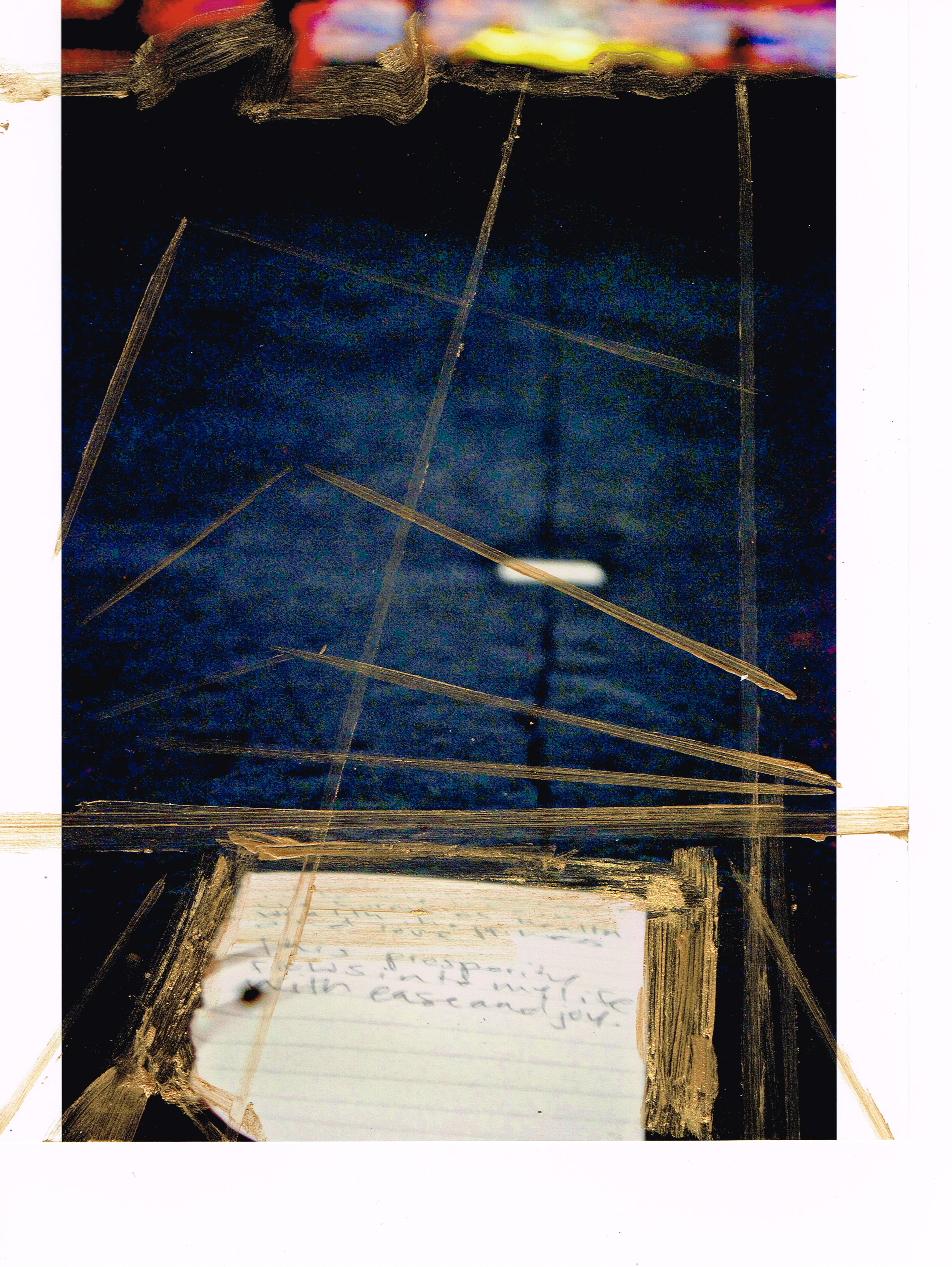
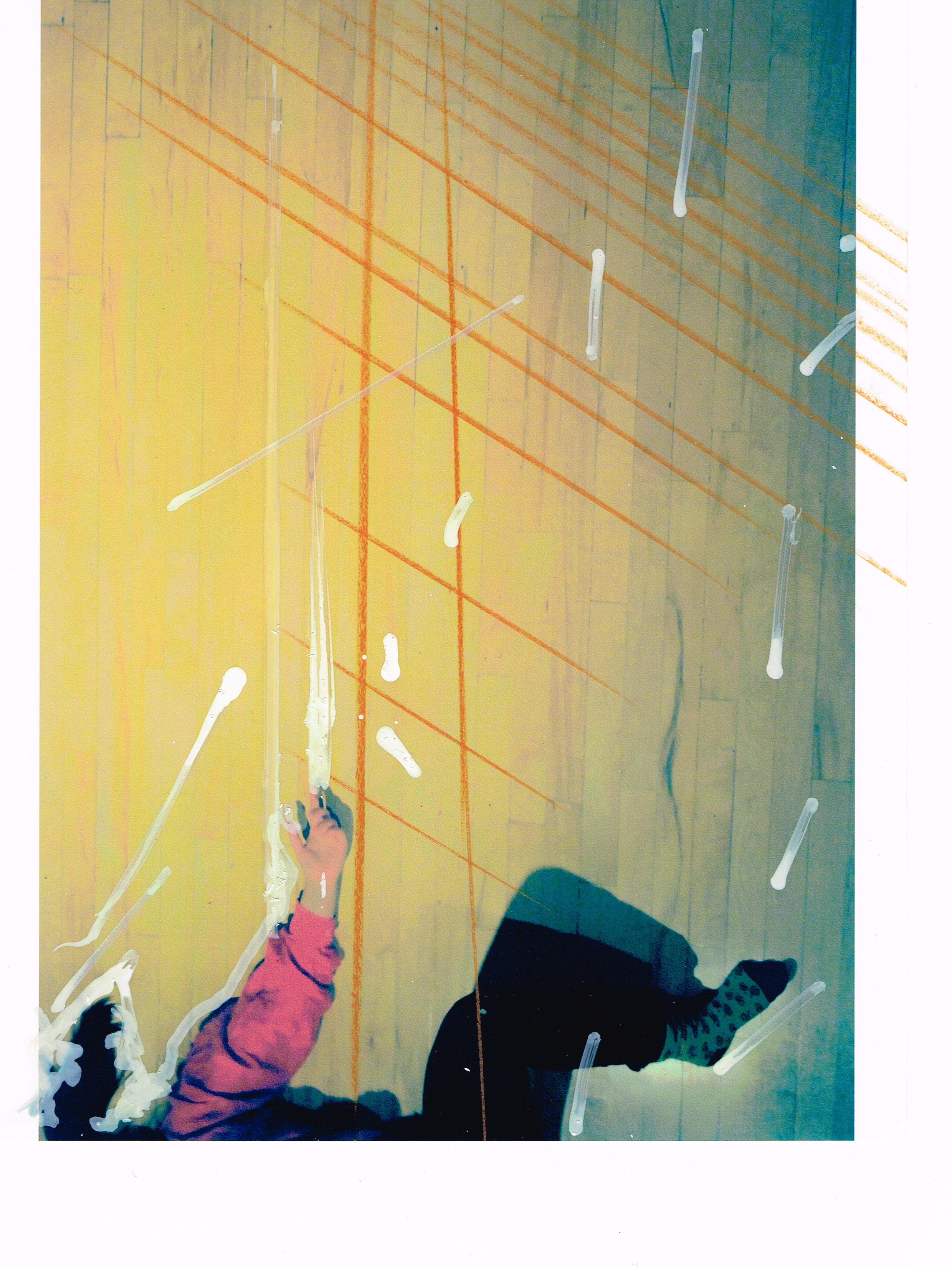
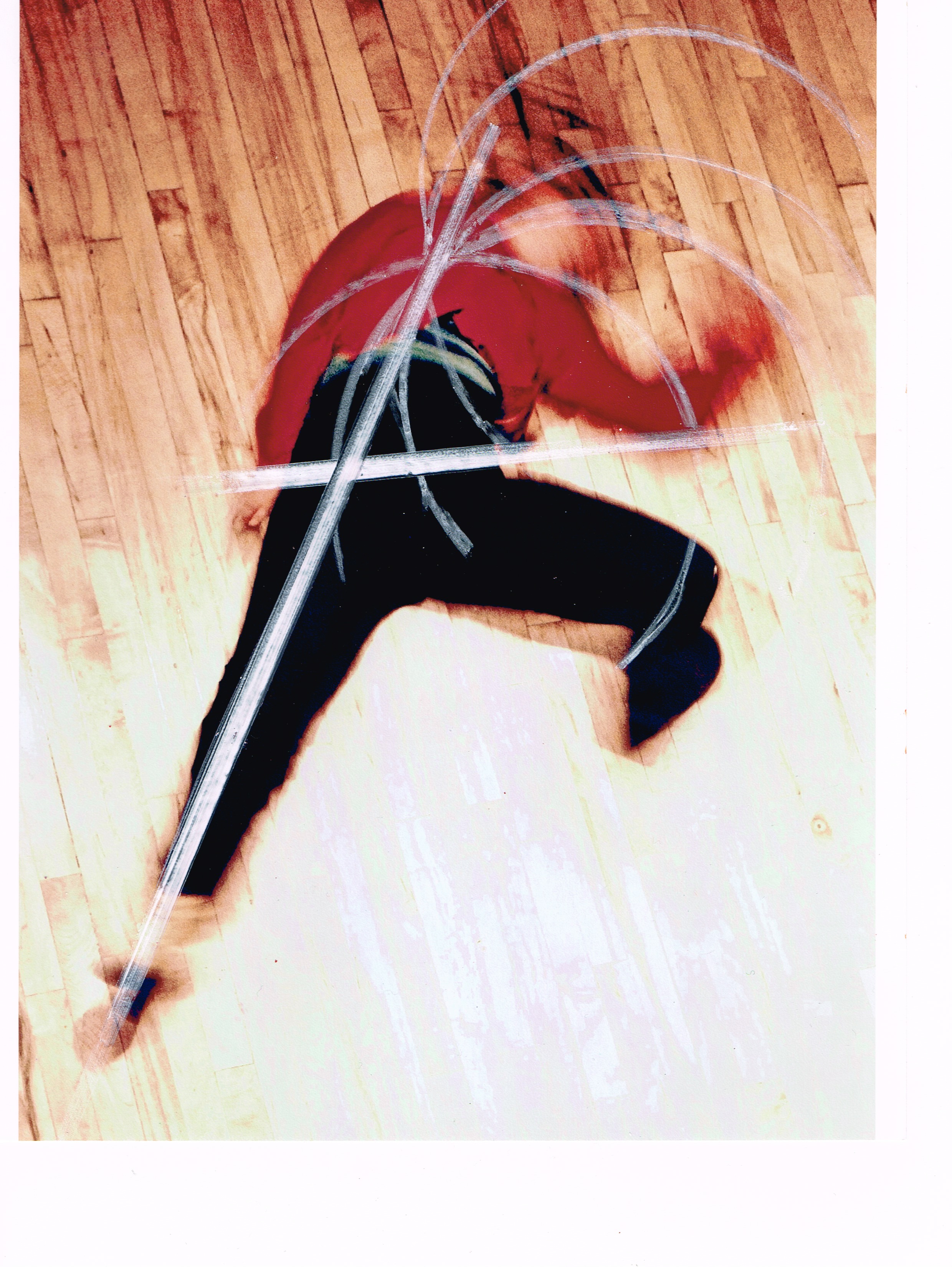
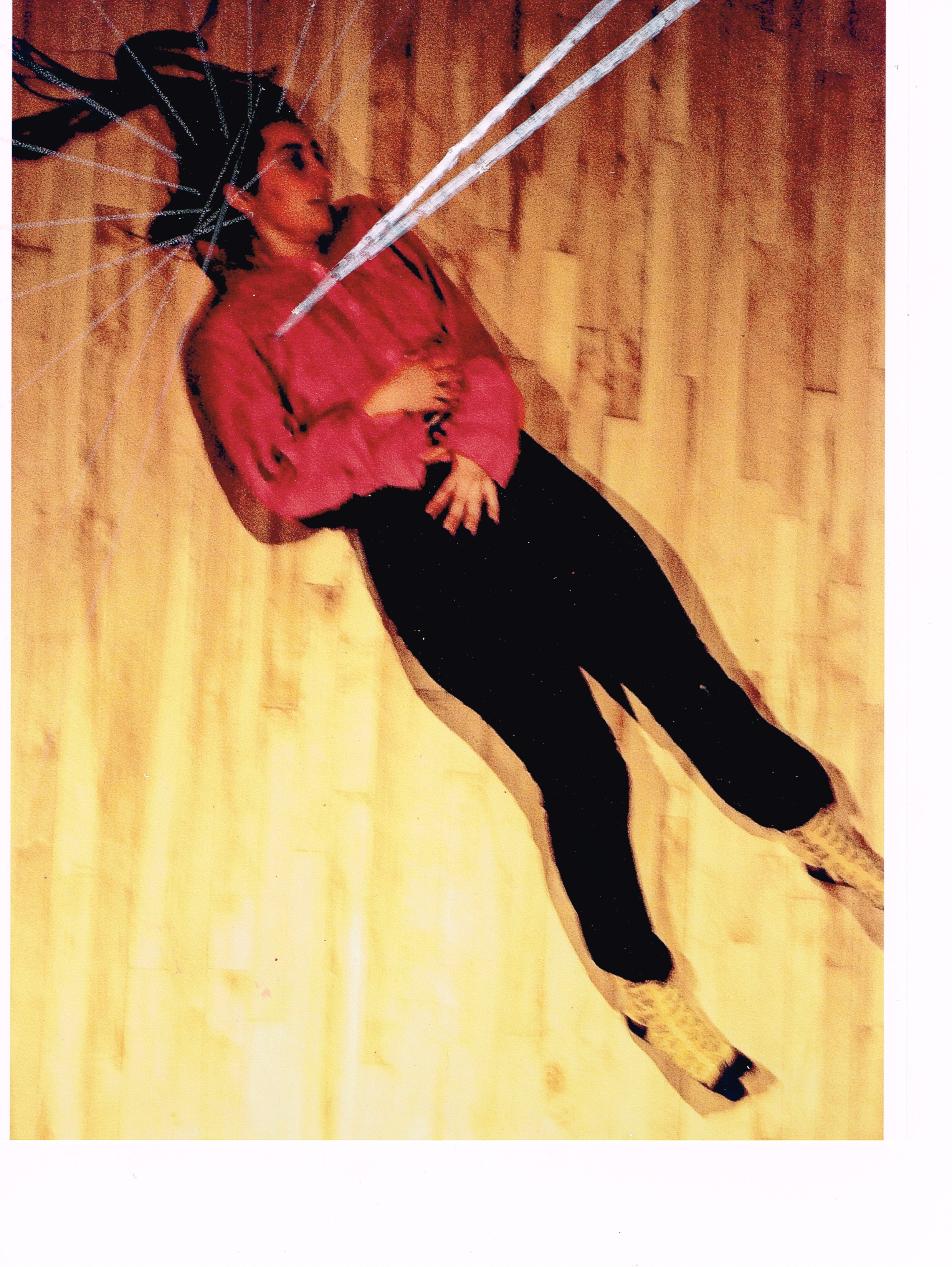
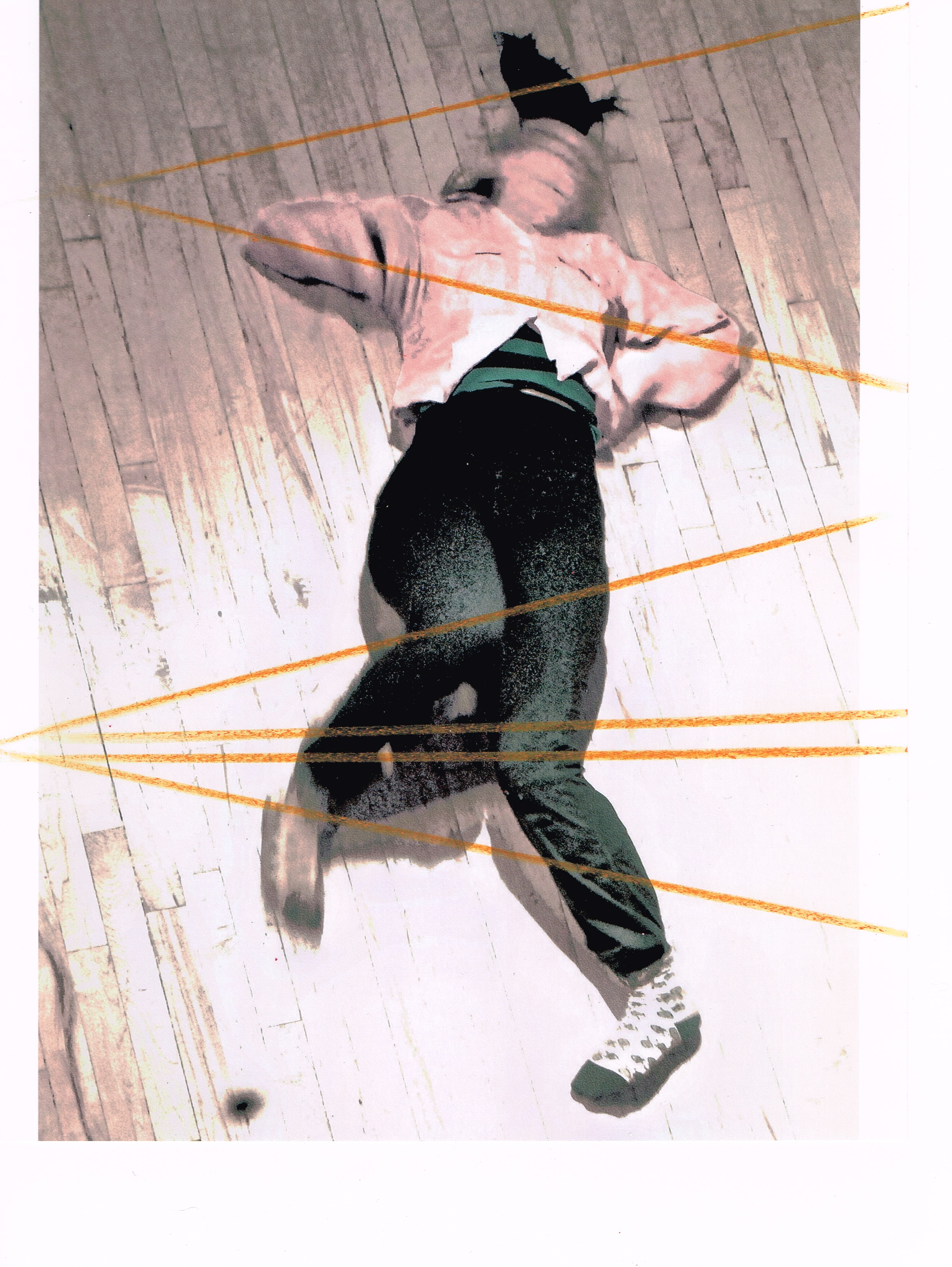
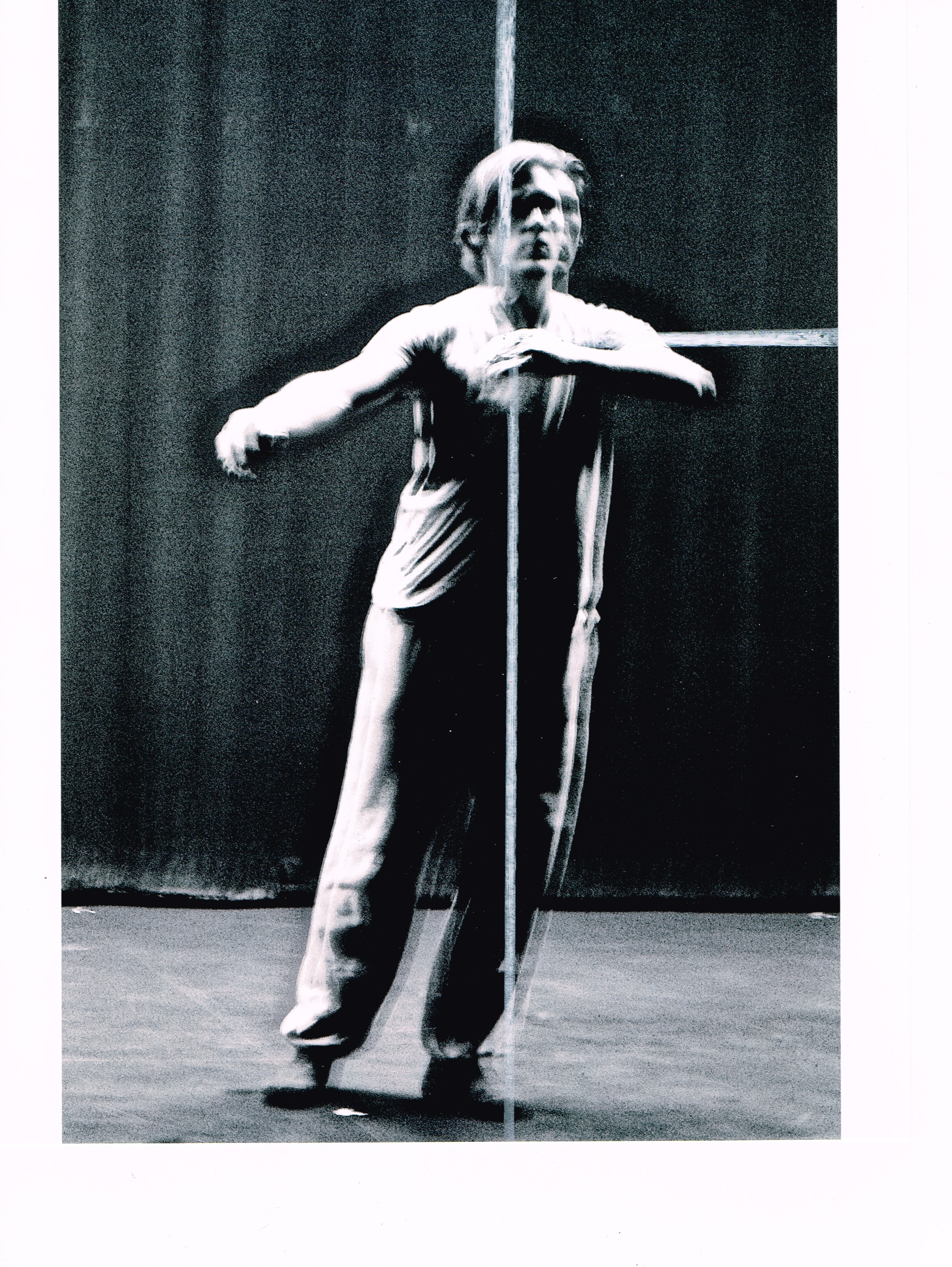
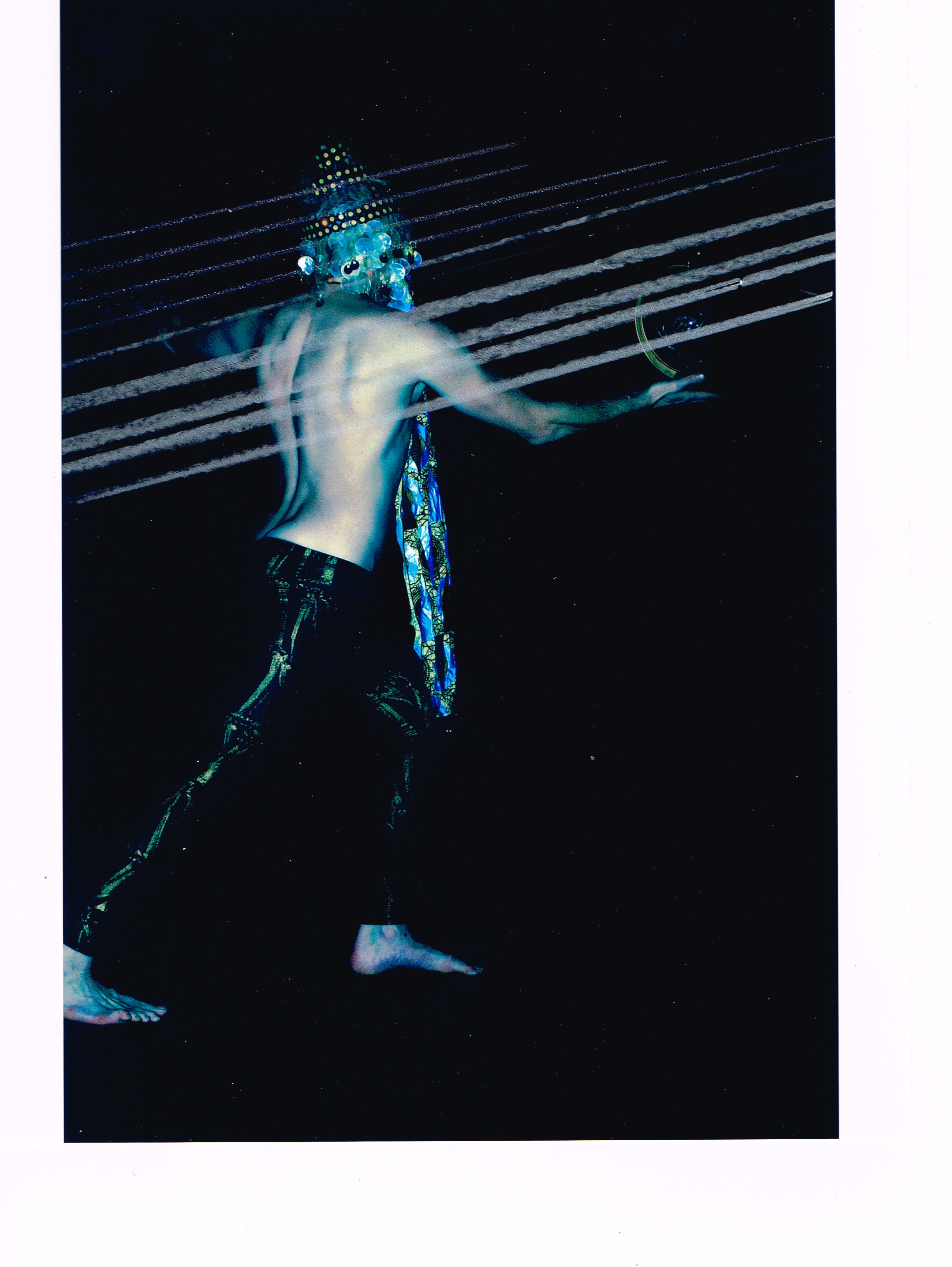
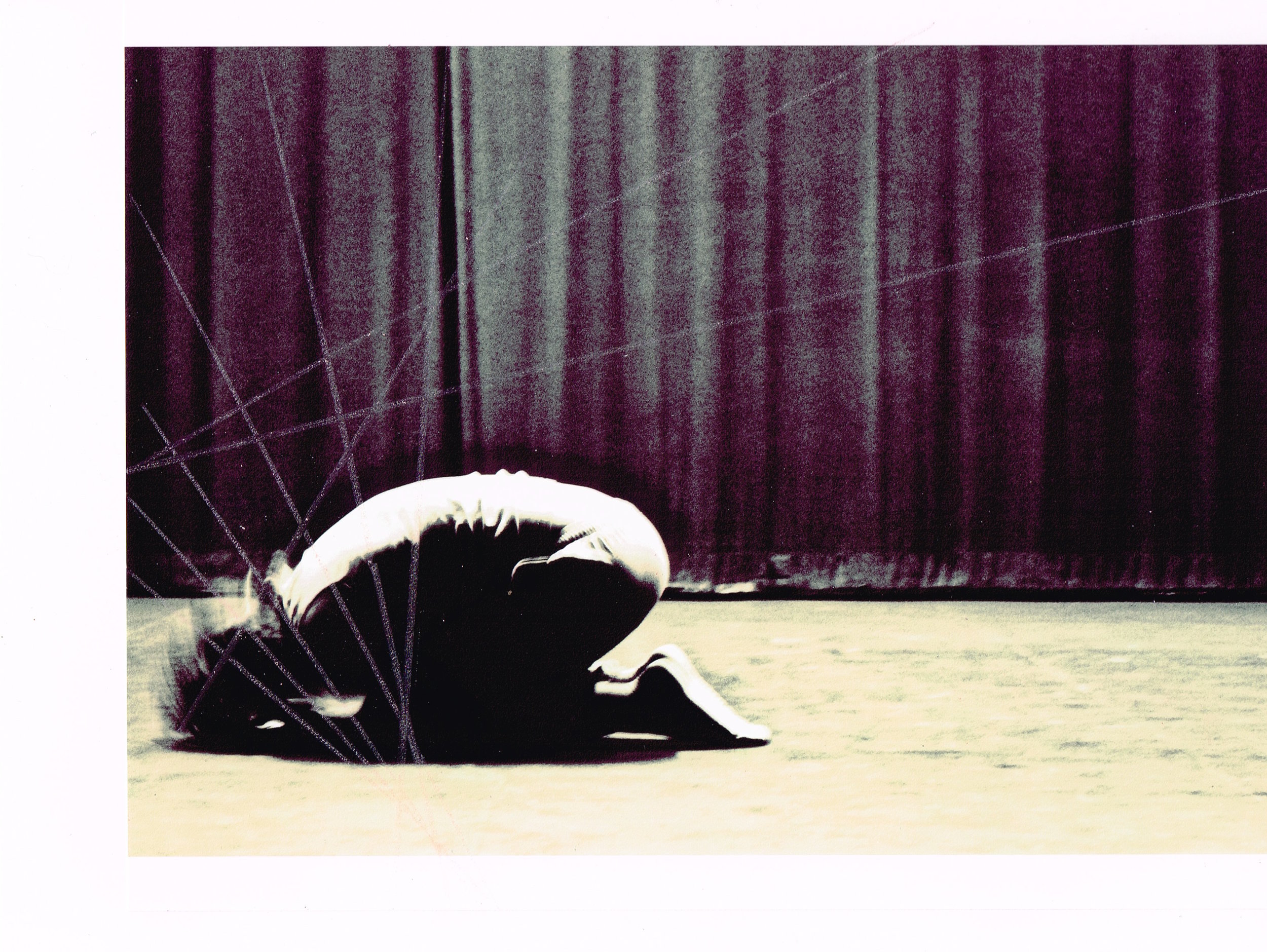
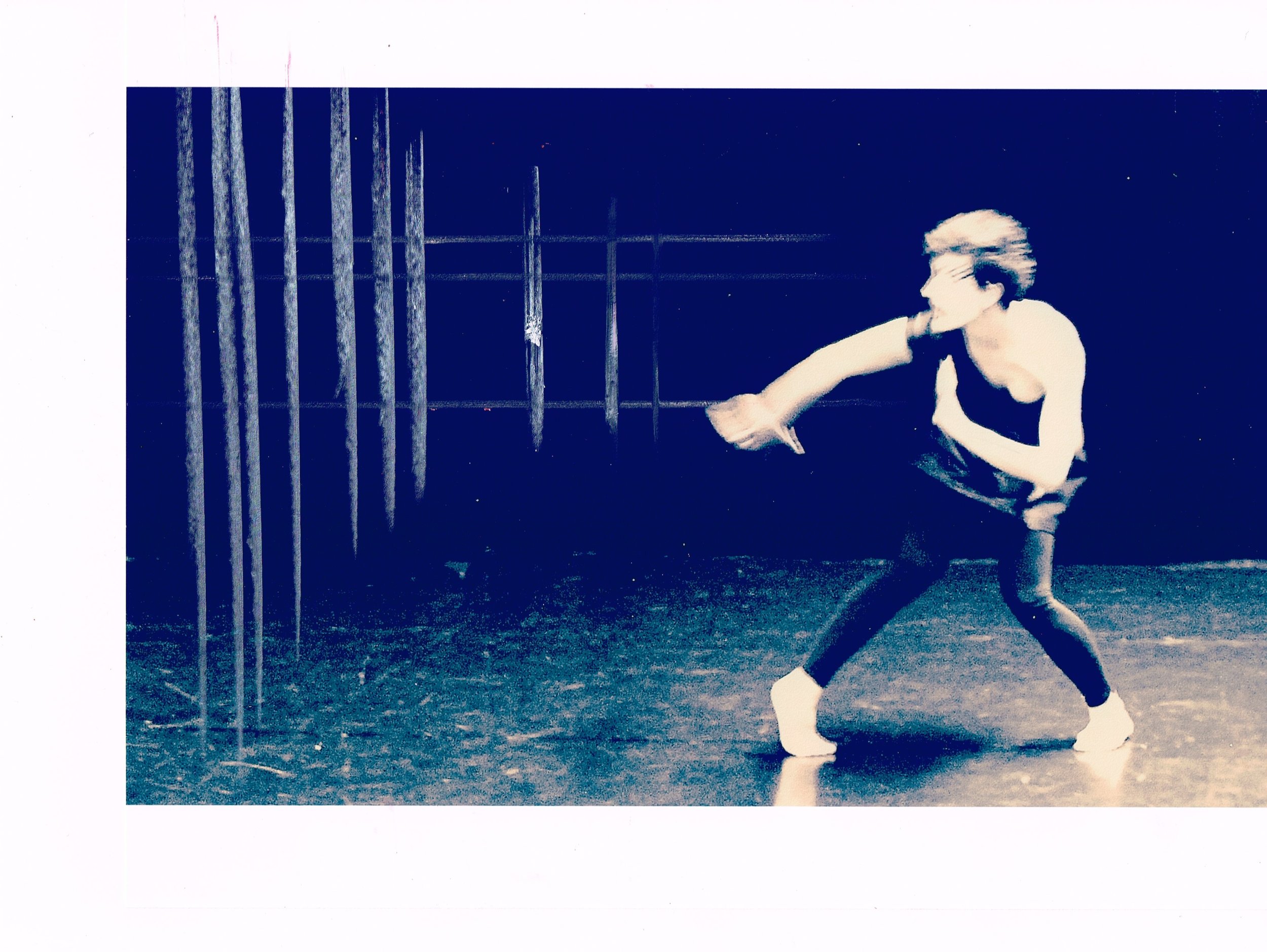
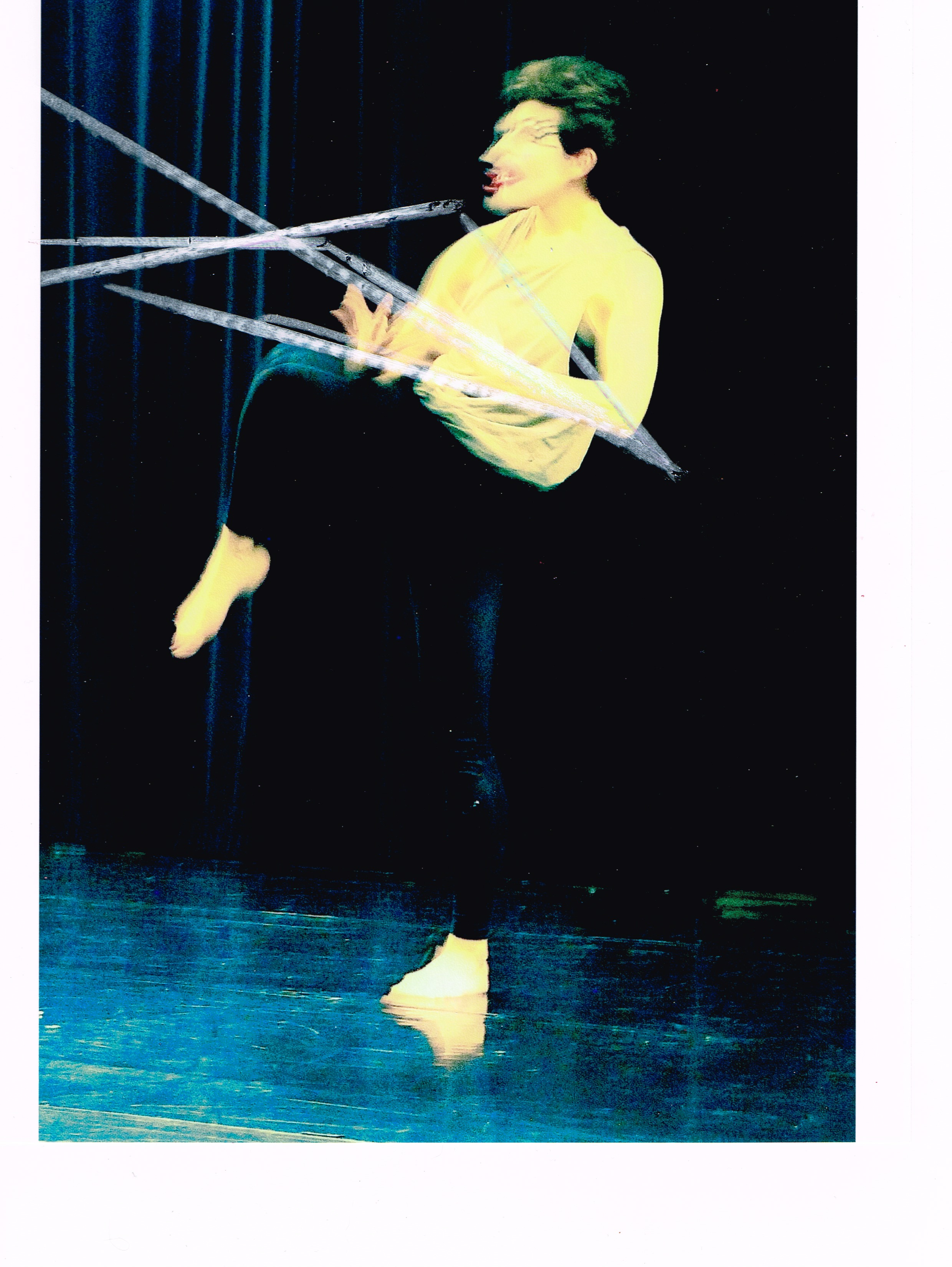
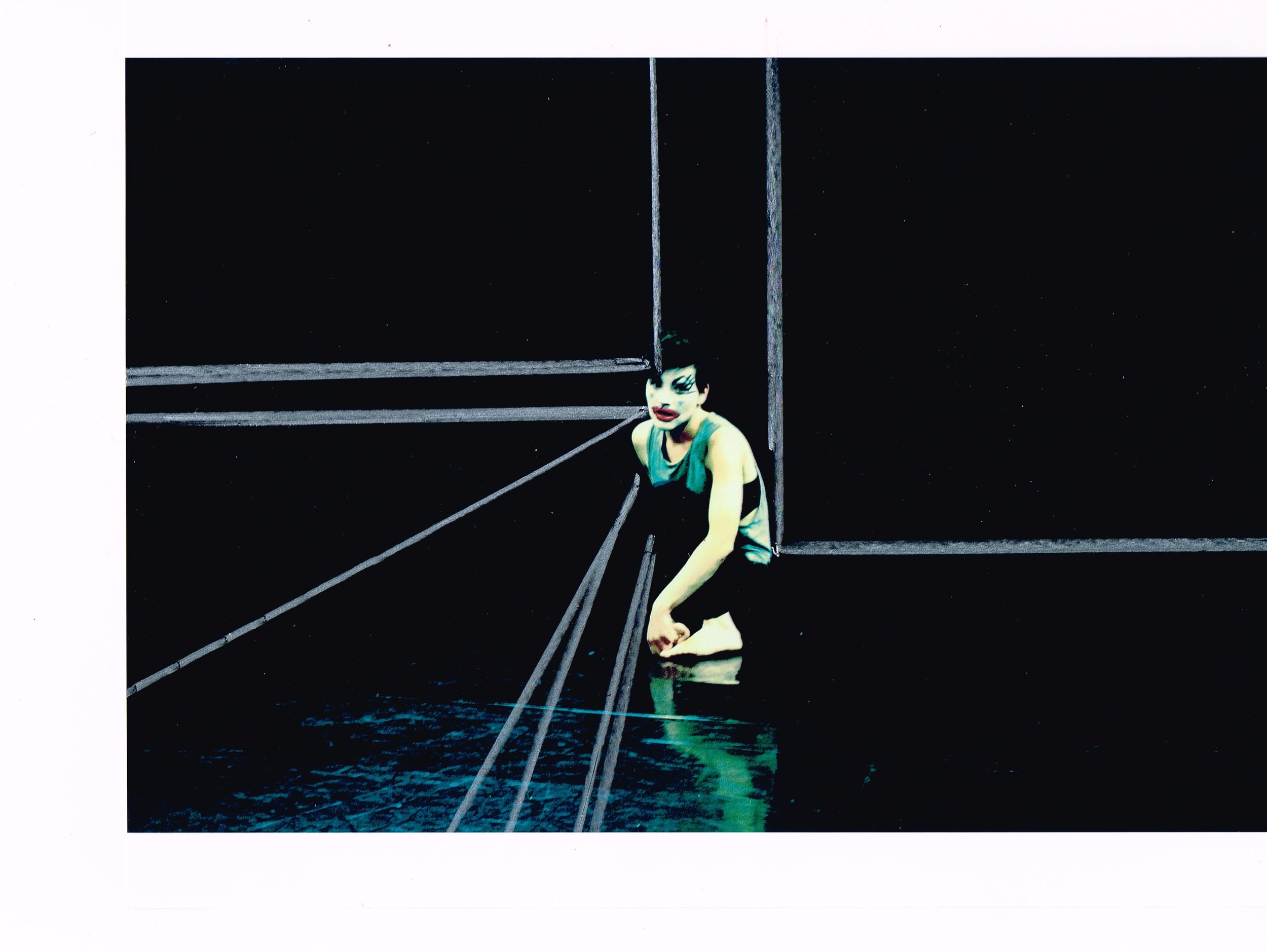
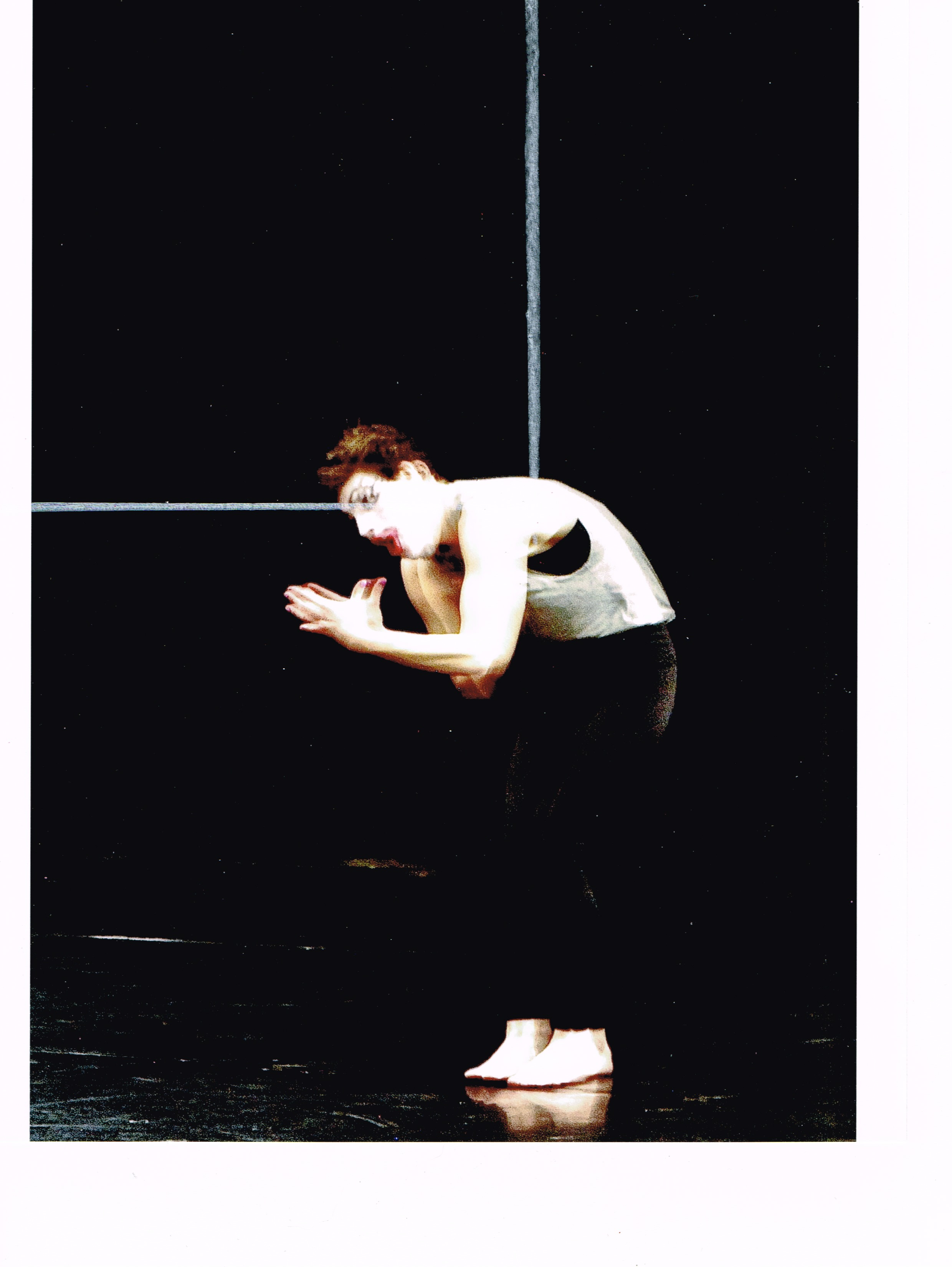
Still ~ In Flux ~ Mercury ~ Robot Empire ~ Heavenly Bodies ~ Ghost
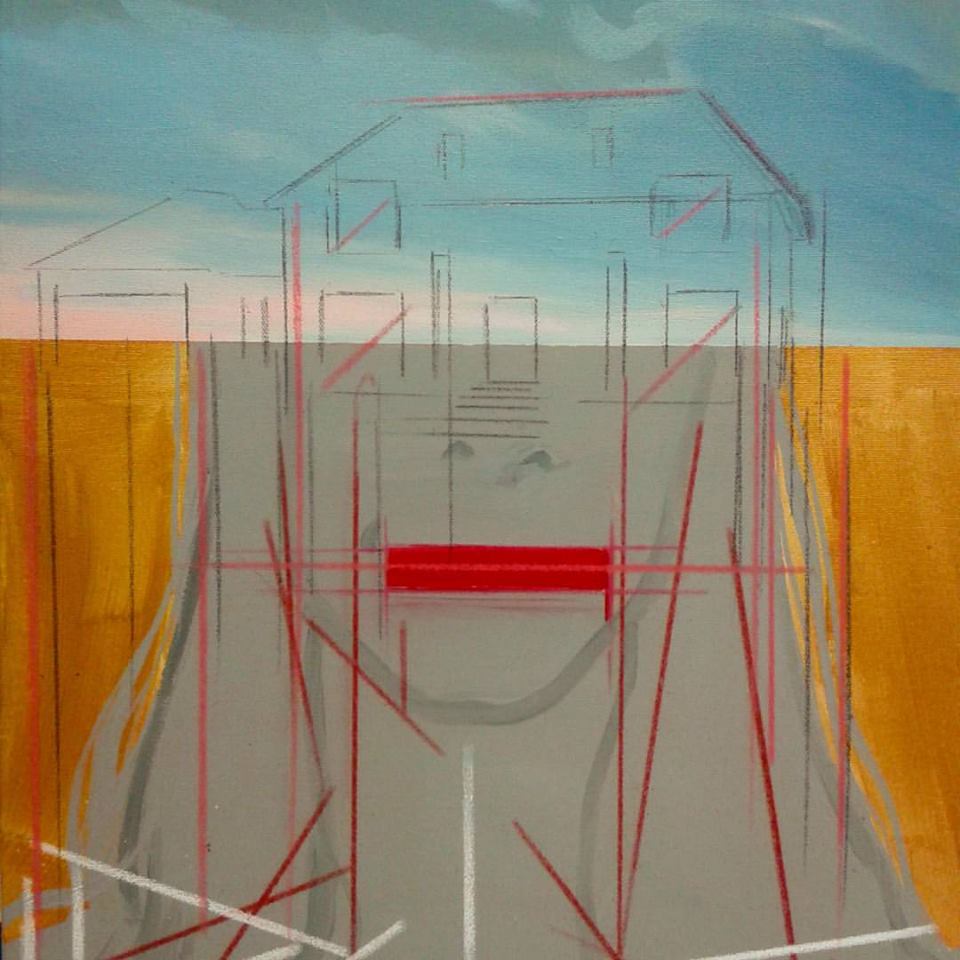



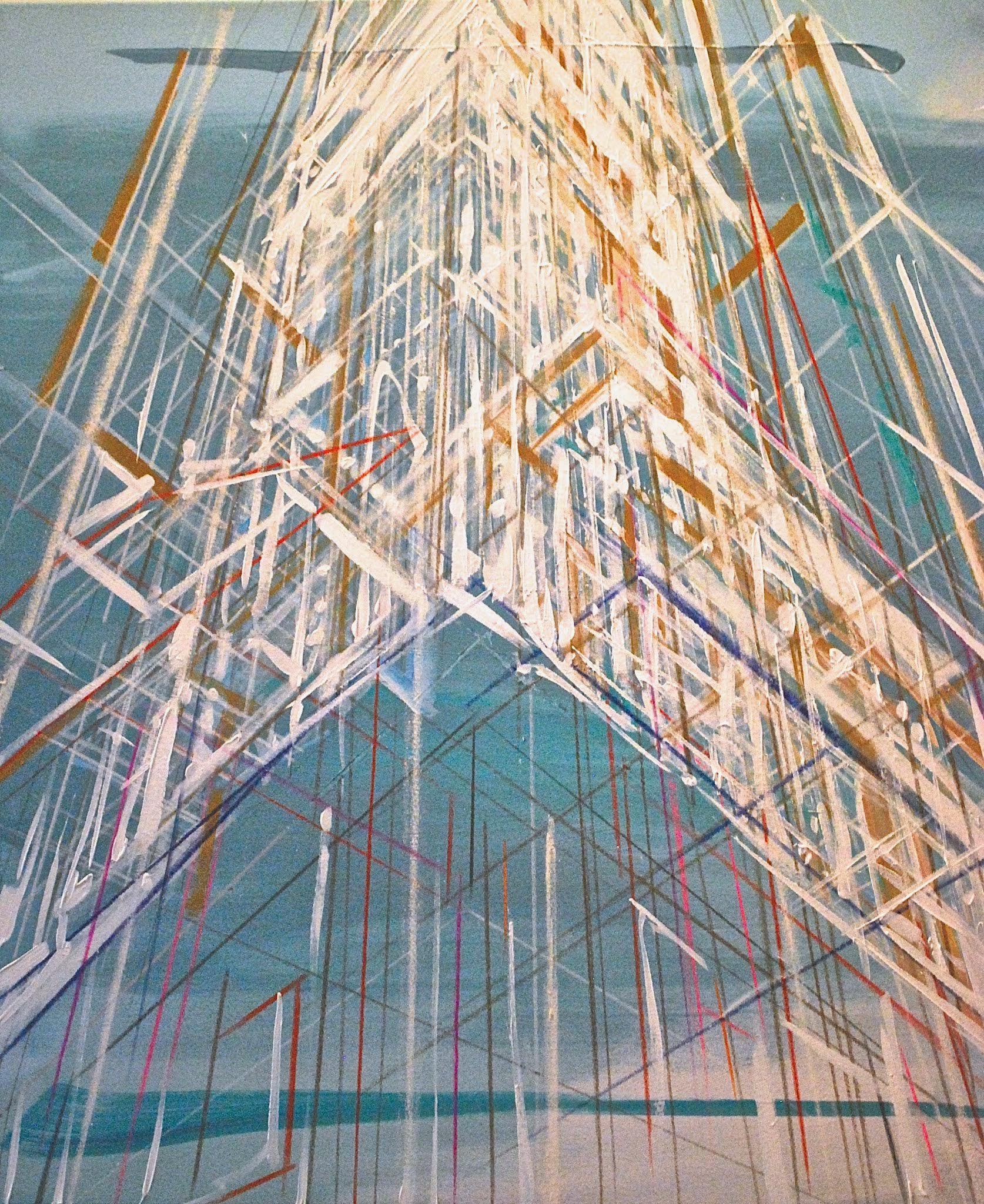

Rehearsal/Research




.jpg)


.jpg)







.jpg)



.jpg)

.jpg)


.jpg)







.jpg)

.jpg)







.jpg)
.jpg)
It’s a Big Mess: Non|Sense Making on a Damaged Planet
By Praba Pilar
I dedicate this talk to Glamdrew Andrew Henderson. I am honored to have been a part of his process with Eroca Nicols and collaborators Carly Boyce and Mars Gradiva. I am grateful he took my secret to the grave.
Life, vida, biome, biotic, creation – always a process, never a state. Whether its biopoiesis, abiogenesis, or that great big bang, maybe its terrestrial, extraterrestrial, artificial, augmented, extended, simulated, telepresenced, ectropic or extropic – we don’t REALLY know if it comes from intergalactic primordial gas or just plain subatomic play. Which brings me back down to Earth.
What is life as we enter the 6th extinction? Can we stay with the trouble?
Can we confront the necrosis at the core of our contemporary CULT OF THE TECHNO-LOGIC? Can we crawl away from the cult of necrotic egocentrism oozing over the world in globalized neoliberal capitalist crapdom?
I am a twinned larvae, segmented by distributed intelligence into rejecting the egocentric unitary self-recruitment of the failed human project. Naming the homo sapien as the human ignores our microbiome, our 90% of our DNA that is not human. [LARVAL SCREAM] In the segmented paramythology of LARVAL ROCK STARS, my twin Anuj Vaidya and I find many historical precedents that have led to necrotic civilization, in which severe damage to one essential system leads to secondary damage to other systems, causing a “cascade of effects”. Necrotic civilization is an ugly show. It arises from ossified states of domination of the Anthropocene, it is based on a lack of proper care, and as it spreads, it releases harmful effects that damages everything around it. As larvae of a post-human era, we effect care, to remake ourselves in the biotic ecocentrism of the larvalscene. Death is not the opposite of life. Many deaths have passed, and many are to come, deaths of more of our languages, of some of our identities, ways of life, comforts, hopes and ideals, of our embodied selves, our non-human kin, our planetary world and world-ed planet. But astride this destructive necrosis are other possible deaths, occurring as a disruptive poesis and an infectious refusal – deaths of unitary truth and stasis that deny our perpetual becoming outside of reason and rationality. These are the deaths we can risk to generate a biotic ecocentrism beyond necrosis.
This brings me to the Young Lungs Research Series – a laboratory providing funding, space and support for research and exchange. Research, for artists, is rarely funded, at least in my experience. But research is critical to an artistic practice, it is in expansion, not product, that a practice grows. The four artists groups in this series intermingled challenges to norms of social relations and dynamics – themes interrogated from different positionality by Frantz Fanon, Erving Goffman and Elizabeth Grosz. Fanon focuses, in Black Skin, White Masks on the oppression, forced masking and destructive alienation of Blackness in a white supremacist world designed for the benefit of others. Goffman, in The Presentation of Self in Everyday Life, focuses on the dramaturgical perspective of social scripting and impression management in everyday life – which in contemporary techno-culture, multiplies exponentially online – Instagram anyone? Or are you too busy photoshopping your feed? In Volatile Bodies, Grosz challenges dualistic binaries by interweaving the internal/external through the model of the Mobius Strip. All of the artists spoke of going beyond technique and training, false authenticity, curated interactions and illusions of control.



Carol-Ann Bohrn’s project was done in collaboration with Madeline Rae, the two met in Ace Art’s Cartae School. The work centered on dichotomies between the subjective inner self and the performance of self in the social sphere. Through this research, Bohrn shared deliberately clumsy articulate and inarticulate embodied and verbal dissonance that demanded: where does the social front negate or support internal subjectivity, where does it mirror, and where does it reshape interiority while risking intolerable alienation?
Sometimes concordant, other times discordant, her movement and speech rode the Mobius Strip inside to outside to inside to outside as a continual loop, because rather than being dichotomous we are pluralities. But it’s painfully hilarious isn’t it – to witness your own shameful accommodations rendered materially visible. We live in sociality, managing varying histories of trauma, and if you thought Bohrn and Rae were going to provide some neatly packaged resolution of the resultant complex conflicts that arise, think again.
Zorya Arrow began with an exploration of intimacy by experimenting with 1 on 1 performances to explore the relationship between performer and audience. But for her this raised antagonisms of expectation that proved to be unproductive. How else to find out, how does who is there, in the how is there, determine the outcome of what is there.
But the difficulties of entering the unknown by not doing the same doing that threatens to become a pattern or a predictable trajectory, led her to instead invite the audience literally behind the curtain to witness her disposition.
Delf Gravert shared WALRUS, I AM, which arose during time he spent in the North. His research raises pressing epistemological questions of what is valorized in ways of knowing – the oral, the textual – and beyond those binaries, the physical, the sonic and other senses? What is a staged work, what is the structure, why do you behave as an audience and who is there to see it – is it the embodied presences in the room, or can we operate multi-dimensionally and recognize we are multitudes of generations of relations that are always, already, in the room.
Delf comes at the questions of affective states and emotive reasoning relentlessly, with uncanny idiosyncratic physicality and humor that at one point explodes in his scream – “I don’t know fuck all!” Well how about that, neither do we.
Andrew Henderson and Eroca Nicols, close friends and co-creators, faced the life altering moment of Glamdrew Andrew’s terminal diagnosis with beautiful courage, bringing Eroca’s study and practice of death rituals to create a Living Funeral as a queer monument to an embracing of that which for most remains shamefully unspeakable.
With collaborators Carly Boyce and Mars Gradiva, they created a joyful and inclusive space challenging cultural denials of death, creating magic in an atmosphere of loving generosity that opened public conversations around death, not only in the performance but broadly through extensive media coverage. It is from our conversations of delusional denial, of how it is ‘A Big Mess,’ that the title of this talk came to be. Andrew Henderson died on Wednesday October 26th.
We are a mess, in a big mess, and current sense-making makes no sense as it forecloses possibility. Creativity unconfined can provide artists the platform to disrupt necrotic sense making, to displace the self and selves, to reinscribe our bodies and then infect others with a refusal, so creation can live aside so much cessation.
I end with the work of Andrew Henderson, Eroca Nicols and collaborators Carly and Mars because they created a performance of consummate generosity – and I think it was covered extensively in the media as it provided a broad and enticing invitation to bring forth a self beyond ordinary sense-making, reaffirming the profound place of love and care, where our shameful secrets and living deaths can go to the grave and we can begin again.
BIBLIOGRAPHY
Carrington, Damian. “World on Track to Lose Two-Thirds of Wild Animals by 2020, Major Report Warns.” The Guardian, 27 October, 2016.
Fanon, Frantz. Black Skins, White Masks. New York: Grove Press, 1967.
Goffman, Erving. The Presentation of Self in Everyday Life. New York: Anchor Books, 1959.
Grosz, Elizabeth. Volatile Bodies: Toward a Corporeal Feminism. Bloomington: Indiana University Press, 1994.
Larval Rock Stars. Chrysalis. Praba Pilar and Anuj Vaidya. < https://larvalrockstars.wordpress.com/>
Mooney, Chris. “What the ‘sixth extinction’ will look like in the oceans: The largest species die off first.” The Washington Post, 14 September 2016.
Pilar, Praba. Photographs of performers taken in Winnipeg, Canada. 2016.
Sarson, Janet. Photograph of Praba Pilar in San Cristobal de las Casas, Chiapas, Mexico. 2010.
Stanford University. “Sixth mass extinction is here: Humanity’s existence threatened.” ScienceDaily. ScienceDaily, 19 June 2015.
Zalasiewizc, Jan. “The Earth Stands on the Brink of its Sixth Mass Extinction and the Fault is Ours.” The Guardian, 21 June, 2015. < https://www.theguardian.com/environment/2015/jun/21/mass-extinction-science-warning>
Healing as Performative Practice: How Gesture Leads To Shared Sisterhood
Healing as Performative Practice: How Gesture Leads To Shared Sisterhood
or
Soil
There are many ways to break
to crumble.
eroding like damp sand
water pushing the grains further and further apart.
a gaping mouth opening to expose the muck beneath the beach,
wanting to be fed
to grow larger
to expand
gobbling up taking in
consuming the land
with a voracious
appetite.
there are many ways to fall to bits.
There is a creek running through the land where my partner grew up
splitting right down the middle of what would otherwise be a perfectly good field.
It acts as a division of ground between his dad’s land and their neighbours.
I say his dad’s land
(as though land can be owned as such)
because it is dad’s land
not his mother’s
after his dad passes on it will become his brother’s responsibility
not his sister’s.
my dad often farmed the land of a woman who lived in Germany
she was older
and owned lots of land.
I always imagined we would have gotten along
that older woman and I.
The earth where my partner grew up is finicky
it is light and gritty and requires frequent irrigation.
It’s good for planting juniper bushes
and potatoes
and that’s about it.
Roots have difficulty taking hold in this kind of earth
as they have to reach very far down
in order to sip the water.
The fields here have poor fertility as nutrients are easily washed away
slipping
through the particles of earth.
This is a far cry from the soil that I have gathered beneath my fingernails
where the mud is thick like clay and the land floods frequently.
Every spring
murky
frigid
water
washing away the tiny stick tombstones you made for dead kittens
and crushed butterflies,
rusting your swing set
scattering white plastic fertilizer pails across the prairies
like some absurd flower girl
begrudgingly walking down the aisle at her babysitter’s wedding
plunking the remnants of
toxic
artificial growth
on the driveways of farmers
who just need their crops to grow.
When my partner was young, this creek was thin
a sliver
that he and his friends could hop across
in order to get to the beach by the reserve.
Every year
the creek grew from dainty scar
to wide gash
to engorged pit
swallowing the spindly sandy soil trees
and eating up land
the father’s land
not the mother’s.
Last summer
(or was it two summers ago)
my partner and I went camping on the land,
pitched a tent where he used to do his chores
mow the lawn
feed the chickens.
We brought along my sister and her partner
for more voices around the bonfire
and to keep away the eerie country silence
creeping down the road
hiding by the gate.
In the morning we went to go find the beach by the reserve.
we started walking
sweating
itching
wearing denim and rubber boots to avoid the ticks
waving on the tall blades of grass
waiting to hitch a ride.
We crawled
slipped
tumbled
into the crevasse
where the creek was
the cavity that used to be so small.
My sister and her partner started to bicker.
We were all victims of a gnawing hangover,
the one that starts right behind your eyes and sits at the very top of your belly
makes you want to vomit at the very thought of eating
or opening your eyelids
to the sun.
We trudged through the crater in the earth
grabbing onto the gnarled roots
of trees that had fallen sideways
the rug pulled out from under them.
With each step we took
dry earth fell deeper into the chasm
sprinkling down the sides
dusting our shoulders
and finding its way into our socks.
Our legs became heavy
after the water bottles were polished off
the bickering lulled
to the hum of cicadas
and pissed off silence.
My partner clambered through the wreckage
of turned over shrubs and beaver dams
hurrying
wide-eyed
disbelief
at how the earth was changing
how the erosion had eaten the land
had chewed at the memory of his childhood
was devouring us.
The following winter
(or was it last winter)
my sister and her partner broke up
the caustic
pissed off silence
had swelled
had disintegrated
had melted the desire
to help with dishes
to come home early from the bar
to forgive.
I guess what I am trying to say is that we all break
we fall to pieces
like the grains pouring
from what should have been a field
basking in sun
the sun that was too hot
too dry
instead
keeling over into the ravine
in search of water
of cool
of healing.
We break because of a weight
a weight that we all carry.
It lives in how we sit on the bus
how we walk down the street at night
alone
keys in our hand
ready
our muscles prepared to cross the street
shift over
run.
This weight casts purple shadows
over the words leaving our mouths
pinching the syllables between the bones of our teeth
until we feel we have said our part
done what we can do
but it remains
a dust cloud
looming over our rickety house frame
of exposed nerves and hair and guts.
It straddles our shoulders
presses on our bra straps
discomfort is a bitch.
This weight
(this bitch of a weight)
propels our hands
to speak when sound can’t
won’t
escape out throats.
It informs us how to purse our lips and shift our weight from foot to foot.
Sometimes
we hate these mannerisms
we resent the fact that it reminds us of someone else
someone we are not.
Sometimes
we relish in the memory
the fleeting glimpses of past selves
past friends
past loves
ghosts that live on
in subconscious movement
we can wrap our arms around these memories
that come out to say hello
in the most mundane of moments.
Regardless
these memories exist because we want them there.
We have plucked them from our history
and tended to them
perhaps with care
rolling the details around in our mouths
like a jawbreaker
trying to keep them alive.
Sometimes these memories bleed onto others
melding into a crusty
congealed
mass.
Things we’d rather forget
throw laundry over
these wisps of recall live within us.
We are the container.
A vessel filled with our history
the history of our mothers
our grandmothers
generations of bodies that have lived and breathed and now take up space
in the soft skin behind our knees
in the tension between jaw and earlobe.
The weight is memory
and the memory helps us move
it is the support
or impetus
that precedes movement.
We develop learned habits with this memory
recollect steps
actions
from watching those before us.
In dance
this muscle memory is used to remember choreography
develop technique.
Without allowing for time
saturation
movement can appear shallow
superficial
skimming across the surface of the stage with the blissed-out grace of ignorance.
It is mid-translation
stuck frozen in the air
words you wish you could retract
swallow back into your throat
Muscle memory allows you to become a character
a different you
past selves/present selves
transform into another being
time and distance
allowing the lines between the authentic and the instructed to blur.
Muscle memory is something we grapple with
we tuck our pelvis
push out our sternum
hyper extend our elbows
yada yada yada
Memory
Muscle
Weight
The weight can become unbearable
pushing down harder when we are asked to smile
when our words are manipulated
chewed up
or completely disregarded
when our experiences are discounted
shoved under the bed
when we are silenced.
We are good at dealing with these setbacks
we have done it before and we will do it again
we will clear our throats
and roll up our sleeves.
Sometimes
the weight clogs our brain
makes it difficult to fathom aspects of our own reality
solutions
we paddle through it’s thickness
attempt to navigate the reeds and the muck.
As much as we push against it
swim against it’s current
the memory propels us forward
upward
outward
wraps its fingers around our wrists and lifts.
The weight is accumulated history
that we drag our bodies through
but it also supports
it’s palms secured under our warm armpits.
Our flesh is a palimpsest
layers of the past
swimming liquid beneath our skin
layers of soil
roots reaching down
grasping.
This history slips out of us sometimes
like how a shell on your windowsill
spills out grains of white sand
years after it has left the water
the curtain lifts in a dark theatre and a beam of golden light breaks through
we open our mouth
press our palms
and out it spills.
We hold it tightly
and yet it leaves us.
No matter what study you read
all researchers agree that physical cues make up the majority of communication
raising our eyebrows
flailing our arms
how we speak with others has more to do with our physical bodies than our words.
Brenda McLean
together with Ali Robson
has been working towards developing a system
with which to analyze
and teach gesture.
Gestures are something that we use every
damn day
yet
when asked to generate on the spot
or to abstract
or interpret
our impulses get marred
and we struggle to find clear pathways.
Their research has opened up a dialogue to discuss these everyday motions
to put into words that which we inherently do
and try not to overanalyze
lest we turn into numb
still
signalling
robots
similar to how Labanotation
took movement patterns
and expressed them through abstract forms
line drawings of figures in space
to articulate movement qualities
sustained
bound
direct
light
so as to teach his students
and archive his work
Brenda and Ali
break down what it means to express
using Michael Chekhov’s list of archetypal gestures
gathering
pushing
throwing
and make it possible to discuss
to have shared language
to teach
they are drawing a roadmap
to assist others with the intention and interpretation of movement.
Watching Ali move from literal motion
to abstract
to interpretive
one could witness the drift
from external
to internal focus
the molten flow of communication
speckled
with moments of literal action
halting
highlighted
feeding the observer with just enough
information to understand and explore Ali’s journey.
Striving to put sand in the pockets
of a fleeting movement
to weigh it down with meaning and intention
calibrating it on a shifting scale
Brenda and Ali boil down what it means to communicate physically
finding ways to capture the flutter of a finger
the jut of an elbow
to trace it and label it and pin it to the page
“like nailing jello to the wall”
the stuttering
familiar movements
the push of an open palm
the gathering of air
combing the manipulations
abstractions
interpretations
of these simple
pedestrian movements
allowed for
“a portal into the universe of the performer”
as mentor Grant Guy expressed.
The viewer is allowed in to this world by these familiar anchors
small weights dropped down into the bottom of the well
presenting an opportunity for the audience to grasp the rope
pull them up
reveal a sliver of light
lead them.
The study of gesture summoned learned behaviour patterns
analyzing what we are born knowing versus what has been taught
or passed down through observation
diaper-bottomed infants do not need to be told how to walk
or reach
or shrug
we take those precarious first steps knowing
despite the shakiness and the weakness
how to put one foot in front of the other.
This is different than the gesture
of bearing weight.
When asked to illustrate this action
Ali
who is pregnant
instinctively brought her hands to her hips
in a motion that implied
domestic exhaustion
women’s work
the female experience
ask a man to interpret this same instruction
bearing weight
and he will most likely bring his hands to his head
expressing frustration
a hurting brain
over a hurting body.
Gesture also implies a sense of memory
each gesture is something we have seen before
taken in
worked through our body
added our own comforts or flairs
we inherit gestures from our parents
our friends
soaking in this bubbling
silent
conversation between bodies
before acting out a gesture we feel it
we internalize it
we allow our memory to support the movement
the memory is the impulse for the movement
we feel it
and our bones follow.
Gesture is an imprint of our memories
an expression of our memories
communication between our past and present selves.
For Kristy Janvier
gesture and intention
run parallel to commonalities among individuals
to connectedness
and wholeness
to the body holding memory
and memory travelling down the bloodline.
Working with Emily Barker
Lise McMillan
and Rayanna Seymour
Kristy seemed to find herself drawn to the fact that even though the group of artists came from
various backgrounds
they all had shared experiences
as Kristy puts it
even though they all came from different side of the mountain
they had arrived at the summit together.
Water is of interest to Kristy
how we can exert energy onto water
how water can conduct energy
bodily fluids
the water within our shell
the water that is moved by our bones
by our memory
water pathways
rivers as roads
leading people home
guiding those who are lost
the life force that enables communities to grow
the blood veins beneath the earth’s surface.
Harkening back to a certain Dr. Masaru Emoto
the Japanese researcher
who administered various energies
happy
sad
confident
beautiful
ugly
onto collections of water.
He would write these affirmations onto the jars of water
and when frozen
the water would form crystals.
Dr. Emoto found the shape of these crystals
to be a reflection of the affirmations written on the jars.
Water with positive affirmations froze into intricate
stunning
symmetrical shapes
while the water burdened by negativity clustered
into asymmetrical
jagged
tumour-like forms
with this study in mind
Kristy collected water samples from the red river
a river that at one time had been the highway
for people in the community
where families would swim and paddle their canoes
build homes near
had turned into the source of news tragedies
bodies discovered on the muddy shores
bodies of women
bodies of indigenous women
wishing to heal this water
heal the past
heal communities
and those in pain
kristy
emily
lise
and rayanna
speak to the water.
During one of the first brutally cold days of winter
the group of us
kristy
emily
lise
rayanna
and i
were tucked away in a studio in the exchange
the room was being warmed by heat fans
scattered around the space.
Every once in a while the power of the fans
would cause the breaker to blow
cloaking us in cold
reminding us of the city we were in.
As the energy
the light
returned
Rayanna came down the hallway in her traditional jingle dress.
The jingles glowed rose gold
in the warm light of the heater.
She began to dance.
Her moccassin-clad feet
hitting the hard wood floor
with each down beat
the jingles moved to their own rhythm
a call and response
they were the light
dizzying
rain
in contrast to the steady rumbling of a thunderstorm.
Rayanna had constructed the dress herself
stitching on each jingle
going back with a needle and thread to fix any mistakes
she might make
the dress
the dance
has become an emblem of dancing for those who cannot
the response of the jingles a far away call
an echoing catalyst.
Memory lives in each step
each movement in the dance
even how the dress is made is passed down
through families
through communities
through generations
the dress dances for those who can’t.
Focusing on the energy of the water
the process became an act of women healing women
the power of touch
of breath
of connectedness
by healing the water through osmosis
the women were doing the same with each other.
healing through dance
healing memories through movement.
by accessing the healing
power of support
and the hands of a strong community of women
togetherness
and peace
were articulated
found
and fostered.
Jaime Black
through work with natural props and improvisation
asked the question of
why we must heal
and how we could possibly
brave on
continue
succeed.
Working with Lise McMillan
using sculptural images
the two women
inquired about our connection to natural objects
the weight
and the energy that these items hold
sticks gathered in the woods
a scratchy wool
Bay blanket
stones from lake huron.
How can we alter the energy of an item?
How can we use it to heal ourselves?
Each other?
Images of the natural body
the female body
rose to the surface of the practice
a ball of red yarn
when pulled
bundled
and manipulated by the two sets of hands
evoked intestines
blood clots
veins
umbilical cord
a heart.
Similar to our own flesh
the items hold memory
carry the past.
It is our responsibility to release that
acknowledge the energy.
By using the props,
she is taking ownership of their use
taking ownership of the associations attached.
In one exercise
we took the broad
flat
stones
gathered from the large lake
that borders Ontario and Michigan
They had been sitting in Jaime’s car overnight
and they were icy
we held them in our hands
rubbed them in between our palms
attempting to warm them
we pressed the cool stones
against our warm bodies
onto sternums
thighs and bellies
creating calm
meditation
healing
Similar to the stones taking in cold
or heat
our bodies absorb what is around us
releasing it through gesture
through movement
and dancing
Jaime and Lise would often return to images of women working
wringing the blue blanket
scrubbing the studio floor
gathering wood
task-oriented jobs that contained pedestrian
or functional
gestures
By bringing nature indoors
uniting elements of organic beginnings
with the artificial
The two women allude to a melding of two worlds
two cultures
two backgrounds
two histories.
Swaddled in the blanket
a place of security
or confinement
or carrying one another on their back
images arose of women helping women
women healing
from places of strength and togetherness
ceremony.
The weight
inherent in women’s lives
in all our lives
the weight that can feel so crushing
is supported by our sisterhood
the works in discussion present a matriarchy
a community evoking compiled memory
physical wisdom
women healing women
and action
action for change.
we wail
we throw our bodies against the wall
someone must be listening
someone has to be listening
who do we even want to hear us
and if they do
will they understand our language.
we break
in search of healing
crumble like sand towards the water
cool rocks on warm bodies.
we heal each other
women healing women
connected by blood and intention
we rise, together
we huddle in ceremony
create our own rituals
turning fluorescent bulb to warm sun,
sucking the energy from the windows,
the dusty snow fall.
oscillate to form new patterns,
new ways of connecting
of restoring.
And so we move
boldly
hopping in home-made jingle dresses
creaking on hardwood floors
in front of the whirr of a heat lamp
we dance for those who cannot.
we do women’s work
women’s gestures
that is what we know.
we know these learned behaviours from lines of mothers
grandmothers
wrinkled hands wringing cloth
cleaning
scrubbing wet wool
sewing thread through leather
bearing the weight of a pregnant belly
female bodies are a shelter
bearing weight
containing responsibility
holding strength
energy.
This healing as performative practice
to be healed
and to see other people being healed
is vulnerable
restorative.
It suggests a tool to take into our everyday
a safeguard
a reminder
of who has your back
a reminder to be present.
Not only does your sisterhood
have their hands open
palms exposed
ready to catch you
but your body
holding history
holding memory
knows how to heal.
how to repair.
how to preserver.
We dance for those who cannot.
Water, Rocks and Phones
WE’RE HIRING
We’re Hiring!
Young Lungs Dance Exchange facilitates a range of projects centered on dance creation and presentation,
and on professional development opportunities for dance professionals. The organization’s
activity caters to the needs of emerging and established creators & performers. It is through
these activities that YLDE supports the growth of performers, choreographers, educators and
the arts community at large.
YLDE is committed to nurturing the beginnings of the creative process when artists are most
engaged in experimentation, research, building new ideas and discovering new collaborations.
YLDE believes that physical expression is a political act, that dancers, makers, thinkers of
dance are contributing to our physical understanding of ourselves and of the world around us,
and that fostering the arts leads to a society with creative problem-solvers, a resource
invaluable to humanity.
See links for details.
MARKETING & COMMUNICATIONS COORDINATOR
Please submit a cover letter and resume by August 30, 2018 to Leigh Anne
By email: [email protected]
Or Mail: 306 Edwin St. R3B 0Y6 Winnipeg MB
